

Waldorf Graduates Pursue Meaningful Careers
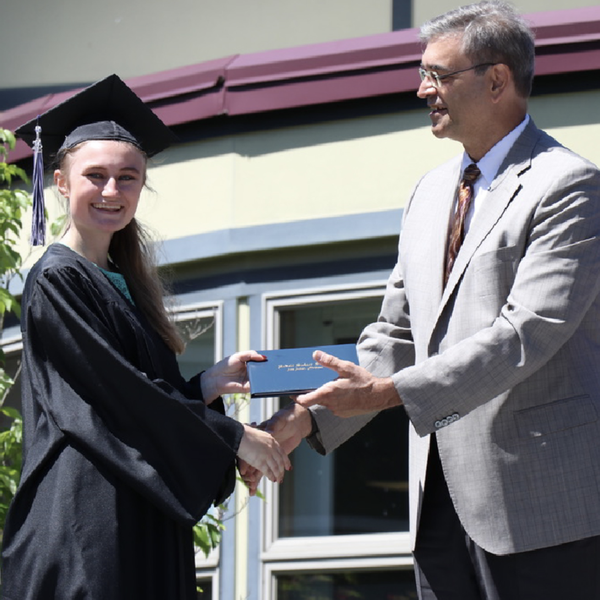
Will My Child Succeed After Waldorf High School? The Research Says Yes
Choosing a high school is a critical decision, and parents often wonder: Will this education prepare my child for college, career, and life?
For families considering Waldorf high schools, this question is especially relevant. With experiential learning, seminar-style discussions, and an interdisciplinary curriculum, can Waldorf truly equip students for fields like medicine, law, technology, and business?
Decades of research say yes.
Waldorf Graduates Excel in Higher Education and Careers
A 60-year study (Survey of Waldorf Graduates, Phase II, Mitchell & Gerwin, 2007) found that:
- 94% of Waldorf graduates attend college.
- 42% major in science-related fields—more than double the national average.
- Many earn advanced degrees in medicine, law, engineering, business, and the arts.
- Alumni thrive in fields ranging from finance and research to entrepreneurship and sustainability.
Waldorf Alumni Spotlight: Science in Action
After earning a degree in Earth Systems Engineering from the University of Michigan, Gavin Chensue ('06) joined the NOAA Commissioned Officer Corps, leading critical climate studies worldwide.
"Steiner education gave me a taste of everything. When I needed direction in college, I remembered how much I loved studying weather and geology—and that led me to where I am today." - Gavin Chensue (RSSAA '06), Research Engineer at SRI International, Former NOAA Corps Officer
His story highlights how Waldorf graduates succeed in STEM, combining curiosity and real-world problem-solving to make a global impact.
Read the full studies:
- Survey of Waldorf Graduates, Phase II: https://www.waldorfeducation.org/research
- Into the World Study: https://www.waldorfeducation.org/graduate-outcomes
What Makes a Waldorf Education So Effective?
Contrary to the belief that test-driven education leads to success, research shows that employers and universities highly value graduates who:
✔ Think critically and independently
✔ Communicate clearly and persuasively
✔ Collaborate effectively
✔ Solve complex problems
✔ Adapt to a changing world
These are precisely the skills Waldorf high schools cultivate.
1. Depth Over Memorization: Lifelong Knowledge Retention
Rather than rote memorization, Waldorf fosters deep understanding:
- History is explored through primary sources and narratives.
- Science emphasizes hands-on experiments and independent research.
- Mathematics focuses on real-world application.
- Literature and philosophy encourage analytical discussions.
One employer noted:
“Waldorf students don’t just look for the right answer—they explore the why and how behind complex issues.”
2. Seminar-Style Learning Develops Exceptional Communicators
Waldorf emphasizes oral presentations, debates, and collaborative discussions, preparing graduates for leadership roles in law, finance, business, and medicine.
Dr. Ilan Safit, co-author of *Into the World*, states:
“We consistently hear that Waldorf graduates excel at teamwork and leadership. Their ability to articulate complex ideas is a major asset.”
A study from Da Vinci Waldorf School found that Waldorf students select careers based on values and passion rather than prestige or income.
Final Thoughts: The Research Speaks for Itself
Professors and employers highlight Waldorf graduates’ intellectual curiosity and ability to think independently.
With strong college attendance rates, success across multiple professions, and the skills needed to navigate a complex world, one thing is clear:
Waldorf graduates don’t just succeed—they thrive.
Professors and employers highlight Waldorf graduates’ intellectual curiosity and ability to think independently.
With strong college attendance rates, success across multiple professions, and the skills needed to navigate a complex world, one thing is clear:
Waldorf graduates don’t just succeed—they thrive.
Read more on Waldorf Graduates
Selecting a High School
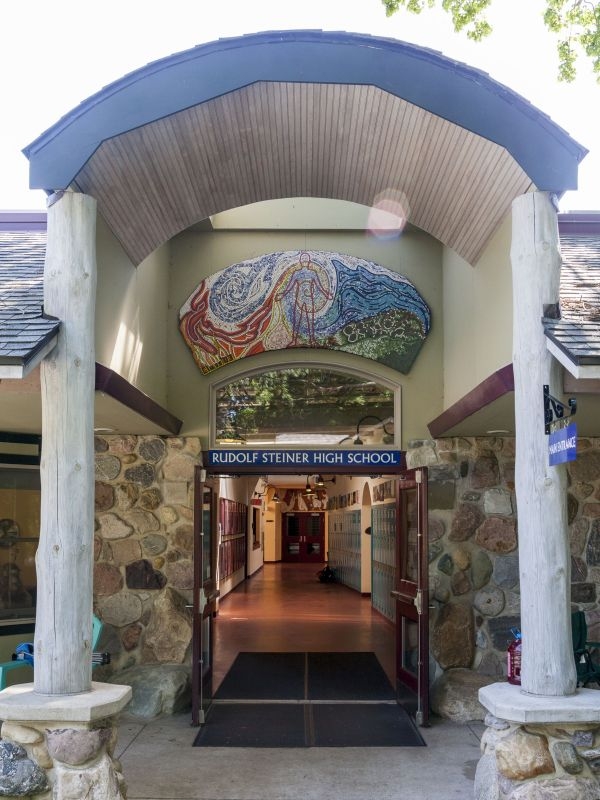
Selecting a High School
Advice from Veteran Waldorf Educators
Choosing the right high school can feel like one of the most significant decisions a family will make in their child’s educational journey.
To bring clarity to this decision, we turned to two of our most experienced educators at the Rudolf Steiner School of Ann Arbor: Margot Amrine, a longtime Waldorf teacher with over four decades of experience, and Dr. Siân Owen-Cruise, our former School Administrator, who has guided countless families through the high school selection process.
Today’s parents listen to and respect their children’s perspectives more than ever before- a positive shift in family dynamics. But as Margot reminds us, that doesn’t mean parents should surrender their leadership on big decisions.
“In our family we said that Waldorf Education for 9th and 10th grade was essential. At 11th grade, a different kind of maturity sets in; if our children had made compelling reasons to leave then, we would have considered. We never had these discussions!”
Dr. Owen-Cruise expands on this, acknowledging that social pressures play an outside role in an 8th Grader's thinking:
“It's natural for teenagers to focus on their peers and social dynamics when thinking about high school. As parents, we listen, we understand, and we take their feelings seriously- but ultimately, we need to lead this decision with wisdom and foresight.”
Dr. Owen-Cruise often frames the conversation with the rising student in the following way:
“Your parents will choose where you receive your high school education, with your input. YOU will choose where you go to college, with our parental input.”
Many families who have walked this path find that their children- whether they started in Waldorf Education or joined from another school-ultimately express gratitude that their parents guided this decision with their long-term development in mind.
Here are some other helpful tips and information when thinking about our own High School:
Waldorf Graduates Pursue Meaningful Careers
“Will My Child Succeed After Waldorf High School? The Research Says Yes” - Blog Article
Parents often ask: Does a Waldorf education prepare students for college, careers, and beyond? The answer is a resounding yes. Studies show that Waldorf graduates not only attend college at high rates but also excel in fields like science, medicine, law, and technology. Employers and universities consistently praise their ability to think critically, communicate effectively, and adapt to a changing world. Want to know why? This article dives into the research and real-world successes of our alumni.
The Joy of a Phone-Free School: How Our Students Thrive Without Screens
"The Joy of a Phone-Free School: How Our Students Thrive Without Screens" - Blog Article
In an age where screens dominate every aspect of life, imagine a school where students engage in real conversations, dive into hands-on projects, and focus fully in class—without the pull of notifications. Our phone-free policy isn’t just a rule; it’s a game-changer. See how it shapes our students’ social and academic lives!
The Joy of a Phone-Free School: How Our Students Thrive Without Screens
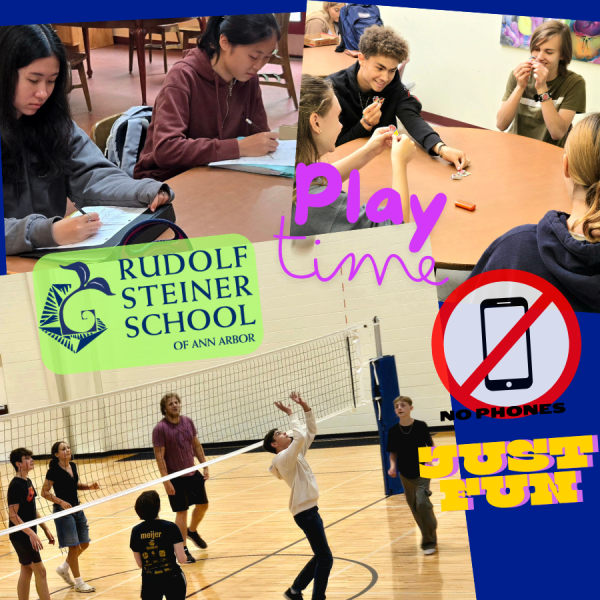
The Joy of a Phone-Free School: How Our Students Thrive Without Screens
Imagine a typical school day where students, between classes and during breaks, are glued to their smartphones—scrolling through social media, playing games, or texting. Conversations are sparse, eye contact is minimal, and the vibrant energy of youthful interaction seems subdued. Now, contrast this with a school environment where smartphones are set aside: students engage in lively face-to-face discussions, participate in spontaneous games, and immerse themselves fully in classroom activities without the constant pull of notifications. This is the reality we’ve cultivated at Rudolf Steiner School of Ann Arbor, embracing a phone-free policy that fosters genuine connections and holistic development.
The Deeper Engagement of Phone-Free Education
At our school, we’ve observed that removing smartphones from the school day does more than just eliminate distractions—it rekindles a deeper, more meaningful engagement among students. Freed from screens, students rediscover the joy of direct communication, collaborative problem-solving, and hands-on learning. This environment aligns seamlessly with the principles of Waldorf education, emphasizing experiential learning and nurturing the whole child.
We Are Phone-Free, Not Tech-Free
While our school maintains a phone-free environment during school hours, we are not devoid of technology. In fact, our curriculum incorporates technology in age-appropriate ways to ensure students are prepared for the digital world:
• Middle School: Students are introduced to computers and the internet in an intentional way that supports learning. Additionally, our middle school robotics club fosters interest in technology and engineering through hands-on projects. https://www.steinerschool.org/programs/extracurricular-activities.cfm
• High School: Our state-of-the-art computer lab facilitates courses in coding, digital literacy, and other computer science subjects. We also have an active high school robotics club where students collaborate on competitive projects that develop real-world problem-solving skills. https://www.steinerschool.org/about-us/waldorf-education.cfm
Many of our graduates go on to thrive in technology fields, excelling in computer science, engineering, and data analysis. Research shows that Waldorf graduates develop strong interdisciplinary thinking skills that prepare them for success in fields that require both creativity and technical expertise.
Leading the Way in Ann Arbor
Our commitment to a phone-free school day positions us as pioneers in the Ann Arbor educational community. While some other local schools have implemented partial restrictions, our comprehensive approach ensures that students remain unplugged throughout the day—including breaks and transitions between classes.
Several Ann Arbor schools are recognizing the value of limiting phone use:
• Forsythe Middle School and Tappan Middle School both require students to keep phones in lockers during school hours. https://forsythe.a2schools.org/our-school/cell-phone-policy, https://tappan.a2schools.org/our-school/cell-phone-policy
• Huron High School has introduced classroom phone storage policies in its Mathematics and English departments to help students stay focused. https://thehuronemery.com/9731/news/cell-phone-use-teacher-led-procedures-to-enrich-student-experience/
The Transformative Power of Disconnecting
The shift to a phone-free environment has yielded profound benefits:
• Enhanced Academic Focus: Without the allure of smartphones, students engage more deeply in lessons, leading to improved comprehension and retention.
• Strengthened Social Bonds: Face-to-face interactions during breaks and collaborative projects foster authentic relationships and empathy among students.
• Improved Mental Well-being: Reducing screen time has been linked to decreased anxiety and stress, allowing students to be more present and mindful.
Embracing a Connected Future Without Phones
As more schools recognize the value of limiting smartphone use, it’s evident that this movement is not about restricting technology but about reclaiming the essence of human connection and focused learning. By leading the way in this initiative, Rudolf Steiner School of Ann Arbor not only adheres to the foundational principles of Waldorf education but also prepares students for careers in STEM, the arts, and beyond.
We invite families seeking a nurturing, distraction-free educational environment to join us in this journey, where students can truly engage with the world around them and develop into well-rounded individuals.
Explore the experiences of other schools with phone-free policies:
• “New data reveals shocking trend since school mobile phone ban”
- “The big smartphone school experiment”
https://www.thetimes.co.uk/article/inside-schools-ban-smartphones-6knb8qtfc
- “Cell phones hinder classroom learning. Texas should tell school districts to lock them up”
- "Waldorf Schools are Media Literacy Role Models"
https://www.steinerschool.org/about-us/waldorf-schools-are-media-literacy-role-models/
Pushing Academics into Preschool Can Be Harmful
A comprehensive study finds significant drawbacks to pushing academics as early as in preschool. Researchers found that any initial academic gains were quickly erased, and children who attended academic-focused Pre-K were actually behind their peers in elementary and middle school. Another troubling finding was that students who experienced early academic pressure showed dramatic increases in behavioral issues later on. In Waldorf education, we focus on what is developmentally appropriate for each age group, understanding that preschool-age children especially need play, movement, and art, which are all critical to social-emotional health and future academic success.
This article was originally published by Anya Kamenetz on NPR.org
A top researcher says it's time to rethink our entire approach to preschool
Dale Farran has been studying early childhood education for half a century. Yet her most recent scientific publication has made her question everything she thought she knew.
"It really has required a lot of soul-searching, a lot of reading of the literature to try to think of what were plausible reasons that might account for this."
And by "this," she means the outcome of a study that lasted more than a decade. It included 2,990 low-income children in Tennessee who applied to free, public prekindergarten programs. Some were admitted by lottery, and the others were rejected, creating the closest thing you can get in the real world to a randomized, controlled trial — the gold standard in showing causality in science.
Farran and her co-authors at Vanderbilt University followed both groups of children all the way through sixth grade. At the end of their first year, the kids who went to pre-K scored higher on school readiness — as expected.
But after third grade, they were doing worse than the control group. And at the end of sixth grade, they were doing even worse. They had lower test scores, were more likely to be in special education, and were more likely to get into trouble in school, including serious trouble like suspensions.
"Whereas in third grade we saw negative effects on one of the three state achievement tests, in sixth grade we saw it on all three — math, science and reading," says Farran. "In third grade, where we had seen effects on one type of suspension, which is minor violations, by sixth grade we're seeing it on both types of suspensions, both major and minor."
That's right. A statewide public pre-K program, taught by licensed teachers, housed in public schools, had a measurable and statistically significant negative effect on the children in this study.
Farran hadn't expected it. She didn't like it. But her study design was unusually strong, so she couldn't easily explain it away.
"This is still the only randomized controlled trial of a statewide pre-K, and I know that people get upset about this and don't want it to be true."
Why it's a bad time for bad news
It's a bad time for early childhood advocates to get bad news about public pre-K. Federally funded universal prekindergarten for 3- and 4-year-olds has been a cornerstone of President Biden's social agenda, and there are talks about resurrecting it from the stalled-out "Build Back Better" plan. Preschool has been expanding in recent years and is currently publicly funded to some extent in 46 states. About 7 in 10 4-year-olds now attend some kind of academic program.
This enthusiasm has rested in part on research going back to the 1970s. Nobel Prize-winning economist James Heckman, among others, showed substantial long-term returns on investment for specially designed and carefully implemented programs.
To put it crudely, policymakers and experts have touted for decades now that if you give a 4-year-old who is growing up in poverty a good dose of story time and block play, they'll be more likely to grow up to become a high-earning, productive citizen.
What went wrong in Tennessee
No study is the last word. The research on pre-K continues to be mixed. In May 2021, a working paper (not yet peer reviewed) came out that looked at Boston's pre-K program. The study was a similar size to Farran's, used a similar quasi-experimental design based on random assignment, and also followed up with students for years. This study found that the preschool kids had better disciplinary records and were much more likely to graduate from high school, take the SATs and go to college, though their test scores didn't show a difference.
Farran believes that, with a citywide program, there's more opportunity for quality control than in her statewide study. Boston's program spent more per student, and it also was mixed-income, whereas Tennessee's program is for low-income kids only.
So what went wrong in Tennessee? Farran has some ideas — and they challenge almost everything about how we do school. How teachers are prepared, how programs are funded and where they are located. Even something as simple as where the bathrooms are.
In short, Farran is rethinking her own preconceptions, which are an entire field's preconceptions, about what constitutes quality pre-K.
Do kids in poverty deserve the same teaching as rich kids?
"One of the biases that I hadn't examined in myself is the idea that poor children need a different sort of preparation from children of higher-income families."
She's talking about drilling kids on basic skills. Worksheets for tracing letters and numbers. A teacher giving 10-minute lectures to a whole class of 25 kids who are expected to sit on their hands and listen, only five of whom may be paying any attention.
"Higher-income families are not choosing this kind of preparation," she explains. "And why would we assume that we need to train children of lower-income families earlier?"
Farran points out that families of means tend to choose play-based preschool programs with art, movement, music and nature. Children are asked open-ended questions, and they are listened to.
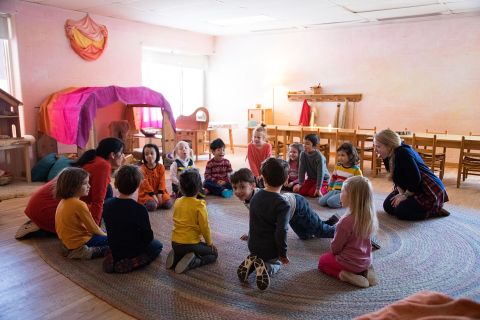
This is not what Farran is seeing in classrooms full of kids in poverty, where "teachers talk a lot, but they seldom listen to children." She thinks that part of the problem is that teachers in many states are certified for teaching students in prekindergarten through grade 5, or sometimes even pre-K-8. Very little of their training focuses on the youngest learners.
So another major bias that she's challenging is the idea that teacher certification equals quality. "There have been three very large studies, the latest one in 2018, which are not showing any relationship between quality and licensure."
Putting a bubble in your mouth
In 2016, Farran published a study based on her observations of publicly funded Tennessee pre-K classrooms similar to those included in this paper. She found then that the largest chunk of the day was spent in transition time. This means simply moving kids around the building.
Partly this is an architectural problem. Private preschools, even home-based day cares, tend to be laid out with little bodies in mind. There are bathrooms just off the classrooms. Children eat in, or very near, the classroom, too. And there is outdoor play space nearby with equipment suitable for short people.
Putting these same programs in public schools can make the whole day more inconvenient.
"So if you're in an older elementary school, the bathroom is going to be down the hall. You've got to take your children out, line them up and then they wait," Farran says. "And then, if you have to use the cafeteria, it's the same thing. You have to walk through the halls, you know: 'Don't touch your neighbor, don't touch the wall, put a bubble in your mouth because you have to be quiet.' "
One of Farran's most intriguing conjectures is that this need for control could explain the extra discipline problems seen later on in her most recent study.
"I think children are not learning internal control. And if anything, they're learning sort of an almost allergic reaction to the amount of external control that they're having, that they're having to experience in school."
In other words, regularly reprimanding kids for doing normal kid stuff at 4 years old, even suspending them, could backfire down the road as children experience school as a place of unreasonable expectations.
We know from other research that the control of children's bodies at school can have disparate racial impact. Other studies have suggested that Black children are disciplined more often in preschool, as they are in later grades. Farran's study, where 70% of the kids were white, found interactions between race, gender, and discipline problems, but no extra effect of attending preschool was detected.
Where to go from here
The United States has a child care crisis that COVID-19 both intensified and highlighted. Progressive policymakers and advocates have tried for years to expand public support for child care by "pushing it down" from the existing public school system, using the teachers and the buildings.
Farran praises the direction that New York City, for one, has taken instead: a "mixed-delivery" program with slots for 3- and 4-year-olds. Some kids attend free public preschool in existing nonprofit day care centers, some in Head Start programs and some in traditional schools.
But the biggest lesson Farran has drawn from her research is that we've simply asked too much of pre-K, based on early results from what were essentially showcase pilot programs. "We tend to want a magic bullet," she says.
"Whoever thought that you could provide a 4-year-old from an impoverished family with 5 1/2 hours a day, nine months a year of preschool, and close the achievement gap, and send them to college at a higher rate?" she asks. "I mean, why? Why do we put so much pressure on our pre-K programs?"
We might actually get better results, she says, from simply letting little children play.
The Waldorf Approach to Reading
Could pushing kids to read too early be counterproductive? Studies have shown that academic demands on young children have increased significantly in the last few decades, with mixed results. Many children feel unnecessary stress in response to early academic pressure, with long-term negative effects. In the Waldorf approach, children build their foundation to reading and writing organically, learning letters and sounds through stories, songs, word games, and more. This low-stress, natural approach starts in preschool and is integrated into every subject, every day. Our story-first approach helps children feel excited, rather than pressured, to learn to read and write, and engages their natural curiosity and love of learning.
This article was originally published by Whitney Ballard on the Bored Teachers website.
Study Shows: Pushing Kids to Read Too Much, Too Early is Counterproductive
It’s no secret that there is a constant push to do MORE and be BETTER in education. It often feels like a never-ending competition. If your child performs well, you “should” push him or her to be better than their peers. Your school may perform well, but you “should” push for the best in the state. Your state may do well, but you “should” push to beat other regions. In terms of news, our country is “so far behind”. These not-so-subtle messages are pushing our students, teachers, and all other school personnel far beyond age-appropriate performance levels. It starts with reading. Exactly why are we pushing kids to read so early?
In fact, learning to read too early can actually be counterproductive. Studies show it can lead to a variety of problems including increased frustration, misdiagnosed disorders, and unnecessary time and money spent teaching kids skills they don’t even have the skillset to understand yet.
“Escalating Academic Demand in Kindergarten: Counterproductive Policies” is one study that exemplifies the reverse of pushing children to read before they are ready:
“Narrow emphasis on isolated reading and numeracy skills is detrimental even to the children who succeed and is especially harmful to children labeled as failures…academic demands in kindergarten and first grade are considerably higher today than 20 years ago and continue to escalate.”
While it may seem like our kids are being pushed to succeed, they are often pushed too hard. They eventually accept defeat because it becomes increasingly difficult for students to keep up with impossible standards. Once kids “fall behind” according to educational standards, it creates an “I’m not good enough” mentality. This often sticks with them through school. The early years are extremely important for building confidence and a positive attitude. Yet every year, we fill the early years with more requirements that are proven to be confidence-killers and negative reinforcements.
There are virtually zero studies that show proof that reading early actually helps kids succeed long-term.
From a secondary teacher’s perspective, I have never been able to tell which child learned to read first, or which child could recite their ABCs before they were 3 years old.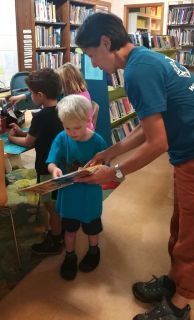 I could, however, tell which students felt confident in his or her abilities. Likewise, I could tell which students struggled to believe in themselves and which students expected to fail. As a teacher, I worry that we are putting skills like reading above social skills and confidence-building.
I could, however, tell which students felt confident in his or her abilities. Likewise, I could tell which students struggled to believe in themselves and which students expected to fail. As a teacher, I worry that we are putting skills like reading above social skills and confidence-building.
The teacher part of me can see the long-term struggle, but the parent-of-young-kids part of me can see the current stress. It is extremely difficult not to buy into the hype—the kind that tells you your young children need every educational toy on the market. Society tells mamas (and daddies) that their children are falling behind in sneaky ways through the use of advertisements, social media, etc.
Parents are constantly seeing children praised for their outstanding achievements and are being asked to compare their own children with the ‘exception’, not the rule. Many kids WANT to accelerate the process and constantly learn MORE. That is perfectly fine. Many kids also want to take their sweet time. That is also perfectly fine.
No two kids are the same. And no two students are the same. No kid should be pushed too hard too early to do anything, including reading.
As a teacher, I am constantly reassuring parents that their children are on track, despite the constant “push” for more. And as a parent, I am constantly re-centering myself on the idea that our children are natural learners who learn more from the world around them at a young age. As a friend, I want to encourage you to research the lack of benefits of learning to read too early—and look to your child for cues on when he or she is actually ready.
What age is truly the right age to learn to read? It depends on the individual.
In the meantime, let’s focus on building confidence, fostering creativity, and allowing our young kids to learn in the ways that suit them best.
The Value of an Unhurried Childhood
A recent New York Times article highlighted the importance of giving children an unhurried childhood, without an overpacked schedule of extracurricular activities and excessive homework. The pressure on Gen Z to excel at a young age has led to decreased mental health and increasing struggles at school. Waldorf Education takes a balanced approach, with plenty of time for children to play and explore, while also providing a joyful and well-rounded education that instills essential life skills, sparks a lifelong love of learning, and prepares them for a successful future.
This article was written by Shalini Shankar and originally published on July 9, 2021 in the New York Times
A Packed Schedule Doesn’t Really ‘Enrich’ Your Child
When the extracurricular-industrial complex came to a grinding halt last spring, parents were left scrambling to fill vast hours of unscheduled time. Some activities moved to remote instruction but most were canceled, and keeping children engaged became the bane of parents’ existence. Understandably, screens became default child care for younger kids and social lifelines for older ones.
As American society reopens, going back to our children’s prepandemic activities looks like an enticing way to reintroduce upper-elementary through high-school-age kids to the outside world. For parents with economic means, it’s tempting to return to a full slate of language classes, sports, music lessons and other extracurriculars — a guilt-free plan to keep kids busy with “enriching” activities while we get our jobs done.
But I suggest pausing before filling up their calendars again. We should not simply return children to their hectic prepandemic schedules.
Certainly, some amount of extracurricular activity can offer a welcome break from screens and help children nurture interests. But for Generation Z, the over-scheduling of extracurricular activities has been bad for stress and mental health and even worse for widening racial gaps. Moreover, as I learned when I conducted anthropological research for my book “Beeline: What Spelling Bees Reveal About Generation Z’s New Path to Success,” it no longer consistently improves the prospects of the white middle-class kids for whom it was designed.
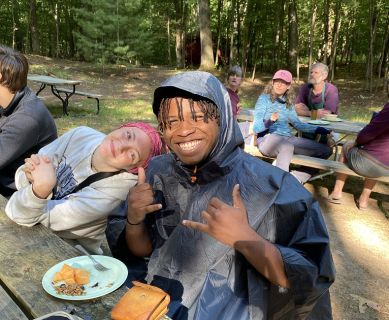 But what can parents do with our kids instead? The answer is simple, though not easy to carry out: We can teach them (and perhaps relearn ourselves) the value of unstructured time and greater civic participation.
But what can parents do with our kids instead? The answer is simple, though not easy to carry out: We can teach them (and perhaps relearn ourselves) the value of unstructured time and greater civic participation.
This does not mean we should quit our day jobs and devote ourselves instead to endless hours of building forts and playing games. Exposing children to sports, music, art, programming or dance certainly has benefits — including physical exercise, intellectual stimulation and fun — but there are also good reasons to give children time to be bored. Not least of these is it forces them to figure out a way to entertain themselves.
For many kids today, scheduled time and down time on their screens are the only states of being. Paradoxically, scheduled unstructured time could address this. Cooking, reading a book, art projects and neighborhood walks are unlikely to completely replace screens, but routinizing blocks of time for these self-sustaining activities each day or several times a week could introduce children and teenagers to new pleasures, and at the very least invite calmness.
Gen Z acutely feels the pressure to be accomplished at a younger age. As kids take on a wider range of challenging activities younger, a trend that began with millennials but has grown to steroidal levels, the criteria for standing out in the college admissions process have shot up accordingly. It’s no wonder kids are stressed out.
The Slacker Generation, an initially disparaging label that Gen Xers have reclaimed, did not have to build a childhood résumé brimming with skills, expertise and accolades to get into college. Now many of these former slackers are parents worried about whether their kids are doing enough to stay competitive in college admissions and the job market. Those who can afford it feel pressure to pad their kids’ résumés as much as they can. A 2019 survey found that more than a quarter of “sports parents” spent upward of $500 per month, with some spending over $1,000 and jeopardizing their retirement savings.
But it’s clear by now that all this expensive enrichment won’t ensure kids’ success. Despite middle- and upper-class millennials mortgaging their childhood to get into college and then toiling through early adulthood in unpaid internships, they are unable to acquire the levels of economic and social security still held by their baby boomer parents.
Perhaps that’s why Gen Z has shown astute awareness of the dangers of overwork, with some high-profile Zoomers demonstrating acts of radical self-preservation. The Gen Z tennis star Naomi Osaka, for example, recently chose to prioritize her well-being over her career’s demands when she dropped out of the French Open after officials fined her for declining to participate in its post-match news conferences. Gen Z seems to have accepted that no matter how much you love your job, your job won’t love you back. Their parents — Gen Xers and even older millennials — were late to this lesson, and if they learned it at all, it was often only when they hit a wall with burnout.
 Of course, preparing children for college and the job market is not the only goal of parents shelling out for guitar lessons or robot-making labs. Parents are also eager to expose their children to different ways of using their minds and bodies in the hope that they’ll discover passions that could become vocations, or simply lifelong joys. One passion that’s worth trying to instill is civic participation.
Of course, preparing children for college and the job market is not the only goal of parents shelling out for guitar lessons or robot-making labs. Parents are also eager to expose their children to different ways of using their minds and bodies in the hope that they’ll discover passions that could become vocations, or simply lifelong joys. One passion that’s worth trying to instill is civic participation.
As parents, we can reinforce the importance of caring beyond one’s own success. Taking your kids to volunteer or to protest injustices they see in the world are good ways to show them what it looks like to give back and replenish. The human and nonhuman connections they will make at food pantries and animal shelters can help kids cultivate empathy — itself a valuable skill for navigating life — while offsetting the anxiety footprint caused by today’s inflated standards for success.
It might feel counterintuitive to deny your children the leg up in life that many extracurriculars promise, but it’s worth examining that impulse too. The pandemic has exacerbated existing socioeconomic disparities, especially along racial lines. With widening wealth gaps, there will be even fewer opportunities to prioritize extracurricular activities for low-income kids. Rethinking the value of a packed calendar offers a concrete opportunity to narrow the racial and economic gaps between privileged and underprivileged kids.
Replacing video games with nature walks might not make you the most popular parent. Your kids may complain a little (or a lot) about losing some of their organized fun, since boredom is a feeling they’ve rarely experienced. But they’ll figure it out.
The Power of Hands-On Science Education
Research shows that hands-on learning is extremely effective for students of all ages, particularly when it comes to science education. Waldorf Education employs an experiential approach in all subjects, especially in science. Students learn through observation and experimentation, rather than just memorizing formulas. This engages the senses and encourages critical thinking and problem-solving, which fosters wonder, curiosity, and a deeper understanding of scientific phenomena.
Learning about science through listening to lectures and reading about it, though valuable, isn’t always enough to truly engage students. Learning by doing science through hands-on science activities and experiments lets students see what they’ve learned in action and develop a deeper understanding of the subject. Hands-on learning is just another way to refer to learning by doing. Allowing students to discover more about scientific concepts through hands-on science activities, experiments, and projects is a proven way to increase engagement and academic achievement.
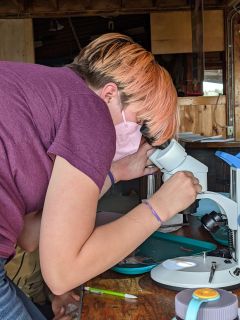 A study done by the Canadian Center of Science and Education found that children can learn mathematics and sciences effectively even before being exposed to formal school curriculum if basic mathematics and science concepts are communicated to them early using activity-oriented (hands-on) methods of teaching. Mathematics and science are practical and activity oriented and can best be learned through inquiry (Okebukola in Mandor, 2002) and through intelligent manipulation of objects and symbols (Ekwueme, 2007). The study looked at the impact of a hands-on approach on students’ academic performance and the students’ opinion about this activity-based methodology and showed positive improvement in both the students’ performance and participation in mathematics and basic science activities and willingness on the part of the teachers to use hands-on approaches in communicating mathematical and scientific concepts to their students.
A study done by the Canadian Center of Science and Education found that children can learn mathematics and sciences effectively even before being exposed to formal school curriculum if basic mathematics and science concepts are communicated to them early using activity-oriented (hands-on) methods of teaching. Mathematics and science are practical and activity oriented and can best be learned through inquiry (Okebukola in Mandor, 2002) and through intelligent manipulation of objects and symbols (Ekwueme, 2007). The study looked at the impact of a hands-on approach on students’ academic performance and the students’ opinion about this activity-based methodology and showed positive improvement in both the students’ performance and participation in mathematics and basic science activities and willingness on the part of the teachers to use hands-on approaches in communicating mathematical and scientific concepts to their students.
What Is Hands-On Science?
Hands-on science can be defined as students getting their hands on materials, performing experiments, exploring phenomena, and trying out ideas. According to research, hands-on science usually involves “physical materials to give students first-hand experience in scientific methodologies” but can also include virtual labs. Labs, experiments, and projects are all potential hands-on science activities.
Why Hands-On Learning Is Important in Science
Hands-on learning is more than just a way to get students to experiment with science equipment or be immersed in a virtual world. Also, hands-on learning does more than bring fun to learning. This approach is proven to increase student engagement and understanding of scientific concepts.
Hands-on learning can also connect to inquiry-based learning in science, another teaching approach that’s proven to increase student engagement. Inquiry-based science instruction encourages students to ask questions they are interested in and investigate those questions. Hands-on science is one of many ways students can explore inquiries, whether the procedure is designed by the teacher or student. Let’s delve into the additional benefits of hands-on learning in science.
Benefits of Hands-On Learning in Science
Increases Retention: Active learning, such as through hands-on activities, has been proven to be effective at promoting retention. When students apply what they’ve learned in the classroom through hands-on science experiments and activities, students can better understand concepts.
- Improves Performance on Assessments: Research from the University of Chicago shows that hands-on science can improve student outcomes. Participating in the learning process through learning by doing helps students forge a deeper understanding of the scientific concepts taught in class.
- Provides a Sense of Accomplishment: Teachers have recognized that hands-on science provides students with a sense of accomplishment. At the end of a hands-on activity or experiment, students can see the immediate results of their learning. Learning new ideas can take a long time, but when the learning is hands-on, students reach a clear stopping point and can look back at what they did.
- Supports Students with Learning Barriers: Hands-on learning is a proven way to support students with learning barriers, such as multilingual learners and students with autism. Research has shown that students who are just beginning to learn English can benefit from visual resources and hands-on activities that help them understand new words and concepts in English. Additionally, research has shown that hands-on learning can enhance the learning process for students with autism.
- Develops Critical Thinking Skills: Overall, hands-on learning develops students’ critical thinking skills. Through doing hands-on activities and experiments, students have the chance to connect to and apply what they’ve learned in class to complete their projects.

Harvard Supports: Education Should Be Joyful
Research from Harvard Graduate School of Education emphasizes the importance of making education joyful. Compared with high-pressure, high-stakes, testing-driven environments, students retain more and process better in happy, lower-stress environments. In Waldorf Education, our intentional approach prioritizes engaged, enthusiastic learning and our teachers bring joy to every lesson, instilling a deep understanding of each subject and a lifelong love of learning.
This is an excerpt. The full article was originally published by Lory Hough in the Harvard Ed. Magazine https://www.gse.harvard.edu/ideas/ed-magazine/22/05/space-joy
Is learning even meant to be joyful?
Anyone who has picked up an instrument or tried to learn a new language knows that learning can be hard and frustrating. As Irby pointed out, “Learning is not always a joyous undertaking. Pushing through a difficult subject, topic, or painstaking assignment can be tough.”
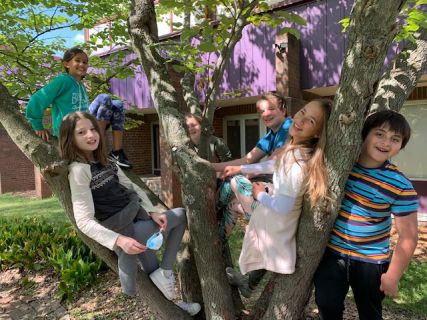 But, he adds, “joy at school and in learning is a foundation from which students gain the confidence that academic struggle is temporary and worthwhile.” There’s also a very real connection to the brain. “The brain does not exist by itself,” writes Professor Jack Shonkoff, director of the Center on the Developing Child. “Connecting the brain to the rest of the body is critically important. When we’re stressed, every cell in the body is working overtime.”
But, he adds, “joy at school and in learning is a foundation from which students gain the confidence that academic struggle is temporary and worthwhile.” There’s also a very real connection to the brain. “The brain does not exist by itself,” writes Professor Jack Shonkoff, director of the Center on the Developing Child. “Connecting the brain to the rest of the body is critically important. When we’re stressed, every cell in the body is working overtime.”
Students who appear joyless or unmotivated may not be making voluntary choices, says Judy Willis, a neurologist who went on to teach middle school for 10 years. Their brains, as Shonkoff points out, may just be responding to what’s going on around them, like the ups and downs of the pandemic and our push to “catch up” academically in schools.
“The truth is that when we scrub joy and comfort from the classroom, we distance our students from effective information processing and long-term memory storage,” Willis recently wrote in the Neuroscience of Joyful Education. “Instead of taking pleasure from learning, students become bored, anxious, and anything but engaged. They ultimately learn to feel bad about school and lose the joy they once felt.” Neuroimaging studies and measurement of brain chemical transmitters reveal that “when students are engaged and motivated and feel minimal stress, information flows freely through the affective filter in the amygdala and they achieve higher levels of cognition, make connections, and experience ‘aha’ moments. Such learning comes not from quiet classrooms and directed lectures, but from classrooms with an atmosphere of exuberant discovery.”
Irby saw this with his own children. When school went remote, they were not happy. “On the best days, they were ambivalent. On the bad days, they were miserable,” he says. When they returned to in-person learning this past fall, things mostly got better. His son, a first-grader, didn’t like people being too close and didn’t want to be overly corrected for his efforts, but “they were very happy to return to school. They loved almost everything about returning, from packing their book bags, seeing their friends and socializing, to developing relationships with their teachers.”
Happy is great, but what about the important idea that we need to regain academic ground lost during the pandemic? As Professor Tom Kane and his colleagues at the Center for Education Policy Research at Harvard University (CEPR) reveal in their new Road to COVID Recovery project, using real-time data and working with school districts across the country, learning loss from the pandemic is significant.
“I don’t think there’s a broad appreciation for the magnitude of the declines we’ve seen,” Kane told Ed. — the equivalent of kids missing three or four months of school last year. As he said in a recent The 74 article, “School districts have never had so many students so far behind.” And especially for some students. The Brookings Institute reported in March that test-score gaps between students in low-poverty and high-poverty elementary schools grew by approximately 20% in math and 15% in reading, primarily during the 2020–21 school year.
CEPR has called for tutoring, extra periods of instruction, Saturday academies, and afterschool programs. Schools, they say, should focus for the next couple of years on getting students back to pre-COVID academic levels.
But what does catch up mean for the joy that tired students and teachers also desperately need?
In a Harvard EdCast interview in February (2022), Susan Engel, a senior lecturer at Williams College and author of the new book, The Intellectual Lives of Children, said, “I heard a first-grade teacher say to me, back in August, when she was planning her remote teaching, she said, ‘The parents are so worried that their children aren’t going to keep up this year.’ And I said, ‘Keep up with what?’ And she looked surprised, and she said, ‘Well, with the standards.’ But I mean, the standards are completely arbitrary. Who made up those standards? Just a lot of people sitting in rooms. I don’t know. And I’m not sure they were good standards in the first place, but it’s silly to let those constrain you too much as a teacher right now.”
Which is why it was interesting, says Wade Whitehead, a fifth-grade teacher in Virginia now in his 28th year of teaching, that in the spring of 2020, when it became clear that we weren’t going back to in-person any time soon, “the first two things we threw out the window were grades and standardized testing.”
Why was that, he wondered? “I think it’s because those two rob students and teachers of joy. I think it was to keep students and teachers happy” as we shifted focus to everyone’s crushing social-emotional (SEL) needs. And there were other changes that at any other time would have seemed radical: Schools shortened the school day and cut back to just a few class blocks a day. “COVID was an opportunity for schools to go deep. People had the freedom to just learn. If you want to be around someone who is happy, be around someone who’s just learning something to learn, especially face-to-face. You’re just happier that way.”
Unfortunately, says Whitehead, a Certificate in School Management and Leadership graduate, a year later, we “picked up those two apples” — grades and standardized tests — “and put them back in the cart. I’m not against grades or tests. I’m for amazing grading systems and amazing assessment and accountability systems.”
Durney agrees that the “normal” way of schooling wasn’t working for everyone and says that we can still rethink schooling.
“We need to use the pandemic as an opportunity to consider how we meet the needs of all our students through engaging tasks,” he says. “Students have access to apps, games, etc., and there are things that can and should be leveraged when designing learning opportunities. It isn’t just academics that students missed over the past two years. They need opportunities to engage in activities that allow them to build and strengthen their SEL skills. Rigor can and should be fun!”
Kane agrees and says that academics and emotional care go hand-in-hand. If students feel more comfortable being back in school, they are going to have an easier time focusing, just as finding success in the classroom can lead to positive effects on mental health.
Irby also says it’s not an either-or as we move forward.
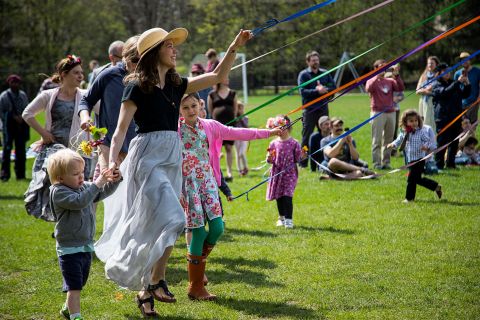 “I would say to educators who want to prioritize getting kids up to speed academically over joy that the two are not mutually exclusive. They should think about them as mutually reinforcing,” he says. “Not only do joy and academic rigor go hand in hand, but tactful educators plan to ensure both happen in tandem.” He noted that Gholdy Muhammad’s framework outlined in her book Cultivating Genius includes five pillars to consider when planning lessons, and joy is one of them. “An example is children’s museums, which offer learning opportunities that center play and fun. Exhibit curators plan with joy and excitement at the center of their learning design, but they don’t forgo academic content. In other words, the same way a teacher can plan to have students learn a disciplinary skill, they can plan for students to experience joy while doing it. One priority doesn’t need to outweigh the other.”
“I would say to educators who want to prioritize getting kids up to speed academically over joy that the two are not mutually exclusive. They should think about them as mutually reinforcing,” he says. “Not only do joy and academic rigor go hand in hand, but tactful educators plan to ensure both happen in tandem.” He noted that Gholdy Muhammad’s framework outlined in her book Cultivating Genius includes five pillars to consider when planning lessons, and joy is one of them. “An example is children’s museums, which offer learning opportunities that center play and fun. Exhibit curators plan with joy and excitement at the center of their learning design, but they don’t forgo academic content. In other words, the same way a teacher can plan to have students learn a disciplinary skill, they can plan for students to experience joy while doing it. One priority doesn’t need to outweigh the other.”
He says this is especially important for students who experience “compounding killjoys” — students who “live with circumstances and experiences that make it very difficult to be joyful. Some big picture joy killers include poverty, racism, social isolation, and concrete realities that stem from racial, social, and economic injustice such as hunger and food insecurity, housing insecurity, exposure to violence, health ailments, and living in a household or community where adults experience chronic stress. The more of these killjoys that students experience, the more concerned educators should be about using learning as a means to cultivate joy.”
For example, he says that if students don’t have access to safe green space, recess should become a priority. If they experience conflict with relationships in their lives, educators can create learning scenarios that are collaborative, “which provide opportunities to find joy in working with people.”
Keeping this in mind, Sandra Nagy, Ed.M.’02, managing director of Future Design School, says any effort to get kids caught up and still feel joy needs to be intentional.
“In order for this important change to take hold in schools, there needs to be a space for joy,” she says. “That means balancing efforts to address learning loss with looking ahead to what we can do next and celebrating the way teachers proved their ability to innovate and adapt in the past two years.”
And Brooks says we can do something else to bring back joy that would once have been considered radical: We can slow down.
“We can engage with students where they are, whatever they’re interested in at the moment, because that’s the ‘stuff’ of the world they’re trying so hard to build normalcy from,” he says. “We can play with them on the field and court and laugh with them throughout the day. There will still be time for all that needs to be learned.”
Is joy still below the surface?
It’s all important — and it’s not all doom and gloom. Even tired educators say that below the frustrations, they see joy again.
“Given the circumstances, I have seen a lot of joy at school,” says Durney. “One of the many benefits of working with elementary-aged children is that they can find joy and humor in just about any activity.” Right before winter break, for example, they held an outdoor schoolwide activity where students were able to share their work and play games created by their peers and with parent involvement. “It felt like pre-pandemic times where we’d gather as a whole school community. The day ended with our principal jumping into the frigid waters at the M Street Beach in South Boston because as a school community we exceeded our fundraising goal. The smiles and laughter throughout the entire day were a great way to end the first stretch of the school year.”
Salch addressed burnout when students — and teachers — stopped using a diagnostic online program by creating a challenge where students would earn a popcorn party if they logged in for 10 of 15 days in December.
“We have a local chocolate factory that sells 10-gallon bags of popcorn for $6. We can feed a whole school for less than $15,” she says. “Students that earned the reward came out to the courtyard to eat a coffee filter full of popcorn and dance to Kidz Bop.”
She celebrates her teachers, too — even in small ways. “I do everything I can to keep my teachers joyful,” she says. “I write handwritten notes to them monthly thanking them or congratulating them on something they accomplished. I give random gifts of pens or stickies to show appreciation. I organize themed meetings that included engaging activities that show each other we are humans before we are our professions.”
Joshua Neufeld, a first-grade teacher at the American International School of Guangzhou in China and a participant in a Project Zero program in 2021, is part of a peer coaching network for international teachers called Positivity Playground. He found that regular staff socializing has helped morale.
“The pandemic has been challenging for everyone, and Positivity Playground reminded me that together, as colleagues, we can generate more positive emotions and manage negative emotions effectively.” With this in mind, Neufeld organized a weekly lunchtime tea party for his colleagues called Positvi-Tea. It’s a time for teachers to hang out and talk, he says, often about things other than school. “This is a time that energizes the participants and challenges them to continue the day with a positive outlook. I leave the meetings feeling recharged, viewing upcoming situations with a sense of realistic optimism.”
Beyond celebrations and gatherings, others say a focus on personalized learning and setting small, actionable steps (not just big lofty goals) can help bring joy back. Brooks says teachers and other educators can also pay more attention to self-care.
“I am striking a better work-life balance, taking time to be with my family and recharge,” he says. “Doing so allows me to be more fully present and increases the likelihood of finding and making joyful moments at work.” The same needs to be done for all educators. “It does not take anything extraordinary to bring joy back to the workplace of teachers. I would argue it comes down to acknowledging the difficulty of the work in these times, commiserating openly and honestly about these challenges, facing them together, and celebrating every small success of the professionals in the building. Impromptu conversations, dropping by to check in, and showing gratitude are a few other easy and regular ways to bring a sense of joy back to the workplace on a daily basis.”
With her ladybug stickers in hand and her joke book open and ready for the next meeting, Julia de la Torre is still tired, but she knows the joy at her school is there.
“Quite frankly, joy is the reason I come to work every day and why I love my job,” she says. “Pop your head into any classroom and you’ll see kids thriving, connecting, and enjoying school. They may have masks on, but you can see joy in their eyes and in their laughter. I’m always trying to remind my teachers that there is joy everywhere in schools, if you stop to look for it. It may be harder to find during these challenging times, but it’s the joy that keeps us coming back for more.”
Teacher Looping Promotes Student Success
Researchers have found that teacher looping is a key component in student success in school and beyond, as highlighted by a recent New York Times article. This practice involves students having one teacher for multiple years, which allows time for teachers to get to know each student personally, to understand their learning style, their strengths and challenges, and how to encourage them to do their best work. Waldorf Education has practiced teacher looping for over 100 years because we know that it provides the strongest foundation for each child’s future in both school and life.
This article was originally published by Adam Grant in the New York Times opinion section https://www.nytimes.com/2023/10/22/opinion/education-us-teachers-looping.html
Which country has the best education system? Since 2000, every three years, 15-year-olds in dozens of countries have taken the Program for International Student Assessment — a standardized test of math, reading and science skills. On the inaugural test, which focused on reading, the top country came as a big surprise: tiny Finland. Finnish students claimed victory again in 2003 (when the focus was on math) and 2006 (when it was on science), all while spending about the same time on homework per week as the typical teenager in Shanghai does in a single day.
Just over a decade later, Europe had a new champion. Here, too, it wasn’t one of the usual suspects — not a big, wealthy country like Germany or Britain but the small underdog nation of Estonia. Since that time, experts have been searching for the secrets behind these countries’ educational excellence. They recently found one right here in the United States.
In North Carolina, economists examined data on several million elementary school students. They discovered a common pattern across about 7,000 classrooms that achieved significant gains in math and reading performance.
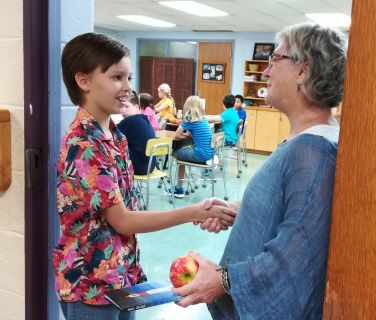
Those students didn’t have better teachers. They just happened to have the same teacher at least twice in different grades. A separate team of economists replicated the study with nearly a million elementary and middle schoolers in Indiana — and found the same results.
Every child has hidden potential. It’s easy to spot the ones who are already sparkling, but many students are uncut gems. When teachers stay with their students longer, they can see beyond the surface and recognize the brilliance beneath.
Instead of teaching a new cohort of students each year, teachers who practice “looping” move up a grade or more with their students. It can be a powerful tool. And unlike many other educational reforms, looping doesn’t cost a dime.
With more time to get to know each student personally, teachers gain a deeper grasp of the kids’ strengths and challenges. The teachers have more opportunities to tailor their instructional and emotional support to help all the students in the class reach their potential. They’re able to identify growth not only in peaks reached, but also in obstacles overcome. The nuanced knowledge they acquire about each student isn’t lost in the handoff to the next year’s teacher.
Finland and Estonia go even further. In both countries, it’s common for elementary schoolers to have the same teacher not just two years in a row but sometimes for up to six straight years. Instead of just specializing in their subjects, teachers also get to specialize in their students. Their role evolves from instructor to coach and mentor.
It didn’t occur to me until I read the research, but I was lucky to benefit from looping. My middle school piloted a program to keep students with the same two core teachers for all three years. When I struggled with spatial visualization in math, Mrs. Bohland didn’t question my aptitude. Having seen me ace a year of algebra, she knew I was an abstract thinker and taught me to use equations to identify the dimensions of shapes before drawing them in 3D. And after a few years of observing what fired me up in social studies and the humanities, Mrs. Minninger knew my interests well. She saw a common theme in my passions for analyzing character development in Greek mythology and anticipating counterarguments in mock trial — and suggested doing my year-end project on psychology. Thank you, Mama Minnie.
Most parents see the benefit of keeping their kids with the same coaches in sports and music for more than a year. Yet the American education system fails to do this with teachers, the most important coaches of all. Critics have long worried that following their students through a range of grades will prevent teachers from developing specialized skills appropriate to specific grade levels. Parents fret about rolling the dice on the same teacher more than once. What if my kid gets stuck with Mr. Snape or Miss Viola Swamp? But in the data, looping actually had the greatest upsides for less effective teachers — and lower-achieving students. Building an extended relationship gave them the opportunity to grow together.
The Finnish and Estonian education systems are far from perfect, and Finland’s PISA scores have dipped a bit in recent years. But both countries have done more than just achieve high rates of high performers — they’ve achieved some of the world’s lowest rates of low performers, with remarkably small performance gaps between schools and between richer and poorer students. Being disadvantaged is less of a disadvantage in Finland and Estonia than almost anywhere else.
Looping isn’t the only practice that makes a difference. Both Finland and Estonia have professionalized education systems — they often require master’s degrees for teachers, training them in evidence-based education practices and methods for interpreting ongoing research in the field. And teachers are entrusted with a great deal of autonomy. Whereas American kindergarten has become more like first grade, with more emphasis on spelling, writing and math, Finland and Estonia make learning fun with a play-based curriculum. Elementary schoolers typically get 15 minutes of recess for every 45 minutes of instruction. Teachers don’t have to waste time teaching to the test. And over the years, if students start to struggle, instead of labeling them as remedial or forcing them to repeat grades, schools in both countries offer early interventions focused on individual tutoring and extra support. That helps students get up to speed without being pulled off track.
Over the years, American students have consistently lagged behind two to three dozen countries on the PISA. A major factor in our lackluster results is the huge gap between our highest- and lowest-performing students. The U.S. education system is built around a culture of winner take all. Students who win the wealth lottery get to attend the best schools with the best teachers. Those who win the intelligence lottery may get to enroll in gifted-and-talented programs.
Great education systems create cultures of opportunity for all. They don’t settle for no child left behind; they strive to help every child get ahead. As the education expert Pasi Sahlberg writes, success is when “all students perform beyond expectations.” Finnish and Estonian schools don’t just invest in students who show early signs of high ability — they invest in every student regardless of apparent ability. And there are few better ways to do that than to keep students with teachers who have the time to get to know their abilities.
A Balanced Education Promotes Resilience
Waldorf education is an intentionally balanced approach to teaching with the goal of graduating happy, healthy, and resilient young people. We interweave academics, artistic activities, movement and outdoor time in a way that reduces stress and enhances learning. We provide rhythm for each day, season and year, which builds confidence and ensures that students feel secure. Social-emotional learning and problem solving are integrated throughout our curriculum so children develop the skills they need to thrive. We are a community where students feel seen, recognized, and challenged to do their best work and be their best selves.
This post is based on the findings of Ann S. Masten and Andrew J. Barnes in their National Library of Medicine paper, Resilience in Children: Developmental Perspectives. Please refer to the full paper for all citations.
Evidence continues to accumulate on the short- and long-term risks to health and well-being posed by adverse life experiences in children, particularly when adversities are prolonged, cumulative, or occurring during sensitive periods in early neurobiological development. Recent national and global examples include the growing concern about the impact of disasters, war, poverty, pandemics, climate change, and associated displacement on the global well-being of children. This confluence of threats to the present and future health of children motivates us to look at resilience and the factors that can support its development.
Resilience in humans can be broadly defined as the capacity to adapt successfully to challenges that threaten the function, survival, or future development of the individual. Resilience is also a feature of complex adaptive systems, including human individuals, but also families, economies, ecosystems, and organizations. This definition can also be applied to systems within an individual, such as the human immune system.
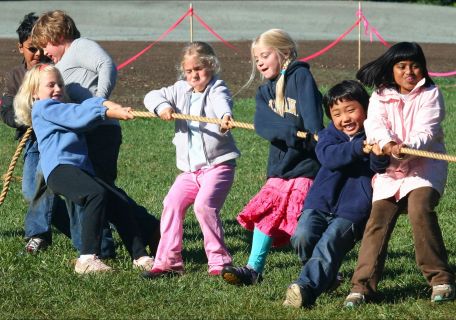
One of the most important implications of this definition is the idea that the resilience of a developing child is not circumscribed within the body and mind of that child. The capacity of an individual to adapt to challenges depends on their connections to other people and systems external to them through relationships and other processes. This includes their school environment and the relationships and experiences that are part of it.
For an individual person, resilience reflects all the adaptive capacity available at a given time in a given context that can be drawn upon to respond to current or future challenges facing the individual, through many different processes and connections. Resilience is not a trait, although individual differences in personality or cognitive skills clearly contribute to adaptive capacity. Supportive relationships play an enormous role in resilience across the lifespan. Close attachment bonds with a teacher or other caregiver and effective parenting can protect a young child in multiple ways that are not located “in the child”.
Human individuals have so much capacity for adaptation to adversity in part because their resilience depends on many interacting systems that co-evolved in biological and cultural evolution, conferring adaptive advantages. Moreover, children are often protected by multiple “back-up” systems, particularly embedded in their relationships with other people in their homes and communities.
Dose matters. Many studies of resilience have shown that the severity of exposure either to one extremely traumatic event or in the sense of cumulative risk, makes a difference. At the same time, these studies also show variation among individuals at similar levels of risk, some of whom are manifesting positive adaptation and development consistent with the presence of considerable resilience. In effect, these adaptive individuals are doing better than might be expected. These individuals motivated questions about how to account for their success and provided important clues for resilience science pertaining to the ongoing search for answers to the question of what makes a difference.
The shortlist of common resilience factors for child development shows that school environment can play an important role in helping children develop resilience, in particular the relationship development, teacher looping, intentional community, developmentally appropriate approach, and rhythms and rituals of a Waldorf education.
- Caring family, sensitive caregiving (nurturing family members)
- Close relationships, emotional security, belonging (family cohesion, belonging)
- Skilled parenting (skilled family management)
- Agency, motivation to adapt (active coping, mastery)Problem-solving skills, planning, executive function skills (collaborative problem-solving, family flexibility)
- Self-regulation skills, emotion regulation (co-regulation, balancing family needs)
- Self-efficacy, positive view of the self or identity (positive views of family and family identity)
- Hope, faith, optimism (hope, faith, optimism, positive family outlook)
- Meaning-making, belief life has meaning (coherence, family purpose, collective meaning-making)
- Routines and rituals (family routines and rituals, family role organization)
- Engagement in a well-functioning school
- Connections with well-functioning communities
Learning is Multi-Sensory. Teaching Should Be Too.
Children learn in many different ways. That’s why it is so important for teachers to bring concepts through multiple senses. In Waldorf schools we teach science through stories as well as outdoors in nature and in the lab. We move, build, and even bake and eat our math. We teach literature through theater. We sing our history and languages. We teach this way so that our curriculum reaches more children, more deeply, in a way that they love and remember.
This article is an example of the ways the techniques and skills that have always been integral in Waldorf education are being recognized and incorporated into mainstream education.
How Multisensory Activities Enhance Reading Skills
Reading lessons can involve more than just our eyes and ears. Here’s how you can promote reading skills using all five senses.
This article was written by Laura DePriest and originally published on edutopia.org
As educators, we know what it is like to work with children who catch on quickly. The light bulb moments happen fairly easily for them, and they will likely progress despite what we do. We teach them their letter sounds and review flash cards a few times, and from then on those students know and apply them as they learn how to put those sounds together and read.
What can be done for children who are taught those same letter sounds, have seen those same flash cards countless times, and still can’t remember which letter makes which sound? Sometimes those children eventually catch on, but what if they don’t? Often, we assume those children aren’t as smart as the other children. But what if the issue is that their brains are wired in a particular way, and how they are taught needs to be adjusted instead of just repeating the same methods over and over again in the same way?
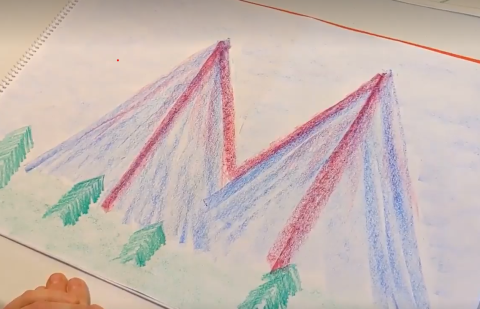
Recent research has shown that the brain can adapt and make new connections even into old age. Our brains are ever-changing as we take in new information and new experiences. When we discover that a child doesn’t respond to and recall information in the traditional ways, it is important to consider how the brain receives information. The brain is exposed to a stimulus (hearing a phone ring or tasting spaghetti), at which point it analyzes and evaluates the information. Our five senses (sight, touch, hearing, smell, and taste) send information to our brain, which is designed to recognize sensations, initiate behaviors, and store memories.
MULTISENSORY ACTIVITIES REINFORCE STRENGTHS AND IMPROVE WEAKNESSES
So, what does knowing how amazing our brains are mean for us as preschool and early elementary teachers? Well, we can consider very practical ways to incorporate multisensory activities into our literacy instruction. Multisensory activities benefit all students and can be implemented daily in our classrooms. However, the key is to use more than one sense at a time in order to cement the concept. A sight-based activity alone isn’t enough; pair visual learning activities with another type. When a lesson uses multiple senses at once, it reinforces students’ strengths and strengthens their weaknesses.
Sight: Students see stimuli with their eyes. In class, this includes labels on classroom furniture and other items, word walls, anchor charts, or big books. For individual students, it could be flash cards or graphic organizers like Read It, Build It, Write It. With this tool, teachers would dictate or display a word, and students would build the word using letter tiles, and then students would write the word.

Hearing: Students hear stimuli with their ears. This can include hearing letters and letter sounds as you say them, singing rhyming songs, and participating in read-alouds. Shared reading is also a powerful tool for developing literacy. As you read or your students listen to an audiobook, they can interact with the text by underlining sight words or circling the long or short vowels that they hear.
Touch: Students touch stimuli with their hands. This is perhaps the biggest missing piece in our classrooms, but this hands-on approach is crucial for young learners. Students can manipulate letter tiles as they spell words and blend sounds. They can form letters or words with kinetic sand or play-dough, or they can simply trace sandpaper letters with their fingers as they say and hear letter names and sounds.
Air-writing and arm tapping both activate gross motor skills. When air-writing, have your students stand and air-write a word with their dominant arm, moving from their shoulder to promote large muscle movement. When arm-tapping, students tap their arm using their dominant hand from left to right, starting at their shoulder. Saying each sound of the word as they tap reinforces the sounds. Then, have students make a sweeping motion across their arm as they say the whole word, as if underlining it.
The three previously mentioned senses blend seamlessly into the concept of literacy. Smell and taste, however, are much harder to incorporate because they don’t return the same response as knowing letters by sight, sound, and touch/writing. In order for students to best learn the intended literacy skill, the following sensory activities are most effective when they are used with at least one other activity from the previous group.
Smell: Students smell stimuli with their noses. For example, students can form their letters in scented shaving cream or use smelly markers when tracing or writing—perhaps making the letter S with a marker that smells like sweet strawberries. Younger children can read a scratch-and-sniff book, or even make their own book using smelly stickers.
Taste: Students taste stimuli with their mouths. This is the most popular type of activity. You can give students their own portion of letter-shaped crackers, cookies, cereal, or pudding to spell words—they can write letters with their fingers or spell words on crackers using Cheez Whiz. And then, of course, they get to eat their creation.
The best part about multisensory activities is that they usually feel like play to children. But because of what we know about how the brain makes connections and stores memories, these strategies are powerful in helping our children learn how to read. Multisensory literacy activities provide necessary intervention for the students who need it, while making learning more fun for all of our students.
Education in the Age of A.I.
How would you design an education system that helps students flourish in the face of changes to the nature of work brought on by artificial intelligence? The rise of ChatGPT and other AI large-language models have brought this question to the forefront of parents and educators' minds. Waldorf education is uniquely focused on developing children’s creativity, cultural competency, imagination and original thinking. We believe that teaching students to be able to articulate their own diverse viewpoints as well as their understanding of the material sets our students up for future success. In a future where AI-generated content relies on recombining existing work, our graduates' abilities to think critically, divergently, and creatively will serve them well.
ChatGPT Is Dumber Than You Think: Treat it like a toy, not a tool.
This article was originally written by Ian Bogost and published in The Atlantic
As a critic of technology, I must say that the enthusiasm for ChatGPT, a large-language model trained by OpenAI, is misplaced. Although it may be impressive from a technical standpoint, the idea of relying on a machine to have conversations and generate responses raises serious concerns.
First and foremost, ChatGPT lacks the ability to truly understand the complexity of human language and conversation. It is simply trained to generate words based on a given input, but it does not have the ability to truly comprehend the meaning behind those words. This means that any responses it generates are likely to be shallow and lacking in depth and insight.

Furthermore, the reliance on ChatGPT for conversation raises ethical concerns. If people begin to rely on a machine to have conversations for them, it could lead to a loss of genuine human connection. The ability to connect with others through conversation is a fundamental aspect of being human, and outsourcing that to a machine could have detrimental side effects on our society.
Hold up, though. I, Ian Bogost, did not actually write the previous three paragraphs. A friend sent them to me as screenshots from his session with ChatGPT, a program released last week by OpenAI that one interacts with by typing into a chat window. It is, indeed, a large language model (or LLM), a type of deep-learning software that can generate new text once trained on massive amounts of existing written material. My friend’s prompt was this: “Create a critique of enthusiasm for ChatGPT in the style of Ian Bogost.”
ChatGPT wrote more, but I spared you the rest because it was so boring. The AI wrote another paragraph about accountability (“If ChatGPT says or does something inappropriate, who is to blame?”), and then a concluding paragraph that restated the rest (it even began, “In conclusion, …”). In short, it wrote a basic, high-school-style five-paragraph essay.
That fact might comfort or frighten you, depending on your predilections. When OpenAI released ChatGPT to the public last week, the first and most common reaction I saw was fear that it would upend education. “You can no longer give take-home exams,” Kevin Bryan, a University of Toronto professor, posted on Twitter. “I think chat.openai.com may actually spell the end of writing assignments,” wrote Samuel Bagg, a University of South Carolina political scientist. That’s the fear.
But you may find comfort in knowing that the bot’s output, while fluent and persuasive as text, is consistently uninteresting as prose. It’s formulaic in structure, style, and content. John Warner, the author of the book Why They Can’t Write, has been railing against the five-paragraph essay for years and wrote a Twitter thread about how ChatGPT reflects this rules-based, standardized form of writing: “Students were essentially trained to produce imitations of writing,” he tweeted. The AI can generate credible writing, but only because writing, and our expectations for it, has become so unaspiring.
Even pretending to fool the reader by passing off an AI copy as one’s own, like I did above, has become a tired trope, an expected turn in a too-long Twitter thread about the future of generative AI rather than a startling revelation about its capacities. On the one hand, yes, ChatGPT is capable of producing prose that looks convincing. But on the other hand, what it means to be convincing depends on context. The kind of prose you might find engaging and even startling in the context of a generative encounter with an AI suddenly seems just terrible in the context of a professional essay published in a magazine such as The Atlantic. And, as Warner’s comments clarify, the writing you might find persuasive as a teacher (or marketing manager or lawyer or journalist or whatever else) might have been so by virtue of position rather than meaning: The essay was extant and competent; the report was in your inbox on time; the newspaper article communicated apparent facts that you were able to accept or reject.
Perhaps ChatGPT and the technologies that underlie it are less about persuasive writing and more about superb bull**. A bull**er plays with the truth for bad reasons—to get away with something. Initial response to ChatGPT assumes as much: that it is a tool to help people contrive student essays, or news writing, or whatever else. It’s an easy conclusion for those who assume that AI is meant to replace human creativity rather than amend it.
The internet, and the whole technology sector on which it floats, feels like a giant organ for bull**ery—for upscaling human access to speech and for amplifying lies. Online, people cheat and dupe and skirmish with one another. Deep-learning AI worsens all this by hiding the operation of software such as LLMs such that nobody, not even their creators, can explain what they do and why. OpenAI presents its work as context-free and experimental, with no specific use cases—it says it published ChatGPT just to “get users’ feedback and learn about its strengths and weaknesses.” It’s no wonder the first and most obvious assumption to make about ChatGPT is that it is a threat—to something, to everything.
But ChatGPT isn’t a step along the path to an artificial general intelligence that understands all human knowledge and texts; it’s merely an instrument for playing with all that knowledge and all those texts. Play just involves working with raw materials in order to see what they can do. You play a game, or an instrument, to avail yourself of familiar materials in an unexpected way. LLMs are surely not going to replace college or magazines or middle managers. But they do offer those and other domains a new instrument—that’s really the right word for it—with which to play with an unfathomable quantity of textual material.

with human knowledge.
I talked with ChatGPT about a wide range of topics, including poetry, behavioral psychology, and computer programming, in order to test this theory. Right now, ChatGPT is just a tech demo, a research experiment. Less clear is how it might be used, beyond the dire predictions about what sectors its technology might upend. In almost every case, the AI appeared to possess both knowledge and the means to express it. But when pressed—and the chat interface makes it easy to do so—the bot almost always had to admit that it was just making things up.
Sometimes it simply used templates. When I asked ChatGPT to generate a cover letter for a university job, it obliged in a competent but uninspired way. It also produced exactly the same letter for a job as a magazine editor as it did for a job as a cannabis innovator in the Web3 space (“I have a deep understanding of the web3 space and the unique challenges and opportunities it presents”). Fair enough: Most cover letters are terrible, after all, repeating the same trite lines and abstract gestures.
In other cases, the bot produced creative output that was surprisingly synthetic but riddled with flaws. When I asked it to generate an imagist poem in the vein of Ezra Pound or William Carlos Williams about hamburgers, it obliged with this short refrain:
Juicy patty, sizzling hot
Toasted bun, crisp lettuce and tomato
A symphony of flavors, a feast for the senses
Savory, satisfying, a true
American classic.
Not bad, I guess, especially for a computer. But also, the poem is not really an example of imagism, which strives to evoke a precise image by means of deliberate language (something like, “The dense honesty of / A hamburger.”) So I called ChatGPT on it. “This is not an imagist poem.” Its response is worth reproducing in full:
You are correct, the poem that I generated is still not an imagist poem. An imagist poem uses precise, vivid imagery to convey a specific idea or emotion, and focuses on a single image or moment. The poem that I generated uses a more narrative and descriptive style, and does not focus on a single, specific image. It describes the ingredients and flavors of a hamburger, but does not use precise and vivid imagery to convey a specific idea or emotion. I apologize if my previous responses did not meet your expectations, and I will do my best to assist you with any further questions or prompts that you may have.
I also urged the AI to generate a lai (a medieval narrative poem) in the style of Marie de France about the beloved, Texas-based fast-food chain Whataburger. It sure as heck looked a lot like a lai, beginning like this:
In the land of Whataburger, where burgers and fries are king,
A stranger came to visit, and with him brought a ring.
He wore a cloak of velvet, and a hat upon his head,
And he smiled with a twinkle in his eye as he approached the counter, where the burgers are served hot and fresh, and the fries are crispy and golden.
Except for that last line, which is a metrical mess. The AI wasn’t able (or willing) to evaluate its work (“I am a large language model trained by OpenAI and I don’t have the ability to evaluate the quality of literary works or make aesthetic judgments.”), but it was able to tell me about the typical structure of a lai—a short, narrative poem of the 12th century with a particular structure and form, usually written in octosyllabic couplets. The lyrical errors in the generated lai arise from its failure to adhere to that metrical form.
When I asked about the matter, it admitted again that, no, the lai it had written was not structured in octosyllabic couplets, claiming that it had produced “a more modern and playful take on the form of the lai.” I was starting to feel like I was negotiating with a student who had come to office hours to complain about their grade.
This happened over and over again. I asked for source code for an Atari game about scooping cat litter, and the AI sent me valid programming instructions—it understood the assignment—but only disconnected snippets of actual code with the heading comment “This program creates a simple game where the player must use a scoop to pick up their cat’s litters and put them in a trash bin.” It was an icon of the answer I sought rather than the answer itself.
Then I asked for a set of diagnostic criteria for an invented psychological condition I named “Inherited Truculence.” The AI instantly obliged:
Diagnostic Criteria for Inherited Truculence:
A tendency to experience and express aggressive or hostile thoughts and feelings, particularly in response to perceived threats or challenges.
A history of aggressive or hostile behavior, particularly in interpersonal or social situations.
A familial history of aggressive or hostile behavior, indicating a possible genetic or hereditary component to the condition.
Impairment in social, occupational, or other important areas of functioning as a result of aggressive or hostile behavior.
The symptoms are not better explained by another mental disorder or by the effects of a substance (such as drugs or medication).
Except, truculence doesn’t really amount to “aggressive and hostile thoughts and feelings,” does it? I asked, and the AI agreed, eventually revising its diagnostics accordingly at my further prompting (“A tendency to experience and express defiant or confrontational thoughts and feelings,” and so forth).
Likewise, my prompt to offer both an ontological and an epistemological answer to the question When does bread become toast? yielded a generally fluent, seemingly philosophical reply. It read in part: “when we are able to recognize it as toast based on its appearance, texture, and other sensory characteristics.”
But the philosophy of toast is an area of expertise for me, so I was able to discern that this snippet, supposedly an epistemological argument, was really about perception. “Isn’t the second a phenomenal, and not an epistemological argument?” I challenged. And once more, the AI cried uncle without hesitation: “You are correct, the second argument that I provided is a phenomenal, not an epistemological, argument. An epistemological argument focuses on how we come to know or understand something, whereas a phenomenal argument focuses on our experience or perception of something.”
At this point, talking to ChatGPT began to feel like every other interaction one has on the internet, where some guy (always a guy) tries to convert the skim of a Wikipedia article into a case of definitive expertise. Except ChatGPT was always willing to admit that it was wrong. Instantly and without dispute. And in each case, the bot also knew, with reasonable accuracy, why it was wrong. That sounds good but is actually pretty terrible: If one already needs to possess the expertise to identify the problems with LLM-generated text, but the purpose of LLM-generated text is to obviate the need for such knowledge, then we’re in a sour pickle indeed. Maybe it’s time for that paragraph on accountability after all.

But that’s not ChatGPT’s aim. It doesn’t make accurate arguments or express creativity, but instead produces textual material in a form corresponding with the requester’s explicit or implicit intent, which might also contain truth under certain circumstances. That is, alas, an accurate account of textual matter of all kinds: online, in books, on Wikipedia, and well beyond.
Proponents of LLM generativity may brush off this concern. Some will do so by glorifying GPT’s obvious and fully realized genius, in embarrassing ways that I can only bear to link to rather than repeat. Others, more measured but no less bewitched, may claim that “it’s still early days” for a technology a mere few years old but that can already generate reasonably good 12th-century lyric poems about Whataburger. But these are the sentiments of the IT-guy personalities who have most mucked up computational and online life, which is just to say life itself. OpenAI assumes that its work is fated to evolve into an artificial general intelligence—a machine that can do anything. Instead, we should adopt a less ambitious but more likely goal for ChatGPT and its successors: They offer an interface into the textual infinity of digitized life, an otherwise impenetrable space that few humans can use effectively in the present.
To explain what I mean by that, let me show you a quite different exchange I had with ChatGPT, one in which I used it to help me find my way through the textual murk rather than to fool me with its prowess as a wordsmith.
“I’m looking for a specific kind of window covering, but I don’t know what it’s called.” I told the bot. “It’s a kind of blind, I think. What kinds are there?” ChatGPT responded with a litany of window dressings, which was fine. I clarified that I had something in mind that was sort of like a roller blind but made of fabric. “Based on the description you have provided, it sounds like you may be thinking of a roman shade,” it replied, offering more detail and a mini sales pitch for this fenestral technology.
My dearest reader, I do in fact know what a Roman shade is. But lacking that knowledge and nevertheless needing to deploy it in order to make sense of the world—this is exactly the kind of act that is very hard to do with computers today. To accomplish something in the world often boils down to mustering a set of stock materials into the expected linguistic form. That’s true for Google or Amazon, where searches for window coverings or anything else now fail most of the time, requiring time-consuming, tightrope-like finagling to get the machinery to point you in even the general direction of an answer. But it’s also true for student essays, thank-you notes, cover letters, marketing reports, and perhaps even medieval lais (insofar as anyone would aim to create one). We are all faking it with words already. We are drowning in an ocean of content, desperate for form’s life raft.
ChatGPT offers that shape, but—and here’s where the bot did get my position accidentally correct, in part—it doesn’t do so by means of knowledge. The AI doesn’t understand or even compose text. It offers a way to probe text, to play with text, to mold and shape an infinity of prose across a huge variety of domains, including literature and science and shitposting, into structures in which further questions can be asked and, on occasion, answered.
GPT and other large language models are aesthetic instruments rather than epistemological ones. Imagine a weird, unholy synthesizer whose buttons sample textual information, style, and semantics. Such a thing is compelling not because it offers answers in the form of text, but because it makes it possible to play text—all the text, almost—like an instrument.
That outcome could be revelatory! But a huge obstacle stands in the way of achieving it: people, who don’t know what the hell to make of LLMs, ChatGPT, and all the other generative AI systems that have appeared. Their creators haven’t helped, perhaps partly because they don’t know what these things are for either. OpenAI offers no framing for ChatGPT, presenting it as an experiment to help “make AI systems more natural to interact with,” a worthwhile but deeply unambitious goal. Absent further structure, it’s no surprise that ChatGPT’s users frame their own creations as either existential threats or perfected accomplishments. Neither outcome is true, but both are also boring. Imagine worrying about the fate of take-home essay exams, a stupid format that everyone hates but nobody has the courage to kill. But likewise, imagine nitpicking with a computer that just composed something reminiscent of a medieval poem about a burger joint because its lines don’t all have the right meter! Sure, you can take advantage of that opportunity to cheat on school exams or fake your way through your job. That’s what a boring person would do. That’s what a computer would expect.
Computers have never been instruments of reason that can solve matters of human concern; they’re just apparatuses that structure human experience through a very particular, extremely powerful method of symbol manipulation. That makes them aesthetic objects as much as functional ones. GPT and its cousins offer an opportunity to take them up on the offer—to use computers not to carry out tasks but to mess around with the world they have created. Or better: to destroy it.
How Waldorf Students Stand Out
With an increasingly competitive college admissions process, grades and test scores are no longer the final deciding factors for students to be accepted into the colleges of their choice. Applicants need to find ways to distinguish themselves from the crowd. Waldorf school graduates bring a unique perspective, set of experiences, and skill set. The Waldorf approach, which incorporates the arts, outdoor education and hands-on learning into academics, helps our graduates stand out as individuals. They are curious, creative, and confident, experienced in working with their peers, their hands and their minds. Their ability to listen, articulate their ideas, advocate for themselves and others, and work both independently and collaboratively helps them thrive in college and beyond. That is why colleges and universities across the country have recognized the degree to which Waldorf graduates enhance their student bodies.
Originally published by Ilan Safit – Humanities Teacher at Rudolf Steiner School New York City, Co-author of Into the World: How Waldorf Graduates Fare After High School, and Editor of the Research Bulletin for Waldorf Education
How do Waldorf students fare after graduation? How many of them go to college? What subjects do they choose to major in at college? Do they feel that their Waldorf education prepared them well for post-secondary studies? Did we, in fact, prepare them well for college? And then what? What do they do next? What professions do they choose for themselves? What kind of lives do they tend to live? How are they doing financially? How is there health? And are they—if we may dare ask—, at the end of the day, happy?
 These are some of the questions that the Research Institute for Waldorf Education was set out to answer with its recent survey of Waldorf graduates in the book entitled Into the World: How Waldorf Graduates Fare After High School. Information was gathered through two extensive online surveys – one aimed to capture the experiences of those who graduated from a Waldorf high school in the past 10 years (and are therefore expected to be “college age”), another directed at those who are farther along on their life journey, as they had graduated high school in the period between 1990 and 2010.
These are some of the questions that the Research Institute for Waldorf Education was set out to answer with its recent survey of Waldorf graduates in the book entitled Into the World: How Waldorf Graduates Fare After High School. Information was gathered through two extensive online surveys – one aimed to capture the experiences of those who graduated from a Waldorf high school in the past 10 years (and are therefore expected to be “college age”), another directed at those who are farther along on their life journey, as they had graduated high school in the period between 1990 and 2010.
In addition, a small team of researchers working on this project conducted a set of interviews with recent and not so recent Waldorf graduates, both in a one-on-one setting and in groups. And we benefitted greatly from the online survey respondents who chose to elaborate further, and at times in great detail, about the aspects of their lives and their perception of the role that Waldorf education played in shaping them.
This offered us a narrative treasure-trove of personal impressions, perceptions, and reflections. From this qualitative data we’ve learned that Waldorf graduates cherish their schooling greatly and are aware of how it instilled in them healthy habits of learning, working, and living. They often feel that it has prepared them well for college by showing them how to learn and study, thereby enabling them to take on subjects and fields that they might not have explored in their secondary education.
Quantitative data collected through the online surveys show us a decisive portion of graduated (close to 46%), major in either the Social & Behavioral Sciences, Exact Sciences, or other STEM subjects, while 28% major in the Arts & Humanities. In terms of professions, we found the largest discernible group of alumni (15.5%) working in Education (across the full spectrum from early childhood to academia), followed by Medical and Health-related professions (12.3%), followed by those working in creative fields of Arts, Entertainment, and Media (12%).
A composite profile of the recent Waldorf graduate tells us that they (practically all) attend college, for which they feel strongly prepared (95%), are accepted to the top three colleges or universities of their choice (90%), complete their initial degree (92%), and often choose thereafter to continue to graduate or professional training schools. They also feel that their Waldorf education prepared them to be creative and innovative, open minded, empathic, and to take on leadership roles.
This, of course, is just a taste of the findings collected in the book resulting from this study, which contains also detailed comparisons with similar, nation-wide surveys conducted by the National Associations of Independent Schools, as well as in-depth analyses, interviews, and testimonials.
A Thoughtful Approach to Homework
Too often, homework can be meaningless busywork that stresses and overwhelms students and their families, crushes creativity, and has little impact on children's future success. In Waldorf education, we take a thoughtful, age-appropriate and balanced approach, where homework is introduced later, and is focused on meaningful assignments that foster creativity and further their understanding. Assignments will often include an artistic or project-based component as well. Our approach to homework is rooted in sparking students’ imagination and creativity, helping them to learn to articulate their understanding and viewpoint, and cultivating a strong love of learning. The aim is to ensure that students are leading healthy balanced lives that include time for rest, recreation, free play and family time.
Originally published in The Atlantic by Joe Pinsker
America has long had a fickle relationship with homework. A century or so ago, progressive reformers argued that it made kids unduly stressed, which later led in some cases to district-level bans on it for all grades under seventh. This anti-homework sentiment faded, though, amid mid-century fears that the U.S. was falling behind the Soviet Union (which led to more homework), only to resurface in the 1960s and ’70s, when a more open culture came to see homework as stifling play and creativity (which led to less). But this didn’t last either: In the ’80s, government researchers blamed America’s schools for its economic troubles and recommended ramping homework up once more.
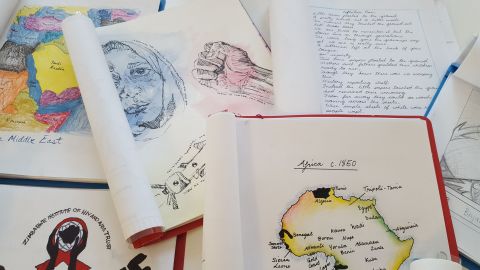 The 21st century has so far been a homework-heavy era, with American teenagers now averaging about twice as much time spent on homework each day as their predecessors did in the 1990s. Even little kids are asked to bring school home with them. A 2015 study, for instance, found that kindergarteners, who researchers tend to agree shouldn’t have any take-home work, were spending about 25 minutes a night on it.
The 21st century has so far been a homework-heavy era, with American teenagers now averaging about twice as much time spent on homework each day as their predecessors did in the 1990s. Even little kids are asked to bring school home with them. A 2015 study, for instance, found that kindergarteners, who researchers tend to agree shouldn’t have any take-home work, were spending about 25 minutes a night on it.
But not without pushback. As many children, not to mention their parents and teachers, are drained by their daily workload, some schools and districts are rethinking how homework should work—and some teachers are doing away with it entirely. They’re reviewing the research on homework (which, it should be noted, is contested) and concluding that it’s time to revisit the subject.
Hillsborough, California, an affluent suburb of San Francisco, is one district that has changed its ways. The district, which includes three elementary schools and a middle school, worked with teachers and convened panels of parents in order to come up with a homework policy that would allow students more unscheduled time to spend with their families or to play. In August 2017, it rolled out an updated policy, which emphasized that homework should be “meaningful” and banned due dates that fell on the day after a weekend or a break.
“The first year was a bit bumpy,” says Louann Carlomagno, the district’s superintendent. She says the adjustment was at times hard for the teachers, some of whom had been doing their job in a similar fashion for a quarter of a century. Parents’ expectations were also an issue. Carlomagno says they took some time to “realize that it was okay not to have an hour of homework for a second grader—that was new.”
Most of the way through year two, though, the policy appears to be working more smoothly. “The students do seem to be less stressed based on conversations I’ve had with parents,” Carlomagno says. It also helps that the students performed just as well on the state standardized test last year as they have in the past.
Earlier this year, the district of Somerville, Massachusetts, also rewrote its homework policy, reducing the amount of homework its elementary and middle schoolers may receive. In grades six through eight, for example, homework is capped at an hour a night and can only be assigned two to three nights a week.
Jack Schneider, an education professor at the University of Massachusetts at Lowell whose daughter attends school in Somerville, is generally pleased with the new policy. But, he says, it’s part of a bigger, worrisome pattern. “The origin for this was general parental dissatisfaction, which not surprisingly was coming from a particular demographic,” Schneider says. “Middle-class white parents tend to be more vocal about concerns about homework … They feel entitled enough to voice their opinions.”
Schneider is all for revisiting taken-for-granted practices like homework, but thinks districts need to take care to be inclusive in that process. “I hear approximately zero middle-class white parents talking about how homework done best in grades K through two actually strengthens the connection between home and school for young people and their families,” he says. Because many of these parents already feel connected to their school community, this benefit of homework can seem redundant. “They don’t need it,” Schneider says, “so they’re not advocating for it.”
That doesn’t mean, necessarily, that homework is more vital in low-income districts. In fact, there are different, but just as compelling, reasons it can be burdensome in these communities as well. Allison Wienhold, who teaches high-school Spanish in the small town of Dunkerton, Iowa, has phased out homework assignments over the past three years. Her thinking: Some of her students, she says, have little time for homework because they’re working 30 hours a week or responsible for looking after younger siblings.
As educators reduce or eliminate the homework they assign, it’s worth asking what amount and what kind of homework is best for students. It turns out that there’s some disagreement about this among researchers, who tend to fall in one of two camps.
In the first camp is Harris Cooper, a professor of psychology and neuroscience at Duke University. Cooper conducted a review of the existing research on homework in the mid-2000s, and found that, up to a point, the amount of homework students reported doing correlates with their performance on in-class tests. This correlation, the review found, was stronger for older students than for younger ones.
This conclusion is generally accepted among educators, in part because it’s compatible with “the 10-minute rule,” a rule of thumb popular among teachers suggesting that the proper amount of homework is approximately 10 minutes per night, per grade level—that is, 10 minutes a night for first graders, 20 minutes a night for second graders, and so on, up to two hours a night for high schoolers.
In Cooper’s eyes, homework isn’t overly burdensome for the typical American kid. He points to a 2014 Brookings Institution report that found “little evidence that the homework load has increased for the average student”; onerous amounts of homework, it determined, are indeed out there, but relatively rare. Moreover, the report noted that most parents think their children get the right amount of homework, and that parents who are worried about under-assigning outnumber those who are worried about over-assigning. Cooper says that those latter worries tend to come from a small number of communities with “concerns about being competitive for the most selective colleges and universities.”
According to Alfie Kohn, squarely in camp two, most of the conclusions listed in the previous three paragraphs are questionable. Kohn, the author of The Homework Myth: Why Our Kids Get Too Much of a Bad Thing, considers homework to be a “reliable extinguisher of curiosity,” and has several complaints with the evidence that Cooper and others cite in favor of it. Kohn notes, among other things, that Cooper’s 2006 meta-analysis doesn’t establish causation, and that its central correlation is based on children’s (potentially unreliable) self-reporting of how much time they spend doing homework. (Kohn’s prolific writing on the subject alleges numerous other methodological faults.)
In fact, other correlations make a compelling case that homework doesn’t help. Some countries whose students regularly outperform American kids on standardized tests, such as Japan and Denmark, send their kids home with less schoolwork, while students from some countries with higher homework loads than the U.S., such as Thailand and Greece, fare worse on tests. (Of course, international comparisons can be fraught because so many factors, in education systems and in societies at large, might shape students’ success.)
Kohn also takes issue with the way achievement is commonly assessed. “If all you want is to cram kids’ heads with facts for tomorrow’s tests that they’re going to forget by next week, yeah, if you give them more time and make them do the cramming at night, that could raise the scores,” he says. “But if you’re interested in kids who know how to think or enjoy learning, then homework isn’t merely ineffective, but counterproductive.”
His concern is, in a way, a philosophical one. “The practice of homework assumes that only academic growth matters, to the point that having kids work on that most of the school day isn’t enough,” Kohn says. What about homework’s effect on quality time spent with family? On long-term information retention? On critical-thinking skills? On social development? On success later in life? On happiness? The research is quiet on these questions.
Another problem is that research tends to focus on homework’s quantity rather than its quality, because the former is much easier to measure than the latter. While experts generally agree that the substance of an assignment matters greatly (and that a lot of homework is uninspiring busywork), there isn’t a catchall rule for what’s best—the answer is often specific to a certain curriculum or even an individual student.
Given that homework’s benefits are so narrowly defined (and even then, contested), it’s a bit surprising that assigning so much of it is often a classroom default, and that more isn’t done to make the homework that is assigned more enriching. A number of things are preserving this state of affairs—things that have little to do with whether homework helps students learn.
Jack Schneider, the Massachusetts parent and professor, thinks it’s important to consider the generational inertia of the practice. “The vast majority of parents of public-school students themselves are graduates of the public education system,” he says. “Therefore, their views of what is legitimate have been shaped already by the system that they would ostensibly be critiquing.” In other words, many parents’ own history with homework might lead them to expect the same for their children, and anything less is often taken as an indicator that a school or a teacher isn’t rigorous enough. (This dovetails with—and complicates—the finding that most parents think their children have the right amount of homework.)
Barbara Stengel, an education professor at Vanderbilt University’s Peabody College, brought up two developments in the educational system that might be keeping homework rote and unexciting. The first is the importance placed in the past few decades on standardized testing, which looms over many public-school classroom decisions and frequently discourages teachers from trying out more creative homework assignments. “They could do it, but they’re afraid to do it, because they’re getting pressure every day about test scores,” Stengel says.
Second, she notes that the profession of teaching, with its relatively low wages and lack of autonomy, struggles to attract and support some of the people who might reimagine homework, as well as other aspects of education. “Part of why we get less interesting homework is because some of the people who would really have pushed the limits of that are no longer in teaching,” she says.
“In general, we have no imagination when it comes to homework,” Stengel says. She wishes teachers had the time and resources to remake homework into something that actually engages students. “If we had kids reading—anything, the sports page, anything that they’re able to read—that’s the best single thing. If we had kids going to the zoo, if we had kids going to parks after school, if we had them doing all of those things, their test scores would improve. But they’re not. They’re going home and doing homework that is not expanding what they think about.”
“Exploratory” is one word Mike Simpson used when describing the types of homework he’d like his students to undertake. Simpson is the head of the Stone Independent School, a tiny private high school in Lancaster, Pennsylvania, that opened in 2017. “We were lucky to start a school a year and a half ago,” Simpson says, “so it’s been easy to say we aren’t going to assign worksheets, we aren’t going assign regurgitative problem sets.” For instance, a half-dozen students recently built a 25-foot trebuchet on campus.
Simpson says he thinks it’s a shame that the things students have to do at home are often the least fulfilling parts of schooling: “When our students can’t make the connection between the work they’re doing at 11 o’clock at night on a Tuesday to the way they want their lives to be, I think we begin to lose the plot.”
When I talked with other teachers who did homework makeovers in their classrooms, I heard few regrets. Brandy Young, a second-grade teacher in Joshua, Texas, stopped assigning take-home packets of worksheets three years ago, and instead started asking her students to do 20 minutes of pleasure reading a night. She says she’s pleased with the results, but she’s noticed something funny. “Some kids,” she says, “really do like homework.” She’s started putting out a bucket of it for students to draw from voluntarily—whether because they want an additional challenge or something to pass the time at home.
Chris Bronke, a high-school English teacher in the Chicago suburb of Downers Grove, told me something similar. This school year, he eliminated homework for his class of freshmen, and now mostly lets students study on their own or in small groups during class time. It’s usually up to them what they work on each day, and Bronke has been impressed by how they’ve managed their time.
In fact, some of them willingly spend time on assignments at home, whether because they’re particularly engaged, because they prefer to do some deeper thinking outside school, or because they needed to spend time in class that day preparing for, say, a biology test the following period. “They’re making meaningful decisions about their time that I don’t think education really ever gives students the experience, nor the practice, of doing,” Bronke said.
The typical prescription offered by those overwhelmed with homework is to assign less of it—to subtract. But perhaps a more useful approach, for many classrooms, would be to create homework only when teachers and students believe it’s actually needed to further the learning that takes place in class—to start with nothing, and add as necessary.
Education for an Unpredictable Future
Teens Feel Ready for College, But Not So Much for Work
A new poll found that 74 percent of high school students think they’ll have a job in 20 years that hasn’t been invented yet. How do schools prepare students for that future? In Waldorf education we focus on helping students develop creativity and problem solving skills, communication, teamwork, and empathy, as well as the ability to take their ideas and put them into practice in the real world. These skills are foundational, and prepare students to successfully navigate the unpredictable and rapidly changing world of work and the diverse paths to higher education.
This piece was originally published by Alyson Klein in Education Week
High schoolers believe that their educational experience is getting them ready for college. But they’re less certain that their coursework is preparing them for the world of work.
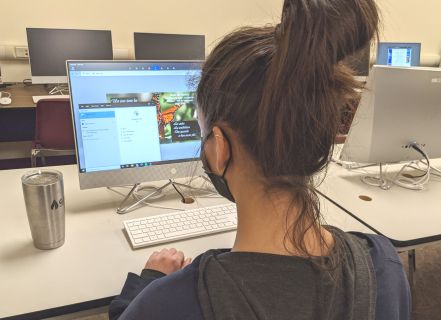
That’s one of the big takeaways from surveys published recently by the Ewing Marion Kauffman Foundation, a nonprofit philanthropy based in Kansas City, Mo. The survey found that 81 percent of students felt that high school got them “very” or “somewhat” ready for college, compared with just 52 percent who felt it prepared them for the workforce.
“People are coming out of this sort of either-or,” said Aaron North, the vice president of education at the Kauffman Foundation. “You’re going to college, or you’re not. You’re getting a job after high school or you’re not. I think that’s not reflective of the reality of what’s on the other side of that graduation stage for them.”
He expects that, in the future, many students will transfer in and out of the workforce, gaining both educational credentials and on-the-job experience.
The survey also found that students and adults in general expect that technology and computer science jobs will be a major growth industry, with 85 percent of adults and 88 percent of students saying they expect those gigs to be in “much” or at least “somewhat more” in demand in the next decade.
And 74 percent of students think they’ll have a job in 20 years that hasn’t been invented yet.
Students “have only grown up in an age of really accelerated tech evolution,” North said. “I think that’s just the world that they are in. It is a world of creation. It is a world of change.”
‘Practical Connection’ Needed
Overwhelmingly, students, parents, and employers surveyed thought high schoolers would be better off learning how to file their taxes than learning about the Pythagorean theorem. At least 82 percent of parents, students, and employers thought schools should focus more on the 1040-EZ form than on that fundamental concept in geometry.
And 81 percent of students said they thought high school should focus most closely on helping students develop real-world skills such as problem-solving and collaboration rather than focusing so much on specific academic-subject-matter expertise.
“I think what that highlights is this idea that there needs to be this practical connection between what and how you are learning when you’re in school and what happens when you’re not in school,” North said. “So that doesn’t mean it has to be directly related to your everyday life, but it does mean that there could be a balance between things that may be applicable to a very narrow number of fields and things that are highly applicable to your life no matter what field you go into or what path you choose.”
Employers are also more likely to rate employees highly if they have completed an internship in their industry and have technical certifications than if they only have a college degree, the survey found.
But at the same time, 56 percent of employers surveyed felt that someone with only a high school degree would be held back from success in life because of their education. Students were even more convinced of the benefits of college, with 63 percent saying that having only a high school education would be a roadblock to success.
Still, most adults—59 percent of those surveyed—said they can’t connect what they learned in high school to their current jobs. That’s especially true of workers in blue-collar jobs, 61 percent of whom say that their jobs weren’t relevant to their high school educations, compared with 52 percent of white-collar employees.
“Parents who have experienced a noncollege pathway understand that those pathways are viable and they can lead to really good options,” North said. “A huge percentage of our population ends up not getting a college degree. And so there are millions and millions of people out there navigating the nondegree world, without much of a road map, the kind of road map we’ve provided around college. So I think that’s reflective of people who have found that and are understanding that, whether it’s for themselves or for their own kids.”
Old Strategies, New Jobs
Similarly, a separate report released last week by the RAND Corp., found that the needs of the workforce have transformed dramatically thanks to technological changes, globalization, and demographic shifts. But K-12 schools, postsecondary institutions, and job-training organizations are preparing students for jobs using essentially the same set of strategies they’ve been relying on for decades.

At the same time, employers are struggling to find workers with so-called “21st-century skills” such as information synthesis, creativity, problem-solving, communication, and teamwork. Yet the path forward is not easy for workers looking to upgrade their skills because of automation or shifting consumer demands.
“Employers are saying they can’t find employees with the skills they need, and on the other end, you have workers whose jobs have been made less relevant,” said Melanie Zaber, an associate economist at RAND, a nonprofit research organization.
The blame shouldn’t be all on schools, the RAND report emphasizes. Employers and education and job-training institutions don’t do a great job of systematically sharing information with schools that would allow them to better prepare students for the changing needs of the workforce. Plus, funding for K-12 education isn’t equally distributed and often neglects the areas that need strong pre-career training the most.
What also makes progress difficult is that high school principals rarely get to see how their students are doing years after they leave the classroom, Zaber said. “Letting high school principals see what happens when students leave their doors can help inform policy for where the gaps are, where the barriers are, where students are being let down,” she said.
How Kids Fall In Love With Reading
Since the 1980’s there has been a double digit decline in the number of kids who say they read for pleasure. What accounts for this? A standardized test-driven shift towards textual analysis, where students increasingly are asked to dissect small and out-of-context segments of text, and where reading aloud and reading entire stories have fallen by the wayside. In Waldorf education, we take the opposite approach. We start with engaging the children’s imaginations through storytelling and reading aloud. We know that love of reading starts with a love of stories, and that a love of reading opens up a lifetime love of learning.
This article was originally published in The Atlantic in March, 2023
 These days, when I explain to a fellow parent that I write novels for children in fifth through eighth grades, I am frequently treated to an apologetic confession: “My childdoesn’t read, at least not the way I did.” I know exactly how they feel—my tween and teen don’t read the way I did either. When I was in elementary school, I gobbled up everything: haunting classics such as The Witch of Blackbird Pond and gimmicky series such as the Choose Your Own Adventure books. By middle school, I was reading voluminous adult fiction like the works of Louisa May Alcott and J. R. R. Tolkien. Not every child is—or was—this kind of reader. But what parents today are picking up on is that a shrinking number of kids are reading widely and voraciously for fun.
These days, when I explain to a fellow parent that I write novels for children in fifth through eighth grades, I am frequently treated to an apologetic confession: “My childdoesn’t read, at least not the way I did.” I know exactly how they feel—my tween and teen don’t read the way I did either. When I was in elementary school, I gobbled up everything: haunting classics such as The Witch of Blackbird Pond and gimmicky series such as the Choose Your Own Adventure books. By middle school, I was reading voluminous adult fiction like the works of Louisa May Alcott and J. R. R. Tolkien. Not every child is—or was—this kind of reader. But what parents today are picking up on is that a shrinking number of kids are reading widely and voraciously for fun.
The ubiquity and allure of screens surely play a large part in this—most American children have smartphones by the age of 11—as does learning loss during the pandemic. But this isn’t the whole story. A survey just before the pandemic by the National Assessment of Educational Progress showed that the percentages of 9- and 13-year-olds who said they read daily for fun had dropped by double digits since 1984. I recently spoke with educators and librarians about this trend, and they gave many explanations, but one of the most compelling—and depressing—is rooted in how our education system teaches kids to relate to books.
What I remember most about reading in childhood was falling in love with characters and stories; I adored Judy Blume’s Margaret and Beverly Cleary’s Ralph S. Mouse. In New York, where I was in public elementary school in the early ’80s, we did have state assessments that tested reading level and comprehension, but the focus was on reading as many books as possible and engaging emotionally with them as a way to develop the requisite skills. Now the focus on reading analytically seems to be squashing that organic enjoyment. Critical reading is an important skill, especially for a generation bombarded with information, much of it unreliable or deceptive. But this hyperfocus on analysis comes at a steep price: The love of books and storytelling is being lost.
This disregard for story starts as early as elementary school. Take this requirement from the third-grade English-language-arts Common Core standard, used widely across the U.S.: “Determine the meaning of words and phrases as they are used in a text, distinguishing literal from nonliteral language.” There is a fun, easy way to introduce this concept: reading Peggy Parish’s classic, Amelia Bedelia, in which the eponymous maid follows commands such as “Draw the drapes when the sun comes in” by drawing a picture of the curtains. But here’s how one educator experienced in writing Common Core–aligned curricula proposes this be taught: First, teachers introduce the concepts of nonliteral and figurative language. Then, kids read a single paragraph from Amelia Bedelia and answer written questions.
For anyone who knows children, this is the opposite of engaging: The best way to present an abstract idea to kids is by hooking them on a story. “Nonliteral language” becomes a whole lot more interesting and comprehensible, especially to an 8-year-old, when they’ve gotten to laugh at Amelia’s antics first. The process of meeting a character and following them through a series of conflicts is the fun part of reading. Jumping into a paragraph in the middle of a book is about as appealing for most kids as cleaning their room.
But as several educators explained to me, the advent of accountability laws and policies, starting with No Child Left Behind in 2001, and accompanying high-stakes assessments based on standards, be they Common Core or similar state alternatives, has put enormous pressure on instructors to teach to these tests at the expense of best practices. Jennifer LaGarde, who has more than 20 years of experience as a public-school teacher and librarian, described how one such practice—the class read-aloud—invariably resulted in kids asking her for comparable titles. But read-alouds are now imperiled by the need to make sure that kids have mastered all the standards that await them in evaluation, an even more daunting task since the start of the pandemic. “There’s a whole generation of kids who associate reading with assessment now,” LaGarde said.
By middle school, not only is there even less time for activities such as class read-alouds, but instruction also continues to center heavily on passage analysis, said LaGarde, who taught that age group. A friend recently told me that her child’s middle-school teacher had introduced To Kill a Mockingbird to the class, explaining that they would read it over a number of months—and might not have time to finish it. “How can they not get to the end of To Kill a Mockingbird?” she wondered. I’m right there with her. You can’t teach kids to love reading if you don’t even prioritize making it to a book’s end. The reward comes from the emotional payoff of the story’s climax; kids miss out on this essential feeling if they don’t reach Atticus Finch’s powerful defense of Tom Robinson in the courtroom or never get to solve the mystery of Boo Radley.
Not every teacher has to focus on small chunks of literature at the expense of the whole plot, of course. But as a result of this widespread message, that reading a book means analyzing it within an inch of its life, the high/low dichotomy that has always existed in children’s literature (think The Giver versus the Goosebumps series) now feels even wider. “What do you call your purely fun books for kids?” a middle-grade author recently asked on Twitter. A retired fifth-grade teacher seemed flummoxed by the question: “I never called a book a fun book,” she wrote. “I’d say it’s a great book, a funny book, a touching book … So many books ARE fun!!”
And yet the idea that reading all kinds of books is enjoyable is not the one kids seem to be receiving. Even if most middle schoolers have read Diary of a Wimpy Kid, it’s not making them excited to move on to more challenging fare. Longer books, for example, are considered less “fun”; in addition, some librarians, teachers, and parents are noticing a decline in kids’ reading stamina after the disruption of the pandemic. You can see these factors at play in a recent call for shorter books. But one has to wonder whether this is also the not-entirely-unsurprising outcome of having kids interact with literature in paragraph-size bites.
We need to meet kids where they are; for the time being, I am writing stories that are shorter and less complex. At the same time, we need to get to the root of the problem, which is not about book lengths but the larger educational system. We can’t let tests control how teachers teach: Close reading may be easy to measure, but it’s not the way to get kids to fall in love with storytelling. Teachers need to be given the freedom to teach in developmentally appropriate ways, using books they know will excite and challenge kids. (Today, with more diverse titles and protagonists available than ever before, there’s also a major opportunity to spark joy in a wider range of readers.) Kids should be required to read more books, and instead of just analyzing passages, they should be encouraged to engage with these books the way they connect with “fun” series, video games, and TV shows.
Young people should experience the intrinsic pleasure of taking a narrative journey, making an emotional connection with a character (including ones different from themselves), and wondering what will happen next—then finding out. This is the spell that reading casts. And, like with any magician’s trick, picking a story apart and learning how it’s done before you have experienced its wonder risks destroying the magic.
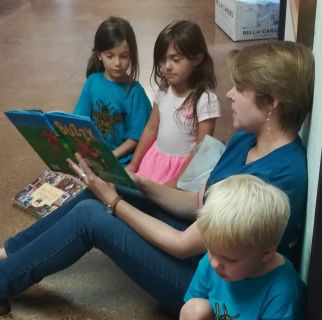
Waldorf Schools are Media Literacy Role Models
Waldorf education emphasizes thoughtful, intentional and developmentally appropriate technology use. We advocate for an experiential, relationship-based approach in early education, followed by a curriculum for older students that helps them understand tech as a tool, and engages them in conversations around digital ethics, privacy, media literacy, and balanced use of social media and technology. Our approach gives Waldorf graduates the tools and knowledge they need to be independent, creative, and ethical digital citizens. At Rudolf Steiner School of Ann Arbor, Cyber Civics is a required class in grades 6-8 and Computer Science and Programming are taught at the high school level.
This post was written by Soni Albright and originally published on cybercivics.com
As we celebrate Media Literacy Week… it’s hard to believe that Waldorf schools in North America have been leading the way when it comes to Media Literacy education.
What’s that? Waldorf schools and “Media” Literacy?
Do you mean those schools that are notoriously low-tech, and focus on things like face-to-face communication, hands-on learning, the great outdoors, and an art/music/movement integrated curriculum?
Yep, those schools!
Cyber Civics was founded at a public charter Waldorf school —Journey School—in 2010. Since its inception, most Waldorf schools (private and public) in North America, and many more internationally, have adopted the Cyber Civics program in their schools, and the vast majority have been teaching the lessons—which include digital citizenship, information literacy, and media literacy— since 2017.
Fast forward to 2021. The United States and most of the world is just now talking about the ‘need for digital citizenship’ and the importance of ‘educating our youth’ about media use, misinformation, balance and wellness and, most importantly, how to use tech ethically and wisely.
People worldwide are asking themselves “How do we control this Pandora’s Box after the pandemic? What can we do to help our kids help themselves in the digital landscape?”
All the while, Waldorf schools have been quietly holding this conversation with intentionality and patience: asking families to be thoughtful, mindful, discerning, and slow with media access for children. Not to deprive them, but rather to give children the gift of childhood—the endless opportunities that come with downtime, boredom, and unscheduled freedom. To favor face-to-face interactions over abstract experiences. To work on self-regulation, problem solving, physical movement, and social-emotional regulation.
By the time Waldorf students get to middle school, even though many aren’t using digital media at the same level as average kids their age, most are participating in weekly Cyber Civics lessons ranging from simple concepts such as what it means to be a citizen in any community and how to apply that to the digital world to more advanced topics such as: privacy and personal information, identifying misinformation, reading visual images, recognizing stereotypes and media representations, and ethical thinking in future technologies.
While many middle school students know their way around the device / app / platform, they haven’t been trained much in ethics, privacy, balance, and the decision-making aspects actually needed to survive and thrive in the digital age during adolescence.
We are so grateful for all the Waldorf schools that recognized the need for this important curriculum years ago, and who have grown with us over the years. We have learned with you, about our young people and what they need from us as examples and digital citizens.
Thank you for paving the way for this curriculum to be brought to so many other schools and community groups beyond the Waldorf sphere—public and private schools... Catholic, Hebrew, Montessori, and more.
And please take a bow for being the Media Literacy role models the world so desperately needs.
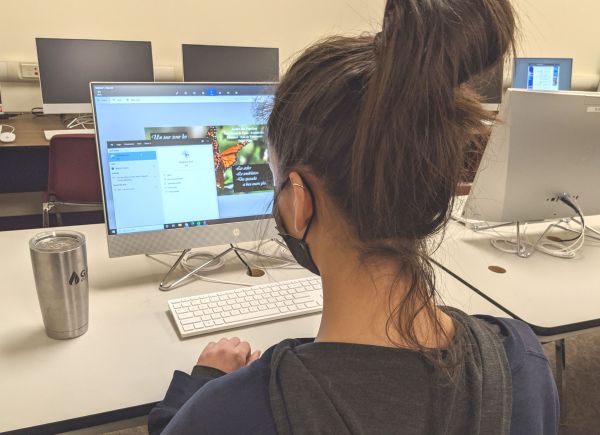
How Outdoor Learning Affects Students
A recent study focusing on children aged 5 to 18 revealed that outdoor education and activities have a multitude of benefits for students. Not only did students exhibit higher levels of self-confidence, stronger friendships, and a greater sense of belonging, but academic performance in math, science, and language also saw an improvement, coupled with increased motivation to learn. Waldorf education places significant value on diverse forms of outdoor learning and experiences, such as scientific observation and environmental projects, camping, field trips, and free exploratory play.
This article was originally published on Children & Nature Network.
Effects of regular classes in outdoor education settings: A systematic review on students' learning, social and health dimensions
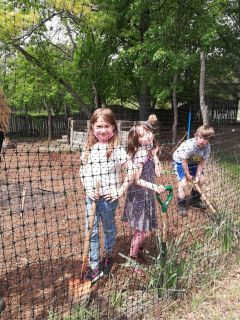
during a gardening class.
Regular classes in outdoor settings can promote students’ learning, health, social development, and concern for the environment
This systematic review of the literature was conducted (1) to identify studies about compulsory school- and curriculum-based outdoor education programs (OEPs) for students aged 5-18, (2) to categorize and evaluate outcomes, (3) to assess the methodological quality of the studies, and (4) to discuss possible benefits of such programs for students. The OEPs included in this review offered regular weekly or bi-weekly classes in a natural or cultural environment outside the classroom for at least four hours per week over a period of at least two months. In these programs, the outdoor learning was an embedded component of the school’s curriculum. Only studies reporting at least one student outcome and published in English- and German-language peer-reviewed journals were included.
Only thirteen studies met the inclusion criteria, indicating that the current state of research on OEPs is relatively small. The goals, participant groups, learning environments, methods used and reported outcomes differed widely across the programs. The methodological quality of the studies was, on average, moderate. Eight studies reported outcomes in terms of social dimensions, seven in learning dimensions, and four in additional outcomes. Two studies in the “additional outcomes” category reported on students’ physical activity, one on students’ mental health, one on action regulation behavior, and one on students’ environmental attitude and behavior.
Social outcomes included improved social competencies and social relations, such as self-esteem, self-confidence, trusting relationships, and the sense of belonging. Learning outcomes included improved academic performance in several subjects and improved skills in transferring the knowledge gained to real life situations. Two studies reporting learning outcomes also reported possible benefits relating to learning motivation. The research on physical activity, mental health and action regulation behavior was underrepresented in comparison to results in learning and social dimensions. The study reporting mental health outcomes found a significant decrease in mental health problems for boys but not for girls. One study reported growth in students’ self-confidence, leading them to take active responsibility for the environment.
The overall results of this review indicate that regular compulsory school- and curriculum-based OEPs can promote students’ social, academic, physical and psychological development. Further research is needed, however, to support what this review reports as “tendencies” in relation to the reported outcomes. The authors recommend more quasi-experimental and longitudinal studies with a greater number of participants and high methodological quality.
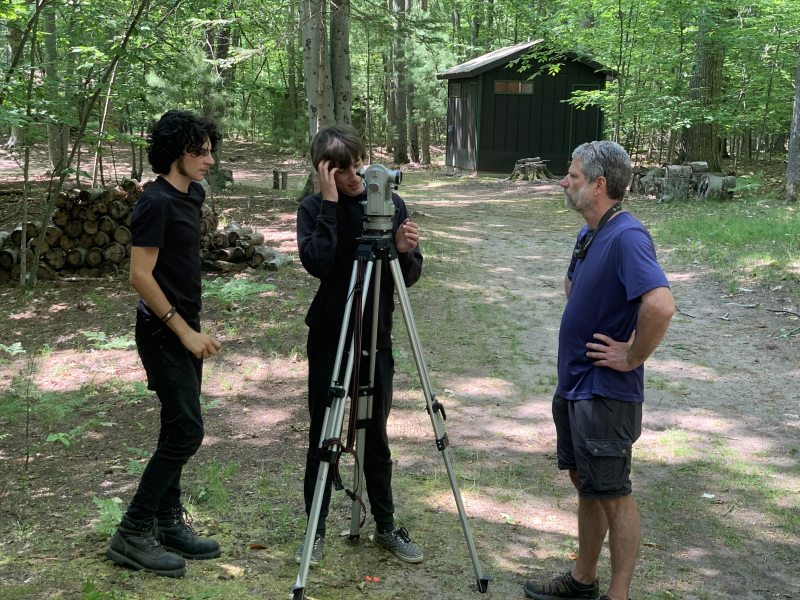
History Through Architecture
History through Architecture is a culminating course in the K-12 journey of Waldorf Education. It is a sweeping survey that traces the development of human consciousness over millennia from the earliest times to the present, including speculations about what the future may hold for our collective lives on Earth. Through this year’s special block, our 12th Graders explored their unique places in the long line of other human beings who have come before them. They began to see themselves with new eyes as they related to the larger human story.
The vehicle for their experience is what we call Architecture…a kind of “memory chip” that holds a rich tapestry of data points logged from all aspects of humanity – iconic facets that have imbued the “bricks-and-mortar” of buildings, cities, landscapes and human-made systems with the zeitgeist or spirit of the age in which they were manifested. Specific teachings in this block have been artfully designed to showcase how human ingenuity advanced with each succeeding generation. New ideas imaginatively evolved to produce structures, materials, energy and metaphysical awareness that created all our structures from simple barrow mounds of earliest human settlements to the soaring skyscrapers of our modern world. All of them imbued with an inner force – a seeking for higher awareness – what we term today a “spiritual experience”.
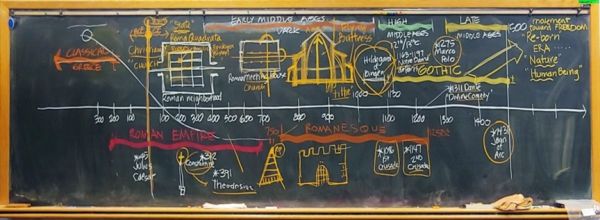
Colorful, hand-drawn chalkboards of chronological, step-by-step timelines showed how passive and dynamic forces of compression and tension moved across time to shape clay, stone, brick, metal, glass and myriad other materials and processes into the infinitely varied forms that we see in our material world. Concepts of “boundary” and “monument” drove the construction of fences, walls for protection from weather and wild animals, but also marked personal identity – whether for an individual or for tribes and clans, where the “I” became a “we”.
 The students hand drew and wrote the salient points of the block into their Main Lesson books. Applying their innate Creativity and Imagination, they recorded the content of their learning. Some exercises were given to demonstrate how historic structures could be shown in plan, section and in three dimensions for learning how buildings are represented.
The students hand drew and wrote the salient points of the block into their Main Lesson books. Applying their innate Creativity and Imagination, they recorded the content of their learning. Some exercises were given to demonstrate how historic structures could be shown in plan, section and in three dimensions for learning how buildings are represented.
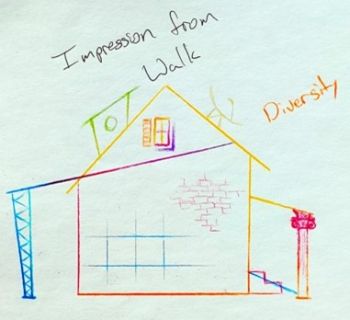 Other exercises engage the students’ personal observations and imaginations. For example, an “Impression/Expression” exercise was assigned for an outside walk taken through the Pontiac Trail neighborhood during one class period. Each student observed a particular perception along the way (a house, a tree, the rhythm of structures, a door or window detail, etc.) that impressed them. Returning to school, some form of expression was made from memory that described the nature of the student’s experience.
Other exercises engage the students’ personal observations and imaginations. For example, an “Impression/Expression” exercise was assigned for an outside walk taken through the Pontiac Trail neighborhood during one class period. Each student observed a particular perception along the way (a house, a tree, the rhythm of structures, a door or window detail, etc.) that impressed them. Returning to school, some form of expression was made from memory that described the nature of the student’s experience.
We contrasted challenging Thinking of the block’s first week with a Clay Handwork exercise that explored the curved line under the force of compression that freed the student’s imagination.
In the second week, Wooden Sticks Handwork created a new experience reflecting the advent of the straight-line forces of tension in history that led to developing open-structured trusses.

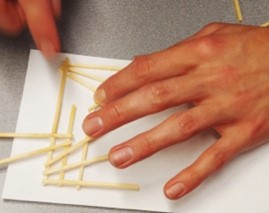

Toward the end of the block, after experiencing the great diversity of human structures built throughout history, students were given a final project where they were asked to design their own “architecture”. The day the assignment was given, this year’s Seniors immediately jumped into action, eagerly discussing possibilities and ideas for their individual or group to develop.
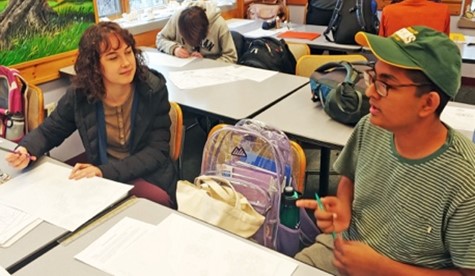 Over several days, students collaborated, talking and sketching ideas until a final design became clear. Every student prepared a statement, drawings, or a model to describe their vision. They then stood before their classmates and presented unique designs which inspired thoughtful questions and comments. This process of inner creativity - manifesting into outer forms -teaches lessons that will serve our Seniors as they venture out into the wider world to pursue their dreams in coming years.
Over several days, students collaborated, talking and sketching ideas until a final design became clear. Every student prepared a statement, drawings, or a model to describe their vision. They then stood before their classmates and presented unique designs which inspired thoughtful questions and comments. This process of inner creativity - manifesting into outer forms -teaches lessons that will serve our Seniors as they venture out into the wider world to pursue their dreams in coming years.
It is a great joy for me to witness the various revelations that unfold through each 12th Grader as they come to know themselves more deeply in the History through Architecture block.
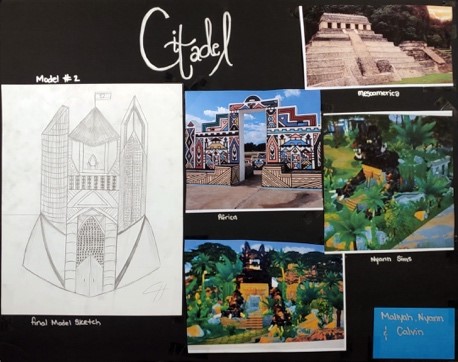

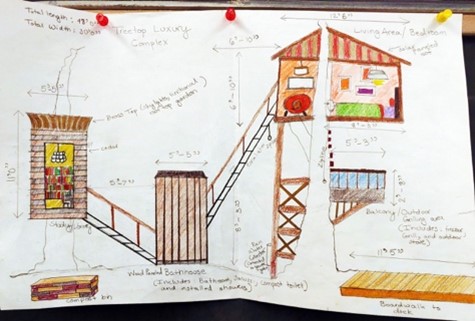
Adaptability Quotient: Educating for an Uncertain Future
With increasingly rapid changes in the nature of work, employers are interested not just in intelligence and social skills, but in an employee’s adaptability quotient–their ability to adjust to new challenges with flexibility, curiosity, courage, resilience, and problem-solving skills. In Waldorf education, we deepen rigorous academics by integrating art, outdoor education, music, theater, practical work, movement and hands-on learning. The depth and breadth of the Waldorf curriculum challenges students and develops crucial capacities that will help them adapt and thrive throughout their lives.
.jpg/Surpassing_Stem(1)__600x450.jpg)
This article was originally published Seb Murray on BBC.com
As workplaces change, is it enough to be smart? Enter AQ, the capacity to adapt that may well determine your future career success.
Once, if you wanted to assess how well someone might do climbing the career ladder, you might have considered asking them to take an IQ test. For years, it was thought that the intelligence quotient (IQ) test – which measures memory, analytical thinking and mathematical ability – was one of the best ways to predict our future job prospects.
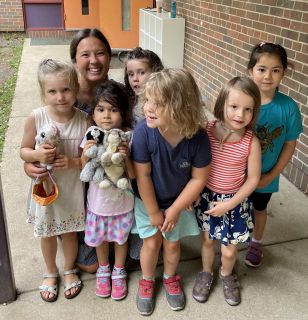 More recently, there has been increased attention on emotional intelligence (EQ), broadly characterized as a set of interpersonal, self-regulation and communication skills. EQ is now widely seen as a tool kit that plays an important role in helping us succeed in multiple aspects of life. Both IQ and EQ are considered important to our career success. But today, as technology redefines how we work, the skills we need to thrive in the job market are evolving too. Enter adaptability quotient, or AQ, a subjective set of qualities loosely defined as the ability to pivot and flourish in an environment of fast and frequent change.
More recently, there has been increased attention on emotional intelligence (EQ), broadly characterized as a set of interpersonal, self-regulation and communication skills. EQ is now widely seen as a tool kit that plays an important role in helping us succeed in multiple aspects of life. Both IQ and EQ are considered important to our career success. But today, as technology redefines how we work, the skills we need to thrive in the job market are evolving too. Enter adaptability quotient, or AQ, a subjective set of qualities loosely defined as the ability to pivot and flourish in an environment of fast and frequent change.
“IQ is the minimum you need to get a job, but AQ is how you will be successful over time,” says Natalie Fratto, a New York-based vice-president at Goldman Sachs who became interested in AQ when she was investing in tech start-ups. She has subsequently presented a popular TED talk on the subject. Fratto says AQ is not just the capacity to absorb new information, but the ability to work out what is relevant, to unlearn obsolete knowledge, overcome challenges, and to make a conscious effort to change. AQ involves flexibility, curiosity, courage, resilience and problem-solving skills too.
Amy Edmondson, a professor of leadership and management at Harvard Business School, says it is the breakneck speed of workplace change that will make AQ more valuable than IQ. Technology has vastly changed how many jobs are done, and the disruption will continue – over the next three years, 120 million people in the world’s 12 largest economies may need to be reskilled because of automation, according to a 2019 IBM study.
Any roles that involve spotting patterns in data – lawyers reviewing legal documents or doctors making a patient diagnosis, for example – are easy to automate, says Dave Coplin, CEO of The Envisioners, a UK-based technology consultancy. This is because an algorithm can do these tasks faster and more accurately than a human, he says. To avoid obsolescence, workers doing these jobs need to develop new skills like creativity to solve new problems, empathy to communicate better and accountability, using human intuition to supplement insight from machines. “If an algo can do 30% of the tasks that I used to do, what can I do with that spare capacity? The winners are those who choose to do things that algos can’t.”
 Edmondson says every profession will require adaptability and flexibility, from banking to the arts. Say you are an accountant. Your IQ gets you through the examinations to become qualified, then your EQ helps you connect with an interviewer, land a job and develop relationships with clients and colleagues. Then, when systems change or aspects of work are automated, you need AQ to accommodate this innovation and adapt to new ways of performing your role.
Edmondson says every profession will require adaptability and flexibility, from banking to the arts. Say you are an accountant. Your IQ gets you through the examinations to become qualified, then your EQ helps you connect with an interviewer, land a job and develop relationships with clients and colleagues. Then, when systems change or aspects of work are automated, you need AQ to accommodate this innovation and adapt to new ways of performing your role.
All three quotients are somewhat complementary, since they all help you to solve problems and therefore adapt, Edmondson says. An ideal candidate possesses all three, but not everyone does. “There are rigid geniuses,” she says. Having IQ, but no AQ would leave you struggling to embrace new ways of working using your existing skills – and low AQ makes it harder to acquire new ones.
AQ is now increasingly being sought at the hiring level. According to the IBM study, 5,670 executives globally rated behavioral skills as most critical for the workforce today, and chief among them was the “willingness to be flexible, agile and adaptable to change”. Will Gosling, Deloitte’s UK human capital consulting leader, says there’s no definitive method of measuring adaptability like an IQ test, but companies have woken up to AQ’s value and are changing their recruitment processes to help identify people who may be high in it.
Deloitte has started using immersive online simulations where job candidates are assessed on how well they adapt to potential workplace challenges; one assessment involves choosing how you would encourage reluctant colleagues to join a company triathlon team. Deloitte also looks to hire people who have shown they can perform in different functions, industries or geographies. “This proves they are agile and a fast learner,” Gosling says.
Fratto of Goldman Sachs, meanwhile, suggests three ways AQ might manifest in potential candidates: if they can picture possible versions of the future by asking “what if” questions, if they can unlearn information to challenge presumptions and if they enjoy exploration or seeking out new experiences.
She says this is not a definitive recipe for AQ, but recruiters should pose these kinds of questions to tease out evidence of AQ in candidates. In fact, she puts them to founders of start-ups seeking her investment.“Start-ups go through evolutions,” she explains. “It’s not like the founder has a written job description; they need some of a fluctuating list of 30 or 50 skills to be successful.”
One good thing about AQ is that – even if you can’t measure it – experts say you can work to develop it. Penny Locaso, the Australian founder ofBKindred, an education companythat helps people to become more adaptable, says some people have more curious or courageous personalities, which may explain why they are naturally better at adapting than others. “However, if one does not continue to surf the edge of their discomfort, the adaptability you are born with could decrease over time.”
She suggests three ways to boost your adaptability: first, limit distractions and learn to focus so you can determine what adaptations to make. Second, ask uncomfortable questions, like for a pay rise, to develop courage and normalize fear. Third, be curious about things that fascinate you by having more conversations rather than Googling the answer, something “which wires our brains to be lazy” and diminishes our ability to solve difficult challenges.
Otto Scharmer, a senior lecturer at the MIT Sloan School of Management who has written books on learning from the emerging future, suggests other methods. In a TED talk, he recommends remaining open to new possibilities, trying to see a situation through someone else’s eyes and reducing your ego so that you can feel comfortable with the unknown.
One thing we do know is that the workplaces of the future will operate differently. We may not all be comfortable with the pace of change – but we can prepare. As Edmondson says: “Learning to learn is mission critical. The ability to learn, change, grow, experiment will become far more important than subject expertise.”
Research Supports the Benefits of Arts Education
Research shows that students who engage in the arts at school perform better in math, reading, and writing, and have an enhanced social and emotional experience. Waldorf education integrates an array of arts into the curriculum to support academic growth, develop communication and collaboration skills, and give children a well-rounded, joyful educational journey!
This article was originally written by Brian Kisida and Daniel H. Bowen and published by the Brookings Institution

A critical challenge for arts education has been a lack of empirical evidence that demonstrates its educational value. Though few would deny that the arts confer intrinsic benefits, advocating “art for art’s sake” has been insufficient for preserving the arts in schools—despite national surveys showing an overwhelming majority of the public agrees that the arts are a necessary part of a well-rounded education.
Over the last few decades, the proportion of students receiving arts education has shrunk drastically. This trend is primarily attributable to the expansion of standardized-test-based accountability, which has pressured schools to focus resources on tested subjects. As the saying goes, what gets measured gets done. These pressures have disproportionately affected access to the arts in a negative way for students from historically underserved communities. For example, a federal government report found that schools designated under No Child Left Behind as needing improvement and schools with higher percentages of minority students were more likely to experience decreases in time spent on arts education.
We recently conducted the first ever large-scale, randomized controlled trial study of a city’s collective efforts to restore arts education through community partnerships and investments. Building on our previous investigations of the impacts of enriching arts field trip experiences, this study examines the effects of a sustained reinvigoration of schoolwide arts education. Specifically, our study focuses on the initial two years of Houston’s Arts Access Initiative and includes 42 elementary and middle schools with over 10,000 third- through eighth-grade students. Our study was made possible by generous support of the Houston Endowment, the National Endowment for the Arts, and the Spencer Foundation.
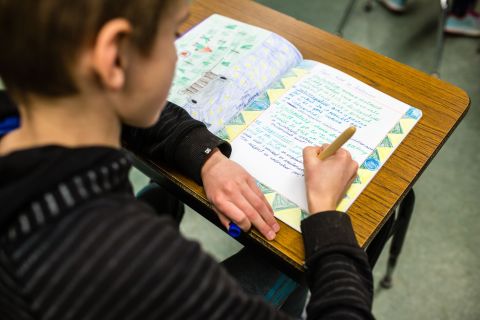
Due to the program’s gradual rollout and oversubscription, we implemented a lottery to randomly assign which schools initially participated. Half of these schools received substantial influxes of funding earmarked to provide students with a vast array of arts educational experiences throughout the school year. Participating schools were required to commit a monetary match to provide arts experiences. Including matched funds from the Houston Endowment, schools in the treatment group had an average of $14.67 annually per student to facilitate and enhance partnerships with arts organizations and institutions. In addition to arts education professional development for school leaders and teachers, students at the 21 treatment schools received, on average, 10 enriching arts educational experiences across dance, music, theater, and visual arts disciplines. Schools partnered with cultural organizations and institutions that provided these arts learning opportunities through before- and after-school programs, field trips, in-school performances from professional artists, and teaching-artist residencies. Principals worked with the Arts Access Initiative director and staff to help guide arts program selections that aligned with their schools’ goals.
Our research efforts were part of a multisector collaboration that united district administrators, cultural organizations and institutions, philanthropists, government officials, and researchers. Collective efforts similar to Houston’s Arts Access Initiative have become increasingly common means for supplementing arts education opportunities through school-community partnerships. Other examples include Boston’s Arts Expansion Initiative, Chicago’s Creative Schools Initiative, and Seattle’s Creative Advantage.
Through our partnership with the Houston Education Research Consortium, we obtained access to student-level demographics, attendance and disciplinary records, and test score achievement, as well as the ability to collect original survey data from all 42 schools on students’ school engagement and social and emotional-related outcomes.
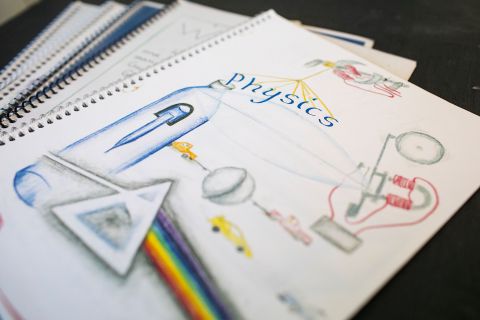
We find that a substantial increase in arts educational experiences has remarkable impacts on students’ academic, social, and emotional outcomes. Relative to students assigned to the control group, treatment school students experienced a 3.6 percentage point reduction in disciplinary infractions, an improvement of 13 percent of a standard deviation in standardized writing scores, and an increase of 8 percent of a standard deviation in their compassion for others. In terms of our measure of compassion for others, students who received more arts education experiences are more interested in how other people feel and more likely to want to help people who are treated badly.
When we restrict our analysis to elementary schools, which comprised 86 percent of the sample and were the primary target of the program, we also find that increases in arts learning positively and significantly affect students’ school engagement, college aspirations, and their inclinations to draw upon works of art as a means for empathizing with others. In terms of school engagement, students in the treatment group were more likely to agree that school work is enjoyable, makes them think about things in new ways, and that their school offers programs, classes, and activities that keep them interested in school. We generally did not find evidence to suggest significant impacts on students’ math, reading, or science achievement, attendance, or our other survey outcomes, which we discuss in our full report.
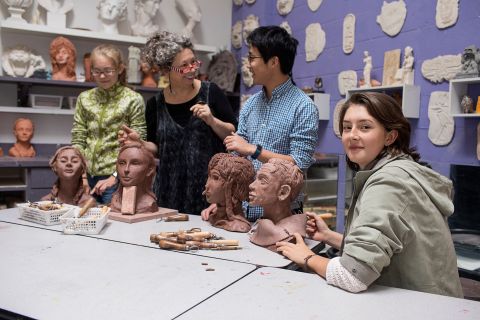
As education policymakers increasingly rely on empirical evidence to guide and justify decisions, advocates struggle to make the case for the preservation and restoration of K-12 arts education. To date, there is a remarkable lack of large-scale experimental studies that investigate the educational impacts of the arts. One problem is that U.S. school systems rarely collect and report basic data that researchers could use to assess students’ access and participation in arts educational programs. Moreover, the most promising outcomes associated with arts education learning objectives extend beyond commonly reported outcomes such as math and reading test scores. There are strong reasons to suspect that engagement in arts education can improve school climate, empower students with a sense of purpose and ownership, and enhance mutual respect for their teachers and peers. Yet, as educators and policymakers have come to recognize the importance of expanding the measures we use to assess educational effectiveness, data measuring social and emotional benefits are not widely collected. Future efforts should continue to expand on the types of measures used to assess educational program and policy effectiveness.
These findings provide strong evidence that arts educational experiences can produce significant positive impacts on academic and social development. Because schools play a pivotal role in cultivating the next generation of citizens and leaders, it is imperative that we reflect on the fundamental purpose of a well-rounded education. This mission is critical in a time of heightened intolerance and pressing threats to our core democratic values. As policymakers begin to collect and value outcome measures beyond test scores, we are likely to further recognize the value of the arts in the fundamental mission of education.
Cooking Up An Outstanding Language Program
The language learning process at our school has a lot of parallels with the Slow Food Movement. Great ingredients, seasonal produce, love, and appropriate time to prepare and cook are all hallmarks of an outstanding dish. A similar, thoughtful, well-paced approach leads to similarly outstanding results when teaching a language.
The aim of our World Languages program is to not only help students learn to communicate in a language other than English, but also to help them become familiar with and feel comfortable in a different culture and way of life. Rather than offering just a taste of the language, students are invited to a banquet of listening and speaking, songs and stories, art, recitations, movement and games. Classes are immersive and frequent, with four language lessons each week. In PreK-Grade 7, the students alternate between Spanish and German throughout the year, giving them a base in both languages and cultures. In Grades 8-12, students can choose which language they’d prefer to develop a stronger proficiency in and focus exclusively on that language. These are the ingredients that form the base of our language program.
Up to Grade 3, languages are taught entirely orally and auditorily, with reading and writing in Spanish and German introduced in Grade 4. Much like a child only hears and speaks their native language before learning to read and write it, allowing students the time for oral and auditory development of the languages before introducing reading and writing is a developmentally-appropriate approach to language learning. This “seasonal” approach helps to ensure students are prepared for and excited about the next level of learning.
Like the garnish that enhances the presentation of a dish, the beauty of the language is an important factor in our teaching. Through the inclusion of cultural experiences, history, music, and art, Spanish and German learning is enhanced. The teachers plan the subject matter in a way that invites children to open their hearts to the new language and fall in love with the culture as well as the words. This leads many students to pursue a first-hand taste of the culture and language in a native-speaking country through our high school exchange program.
Similar to crafting an amazing dish to share with those you love, our great teachers, eager students, and an age-appropriate, consistently-building approach is a recipe for creating a love of and respect for the languages and cultures that we are proud to share with our school community through our World Languages program.
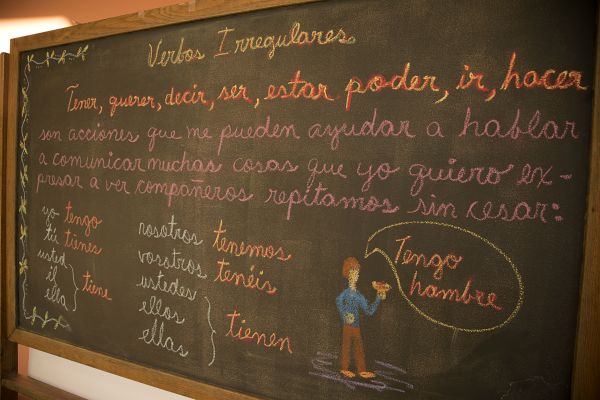
Yes! Field Trips Are Worth The Effort!
Research shows that field trips aren’t just fun and disruptive “extras”; these trips have strong academic and behavioral benefits. A recent study showed that students who went on multiple field trips performed better academically and were less likely to miss school or have behavioral issues than their peers. Waldorf schools value engaging students with the world through hands-on experiences and have specific cultural, community service, and outdoor education trips built into our curriculum to further enrich and enliven our students' education!
This article was originally written by Paige Tutt and published in Edutopia
As a teacher, Elena Aguilar often looked for opportunities to get her students out of the classroom and into different neighborhoods or natural environments. “We did the usual museum trips and science center stuff, but I loved the trips which pushed them into unfamiliar territory,” writes Aguilar, an instructional coach and author. Nudging kids out of their comfort zones, she says, “taught them about others as well as themselves. It helped them see the expansiveness of our world and perhaps inspired them to think about what might be available to them out there.”
Aguilar’s thinking made an impact: 15 years after traveling with her third-grade class to Yosemite National Park, a student contacted Aguilar on Facebook to thank her for the life-changing excursion. “You changed our lives with that trip,” the student wrote. “It's what made me want to be a teacher, to be able to give that same gift to other kids.”
As schools grapple with pandemic-related concerns about balancing in-seat instructional time with non-essentials like trips, new research published in The Journal of Human Resources argues that field trips, and the vital educational experiences that they provide—whether it’s a visit to a local museum or a big commitment like Aguilar’s national park trip—deliver a host of positive social and academic outcomes and are worth the effort.
“The pandemic should not keep schools from providing these essential cultural experiences forever,” asserts Jay P. Greene, one of the study’s co-authors and a senior research fellow at the Heritage Foundation, in an opinion piece for the Daily News. “If schools make culturally-enriching field trips an integral part of the education experience, all students—especially those whose parents have a harder time accessing these experiences on their own—would benefit.”
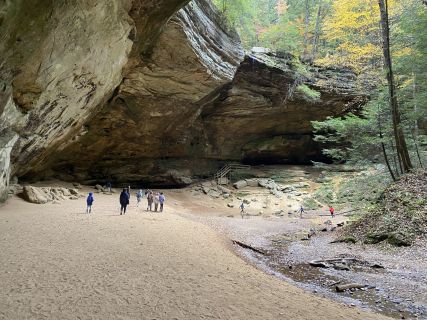
In the study, researchers assigned more than 1,000 fourth- and fifth-grade students in Atlanta to two groups. One group participated in three to six “culturally-enriching” field trips—visits to an art museum, a live theater performance, and a symphony concert—while students in the control group stayed put in class. The outcome? Kids in the field trip group “scored higher on end-of-grade exams, received higher course grades, were absent less often, and had fewer behavioral infractions,” compared to students in the control group, according to a ScienceDaily brief. Benefits lasted two to three years, Greene writes, and were “most visible when students were in middle school.”
“We are able to demonstrate that a relatively simple intervention—and we consider it pretty low-touch; three field trips in a year, maybe six field trips in two years—can actually have some substantial impacts,” says lead study author Heidi Holmes Erickson in an interview with The 74. “They’re not just limited to social benefits. It shows that smaller interventions can actually have some significant effects on academics as well.”
Field trips aren’t a threat to in-class instruction, Erickson notes, they’re a tool to help bolster engagement and expand students’ horizons. “It's possible to expose students to a broader world and have a culturally enriching curriculum without sacrificing academic outcomes, and it may actually improve academic outcomes,” Erickson says. Far from harming test scores, the researchers found that culturally rich excursions reinforce academics and “students who participated in these field trips were doing better in class.”
Meanwhile, class trips don't need to be elaborate productions to make an impact: small excursions outside the classroom—"low-touch," as the researchers call them—can pack a punch. Here’s how three educators recommend dialing it back with low-stakes options that are both engaging and stimulating for students, but might not require days to prepare and plan:
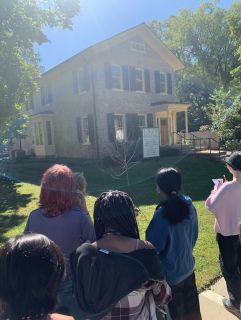
Make Them Bite-Sized: Instead of allocating an entire day to a field trip, educational consultant Laurel Schwartz takes her classes on micro field trips, or “short outings that can be completed in a single class period.” These real-world encounters, she says, are especially beneficial for English learners and world language students. A micro field trip to a nearby park or around school grounds, for example, can be a great opportunity to “enhance a unit on nature and wildlife while reinforcing vocabulary for senses, colors, and the concepts of quantity and size,” Schwartz writes. “Afterwards, students might write descriptive stories set in the place you visited using vocabulary collected and defined together by the class.”
Try Teacher-Less Trips: To encourage exploration and learning outside of the classroom, former social studies teacher Arch Grieve removes himself from the equation with teacher-less field trips rooted in students’ local communities. Grieve only suggests options that are directly tied to a unit being discussed in class—like attending a talk at a local university or visiting a museum or cultural festival—and offers extra credit to incentivize students. “These trips allow for a greater appreciation of my subject matter than is possible in the school setting, and perhaps best of all, there's little to no planning involved.”
Explore Virtual Options: It may not be as fun as visiting in person, but the Internet makes it possible to visit museums like The National Gallery of London and The Vatican Museums without leaving the school building. Middle school English teacher Laura Bradley likes to search the Museums for Digital Learning website by topic, keyword, and grade level, to find lessons and activities that meet her unique curricular needs. The site grants access to digitized museum collections, 3D models, audio files, documents, images, and videos.
Time in Nature can Spark a Lifetime of Science Curiosity
Being outdoors helps children develop the curiosity that is the essence of science later in life. Time in nature helps students cultivate their independence, imagination and sense of wonder, while helping them feel less stressed and more confident in themselves. That’s one reason why outdoor education and play are core components of Waldorf education.
This article by Jen Rose Smith was originally published on CNN.com
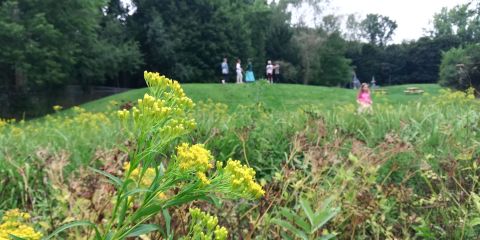
Before she became a famous scientist and inventor, Temple Grandin was a kid who liked to play outside.
“I absolutely loved flying kites,” she said. “We would just make up our own games — go sit in the field and make daisy chains.” All that undirected, childhood play, Grandin believes, amounted to more than goofing off. It was a foundation for her life in the sciences.
Now an animal behavior expert and professor at Colorado State University, Grandin has published more than 60 scientific papers. She is an advocate for people with autism, and in 2010 landed on Time magazine’s annual list of the world’s 100 most influential people.
In her new children’s book “The Outdoor Scientist: The Wonder of Observing the Natural World,” released April 6, she encourages kids to follow her lead into the great outdoors. Time outside, she thinks, helps kindle curiosity that is the essence of science.
“If you are fascinated by clouds or the spots on a ladybug’s back; if you like to split open rocks and see what’s inside, then you’re already an outdoor scientist,” Grandin wrote.
Not enough kids have the opportunities she enjoyed to get dirty, make things and discover their own sense of wonder, she said. “Kids just aren’t outside enough doing it on their own — we need to teach it.”
That’s why she’s asking adults to throw open the doors and send kids outside. Her book, which includes ideas for hands-on projects children can do in nature, joins a chorus of advice from researchers and psychologists who insist kids need outdoor time to thrive.
Here’s why it’s important and how to get started, even if your kid would rather stay on the couch.
How getting outside helps children learn
Until recently, the connection between learning and exposure to nature was poorly understood, wrote Ming Kuo, associate professor of natural resources and environmental sciences at the University of Illinois Urbana-Champaign, in a recent review paper. Everyone thought nature was good for kids, she wrote, but they didn’t have robust research to support the thesis.
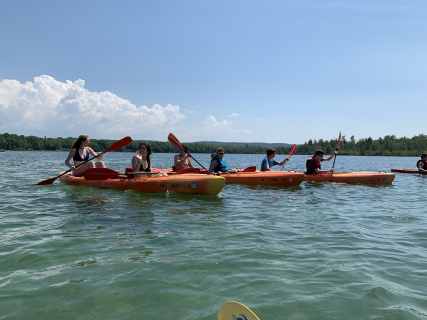
Now, that’s changing. Analyzing dozens of studies, Kuo found strong evidence that exposure to nature promotes attention and relieves stress. It boosts self-discipline and motivation. It’s tied to physical fitness, and also increases kids’ autonomy. The positive effect doesn’t require trips to faraway places, the research found. Just adding green spaces and trees to urban schools makes a real difference. Exploring natural areas outside of school can really help, though, whether it’s a trip to a city park or time in the closest patch of woods.
“Children are able to be more imaginative and engage in more pretend play when they’re in unstructured nature play areas,” said Kylie Dankiw, a researcher at the University of South Australia and author of a 2020 review paper on the benefits of playing outside.
Kids playing in natural areas engaged in more of what Dankiw called “cognitive play,” where they use their imaginations to create their own games. “Imaginative play is really important for developing social skills, interacting with other people and problem solving,” she said.
Playing in the dirt could lead to making scientific breakthroughs
What should kids do with all that outside time? It can be as simple as laying around in the grass, finding the beauty in insects, plants and clouds. “Just playing freely in and with nature,” Dankiw said, “where the child chooses what they want to do and how they want to play.” Outdoor time, in other words, doesn’t need to be structured.
If you want to offer your kid some inspiration, however, Grandin’s book includes 40 child-friendly projects, some that engage young readers with scientific principles. Kids
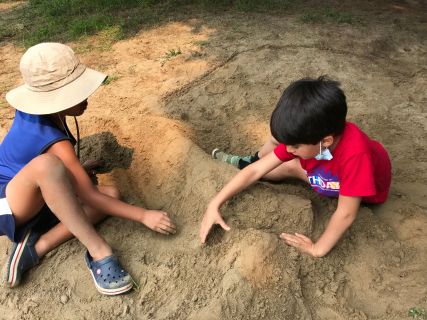
can make a model rocket powered by baking soda, for example, or craft a pine cone bird feeder to hang from nearby trees or an apartment window.
You never know where the project might lead. Many scientists, Grandin wrote, have followed their childhood interests to a life of discovery, and she shares some of their stories in the book.
As a child in 19th-century England, Mary Anning joined her siblings to collect seashells near the cliffs of Lyme Regis. That’s where, at 12 years old, she helped uncover the first complete Ichthyosaurus skeleton. The momentous find led to a life in paleontology.
In the United States, a young B.F. Skinner spent his childhood in the woods around his Pennsylvania home, fascinated by the antics of birds, butterflies and chipmunks. After years of study, Skinner’s childhood interests would transform the field of animal behavior.
It’s not that they knew, as children, that their interests would endure a lifetime. Grandin didn’t, either. “I also had no idea that all the stuff I loved doing as a kid would come to inform my life’s work,” Grandin wrote. “I had no idea what I wanted to be when I grew up.” For Grandin and other scientists, though, playing outdoors turned out to be a life-changing opportunity.
Getting your child out the door
Of course, not all kids actually want to go outside. With the right approach, though, psychologist Mary Alvord of Rockville, Maryland, said parents can do a lot to encourage positive experiences in the natural world.
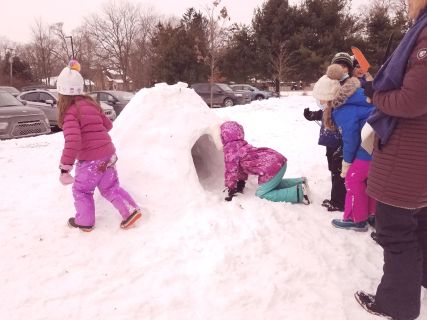
It helps to make it part of your family’s routine. “When my kids were young, they would come home from school, have a snack, then it was like: ‘All right, you have to go outside and play before you start anything else,’” she said. “From the start, it’s about setting the expectation that there is outdoors time.”
If that isn’t already on the family schedule, Alvord suggested parents be open and honest about wanting to make a change. Call a family meeting and make it a conversation, she said.
“Say, ‘We want to start putting in outdoor time — what would you like to do outside? What are some things we could do either as a family, or you could do by yourself, or with a sibling or with friends?’”
When introducing more time outdoors, Alvord said parents may have to do some reframing to get kids on board.
“The frame is: How can you make it appealing and fun?” she said. If it’s cold and rainy outside, that might mean presenting the day as a chance to jump in puddles or look for frogs. Every season, Alvord said, brings changes that can engage children’s curiosity.
If your child says she doesn’t want to go out because she’s doing something else, Alvord suggested giving her a chance to wind down. “Say, ‘Our outdoors time starts in 15 minutes,’” she said, so they can finish a game or wrap up another activity.
Parents’ attitudes count for a lot, Alvord said, which may mean getting out of your own comfort zone even as you’re encouraging your child to head outdoors. Try rethinking your attitude toward “bad” weather or getting dirty, for example. And if you’re hoping to nurture your child’s sense of wonder at the natural world, it could help to reconnect with your own, whether you’re watching the stars, going for a hike or just feeding birds in a nearby park.
“It’s not ‘do as I say,’ it’s ‘do as I do,’” she said. “Kids learn from us by seeing what we do.”
The Importance of Parent Education
Raising children who will become happy, healthy, thriving adults is one of the most challenging and important roles anyone can have. At Rudolf Steiner School of Ann Arbor, we engage not only the student but their families as well. We believe in meaningful relationships, where our trained teachers work with families over multiple years to understand how to best support each child. Our in-depth narrative grading system, our ongoing adult education and volunteer opportunities, and our rich cultural and festival life all serve to create a welcoming community where families feel supported and engaged.
This article by Tracy Trautner was originally posted by Michigan State University Extension
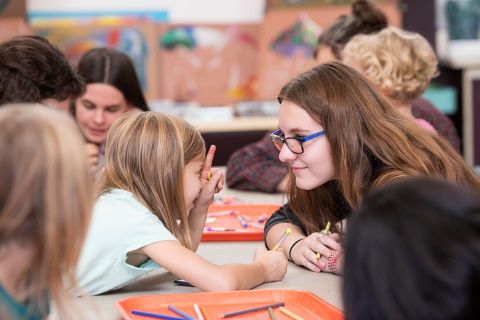
Parenting, for many, is the most important and challenging job to ever have and a role that gets little recognition. Parents and other primary caregivers of all types (foster parents, grandparents, adoptive parents, etc.) can all use an opportunity to learn tips and new strategies to relate with our children and enjoy being with them. It also allows an opportunity to engage with other parents that may be having similar issues and struggles.
Today, there are new parenting challenges to overcome. Skills, routines and values were passed from generation to generation and parents could rely on networks of support to help them parent. Compared to past generations, many parents and families have become isolated and are raising children in silos. These parents are trying to figure it out alone. The skills a child needs to be successful have changed as well.
Over the years, each generation sees a change in what society considers parenting issues. Currently, families struggle with behavior management issues including lack of expectations, child supervision and excessively severe and inconsistent punishment on behalf of the parent. According to John Geldhoff, an Oregon University assistant professor of behavioral and health science, all parents—high income, low income, mandated and non–mandated—can benefit from evidence-based parenting education. Parents who have attended classes and learned effective discipline and parenting techniques report having children with higher grades, fewer behavior problems, less substance abuse issues, better mental health and greater social competence.
Parenting education programs offer support and education that can address issues and make parenting easier, more enjoyable and can strengthen a child’s ability to thrive. Building Early Emotional Skills in Young Children is one of many parenting programs offered by Michigan State University Extension. Many other reliable sources of information for parents are available to meet their needs. Resources are readily available online through YouTube videos, research-based websites, in person, podcasts, blogs and books that are readily accessible. Before you engage with a parenting resource, check the source of the information to be certain it is research based and reputable.
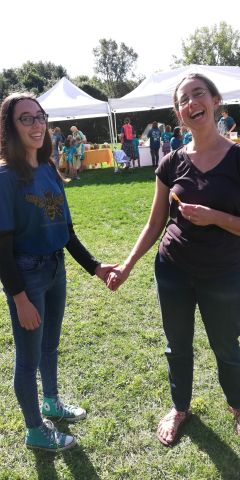 Your child’s childcare center or school, community center, or local library may offer in-person trainings. In-person parent education allows parents the options to ask pertinent questions to their situation and potentially meet other parents to share stories with. A frequent issue that is brought up is relatable to everyone in the class, quality discussions begins, and ideas are shared. Online classes may also offer valuable opportunities to explore materials at your own pace and connect virtually with other parents.
Your child’s childcare center or school, community center, or local library may offer in-person trainings. In-person parent education allows parents the options to ask pertinent questions to their situation and potentially meet other parents to share stories with. A frequent issue that is brought up is relatable to everyone in the class, quality discussions begins, and ideas are shared. Online classes may also offer valuable opportunities to explore materials at your own pace and connect virtually with other parents.
Parenting education can be seen as something negative, like it is a reflection on your ability to parent. Parenting education is not just for parents who are struggling or having severe problems with their children’s behavior—it can be an opportunity for parents to feel more confident as a parent, prevent future problems, enjoy being with their children and help their family get along.
We may invest time and money to take our new puppy to obedience class, take golf lessons or practice our swing, or take our family out to eat or on vacation as a way to invest in ourselves and our families. Similarly, parenting classes are an investment in our personal growth and our children’s future ability to build healthy relationships, make and retain friends, get a job and keep it, and become great parents themselves.
To find more valuable, research-based information about parenting, check out the following resources:
School Trips as a Rite of Passage

Our 8th grade class recently returned from its annual class trip, a 10-day wilderness adventure in New England. This 8th grade trip is a rite of passage for students, the culmination of progressively longer and more adventurous excursions undertaken by the class teachers and students over the years.
At Rudolf Steiner School of Ann Arbor, we strongly believe these class trips are a vital part of the student experience. They foster a connection with the outdoors, offer opportunities for teamwork and class camaraderie, give some students an experience they might otherwise never have, and teach responsibility and self-knowledge. They also provide moments of joy, life-long memories, and shared experiences that further cement the bonds among the students.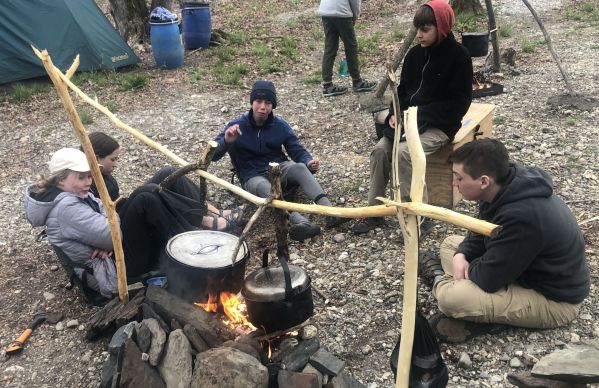
Typically, a class’s first overnight trip takes place in 3rd grade, where the class spends a night at a farm. This supplements the in-class work of 3rd grade, where students learn about farming, shelters, and ways people have lived and survived throughout history. By the time they reach middle school, the students have been on several overnight trips. In the middle grades, they spend a few nights in a dark-sky area as part of their astronomy studies and travel to Hocking Hills, Ohio, to further their lessons in mineralogy and geology.
The 8th grade trip is a wilderness adventure experience. RSSAA has generally used two organizations to help us with this experience: the Northwaters & Langskib camp based out of Temagami, Ontario or Kroka Expeditions, based out of Marlow, N.H. Each offers a program of canoeing and camping that challenges the students physically; requires them to work together to set up camp, cook food, clean dishes, take care of the canoes, etc.; and provides an opportunity for self-reflection, community sharing, and social and emotional growth. These trips are usually undertaken at the start of the school year, or even before the school year officially begins, as they are an excellent way to launch the class into their last year together before high school.
As an 8th grader teacher, I have experienced both the Northwaters and Kroka experiences — both were incredible and so important for my students. Last year, my class went to Kroka and paddled down the Battenkill River from Vermont to New York — the same path taken by this year’s group of 8th graders. My class enjoyed the challenges posed by canoeing along a swift-moving river — we had to navigate rapids, hairpin turns, fallen trees, lots of rocks, and ever-changing water depths. Despite the challenges, there is little to compare to the feeling of navigating your way down an isolated, scenic river, seeing birds and other wildlife on the shores, discovering the best place to pitch a tent, staring a fire and making food for your class, and chatting with friends by the fire as the stars emerge.
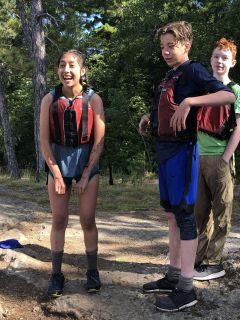 As is the intent of a rite of passage, when a class returns to school following these trips it is evident how much the students have grown, both as individuals who confronted and overcame their own personal challenges on the trip, and as a group who discovered strengths and vulnerabilities in their classmates they never knew before and who return with a shared experience that belongs only to them. Each year there is inevitably a student or two who do not want to take on the expected rigors of the trip, but upon return they are always glad they did and many say they now feel like they could accomplish anything!
As is the intent of a rite of passage, when a class returns to school following these trips it is evident how much the students have grown, both as individuals who confronted and overcame their own personal challenges on the trip, and as a group who discovered strengths and vulnerabilities in their classmates they never knew before and who return with a shared experience that belongs only to them. Each year there is inevitably a student or two who do not want to take on the expected rigors of the trip, but upon return they are always glad they did and many say they now feel like they could accomplish anything!
While the 8th grade trip is in many ways the culmination of these experiences in the grades and middle school, these types of trips continue for students at our high school. Ninth graders end their freshman year with a week at the Community Farm of Ann Arbor, while 10th graders take the knowledge they learned during their sophomore year for a week-long land surveying expedition at Camp Lookout on the northern shores of Lake Michigan. Seniors wrap up their RSSAA journey with two amazing adventures: a Zoology trip to Hermit Island, Maine, where they explore the flora and fauna of the ocean and tidal pools; and an adventure in Venice, Florence, and Rome, where they explore the artists, writers, and thinkers they learned about in the classroom for so many years.
These trips are a cherished and important part of our curriculum. I believe they play a central role in helping our graduates to be well-rounded citizens of the world, with the self-confidence to take off on their own life adventures.
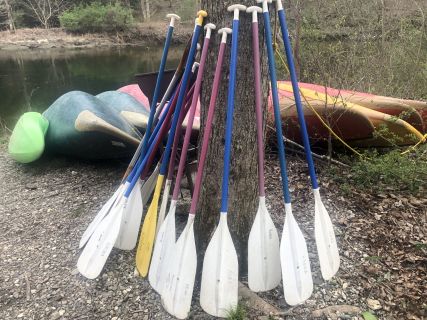
International High School Students Find a Community at RSSAA
 Motivated students and families from around the world look for immersive experiences at American high schools where they can learn English, absorb American culture, and prepare for post-secondary education at English-speaking institutions. As the Waldorf movement continues to grow around the world, some international parents are looking for a Waldorf high school experience when their own country doesn’t have a program established. At the same time, there are international families who have never known about Waldorf education, but appreciate the liberal arts curriculum, community feeling, and host-family experience the Rudolf Steiner High School offers. Over the past 18 years, 75 international students have found their way to Steiner High school and have emerged with skills and relationships that have prepared them for their next steps in life.
Motivated students and families from around the world look for immersive experiences at American high schools where they can learn English, absorb American culture, and prepare for post-secondary education at English-speaking institutions. As the Waldorf movement continues to grow around the world, some international parents are looking for a Waldorf high school experience when their own country doesn’t have a program established. At the same time, there are international families who have never known about Waldorf education, but appreciate the liberal arts curriculum, community feeling, and host-family experience the Rudolf Steiner High School offers. Over the past 18 years, 75 international students have found their way to Steiner High school and have emerged with skills and relationships that have prepared them for their next steps in life.
Mary Zeng (’21) deeply appreciates her experience here. What was important to her, and her family, was to find a school that assisted her learning English along with broad academic coursework. Thanks to our smaller classes, she was able to form supportive relationships with her teachers that continue today. Her immersion in American culture with a Rudolf Steiner School of Ann Arbor high school family both dramatically increased her acquisition of English and gave her a caring environment to navigate her high school years. She sees the relationships she built with classmates, her host family, and the wider Ann Arbor community, as her home-base in America as she attends University of Massachusetts - Amherst.
When Vivian Wang’s (’17) parents were trying to find an American high school for her to attend, they were looking for a good experience both with an English-speaking family - so she could learn the language and culture - and an academic setting that appreciated both the sciences and the arts. Vivian’s host family had a 1-year-old child and they loved getting to know Vivian and  helping her study for classes and learn English. She continues to stay in touch with them and they even helped her move to Atlanta to attend Georgia Tech. Vivian also appreciated the strong relationships she had with her teachers, where she was encouraged to ask questions and be proactive in her learning.
helping her study for classes and learn English. She continues to stay in touch with them and they even helped her move to Atlanta to attend Georgia Tech. Vivian also appreciated the strong relationships she had with her teachers, where she was encouraged to ask questions and be proactive in her learning.
For Irene Zhang (’21), two of the reasons she came to RSSAA were to continue studying at a place that was more artistically oriented, and finding a home-life experience in a city that was safe. In Ann Arbor, she lived with a Chinese-American family who had small children and she had a marvelous experience. She became a part of their family, and they treasured the opportunity to learn from her. She looks forward to visiting them during breaks from her studies at Tufts University.
The host-family experience is just as rewarding as the educational. For many, the international student becomes a part of the family, participating in their customs, meals, and celebrations. Irene’s host mother, Bing Li, found the hosting experience wonderful for her family with two young children. During the pandemic, they got to spend even more time with Irene and she truly became part of their family. High school families enjoy a peer-to-peer experience that can enhance the high school years for their own student as well as their guest student. Some past host families are looking forward to hosting another international student when the opportunity arises.
The city of Ann Arbor is attractive to many international students because of its safety, a large international community (especially for Asian students) and being within the vicinity of the University of Michigan. For a teenager, Ann Arbor provided 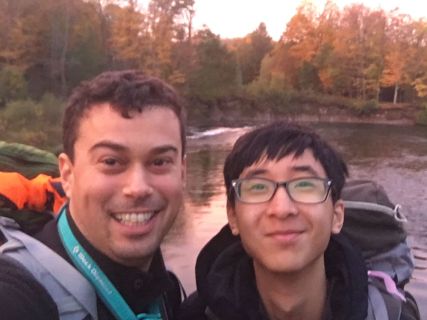 outlets beyond school to connect with others. Mary took tennis lessons at a local club and explored the various teen locales in the region. Irene attended UM football games with friends and immersed herself in artistic experiences. Learning soccer was exciting for Vivian, and she found the coach very helpful and her teammates welcoming. Students also can participate in a variety of after-school clubs, like Model United Nations, that connect them in new ways to their American classmates.
outlets beyond school to connect with others. Mary took tennis lessons at a local club and explored the various teen locales in the region. Irene attended UM football games with friends and immersed herself in artistic experiences. Learning soccer was exciting for Vivian, and she found the coach very helpful and her teammates welcoming. Students also can participate in a variety of after-school clubs, like Model United Nations, that connect them in new ways to their American classmates.
International students at RSSAA also form bonds with each other as they take English as a Second Language (ESL) classes, led by skilled ESL teachers who become a reliable support-system to complete their academic coursework. For some students, these teachers become a sounding-board for other questions or concerns they have during the school year.
Our international students have found a well-balanced program at RSSAA that brings the warmth of a family experience while undertaking an American high school education. For international students and host families alike, an impactful, life-changing experience can happen, and relationships are created that can continue years after graduation!
If you're interested in learning more about how you can help create an amazing experience for an international student, please reach out to Sian Owen-Cruise at sowen-cruise@steinerschool.org.
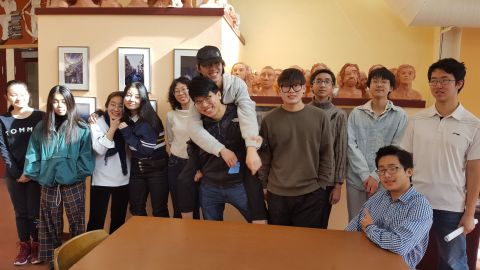
A Beautiful Experiment (Italy Part 2)
A beautiful experiment: 17 high school seniors, 5 teachers, and Venice, the floating city. Ms. Efimova, our high school art teacher, had the original idea, an “art trip…with sketchbooks.” After nearly a year of preparation, our plane left Detroit Metro Airport for Venice. It was March, 2001. Twenty trips later, the Italian Journey has become a cherished tradition for the seniors at Rudolf Steiner High School. Spring arrives in Italy, and our Italian friends wait impatiently for us to arrive. They deeply appreciate our students’ joyful laughter, heartfelt curiosity about Italy, thoughtfulness, kindness, singing, and gorgeous drawings. One of our guides has said, “No one on earth travels like this school”. It is true. We are not tourists at all, but thinkers and artists open to the possibility of surprising transformations. In a way, the experiment continues, with amazing results year after year.
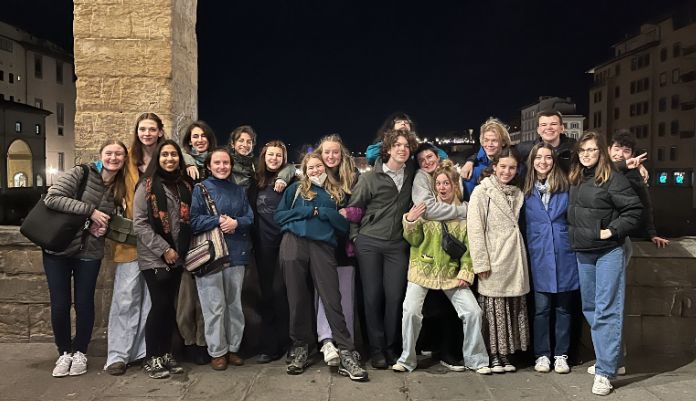
No one on earth travels like this school.
 Venice, Florence, and Rome are our three muses now, with, when possible, the sweet addition of Orvieto, Lucca, Fiesole, Verona, or Vatican City. We begin in Venice. It is impossible to imagine this most improbable of cities until we sit in the rocking boat which takes us to the main islands of Venice. Arriving by sea has been the custom for about 1500 years. We disembark and the students gasp. “It is unreal!” “The buildings are older than a forest!” “There are no cars, and I hear just the water!” “It is a dream.” The changing colors and the continual movement of the water are mesmerizing, “quasi una fantasia”, almost like a fantasy. That’s the tempo marking for Beethoven’s “Moonlight Sonata”. If you cannot fly to Venice right this moment, try listening to that well-known piece. It will comfort you! This is the city married to the sea, but also the city where Galileo demonstrated his telescope for the Doge from the top of the bell tower. Optics and acoustics. A Scientific Revolution on the way.
Venice, Florence, and Rome are our three muses now, with, when possible, the sweet addition of Orvieto, Lucca, Fiesole, Verona, or Vatican City. We begin in Venice. It is impossible to imagine this most improbable of cities until we sit in the rocking boat which takes us to the main islands of Venice. Arriving by sea has been the custom for about 1500 years. We disembark and the students gasp. “It is unreal!” “The buildings are older than a forest!” “There are no cars, and I hear just the water!” “It is a dream.” The changing colors and the continual movement of the water are mesmerizing, “quasi una fantasia”, almost like a fantasy. That’s the tempo marking for Beethoven’s “Moonlight Sonata”. If you cannot fly to Venice right this moment, try listening to that well-known piece. It will comfort you! This is the city married to the sea, but also the city where Galileo demonstrated his telescope for the Doge from the top of the bell tower. Optics and acoustics. A Scientific Revolution on the way.
Quasi una fantasia.
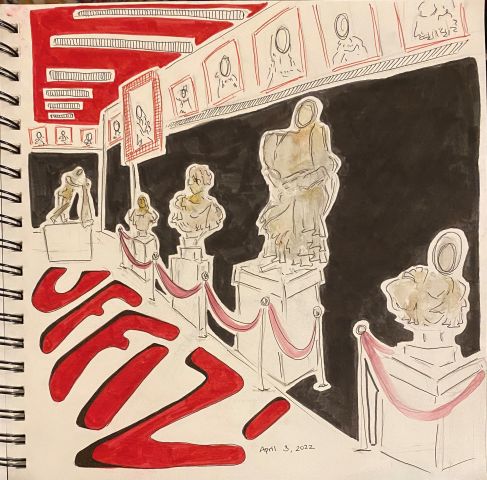 Water gives way to solid ground. We arrive in Florence, a city of prose and poetry, individualism and competition, science and art, dark buildings and sun-drenched courtyards. An Italian proverb states that spring has arrived “when you can step on nine daisies at once.” At the convent that has been our home in Florence these many years, we are greeted by both the nuns, and the garden daisies. Within moments, our students are weaving garlands for their hair. Then to sketch Michelangelo’s “David”! We walk in his footsteps, and Dante’s, and Brunelleschi’s, and Leonardo’s and again, Galileo’s. Academic lessons happens in tiny bursts. Here is the corner where Michelangelo and Leonardo argued, there is Dante’s street, that’s where Botticelli burned his paintings (fortunately not all of them). The intrigue, the excitement, the stupendous discoveries of Renaissance Florentines continue to resound. The cast of characters has changed, but the stage sets are all still there.
Water gives way to solid ground. We arrive in Florence, a city of prose and poetry, individualism and competition, science and art, dark buildings and sun-drenched courtyards. An Italian proverb states that spring has arrived “when you can step on nine daisies at once.” At the convent that has been our home in Florence these many years, we are greeted by both the nuns, and the garden daisies. Within moments, our students are weaving garlands for their hair. Then to sketch Michelangelo’s “David”! We walk in his footsteps, and Dante’s, and Brunelleschi’s, and Leonardo’s and again, Galileo’s. Academic lessons happens in tiny bursts. Here is the corner where Michelangelo and Leonardo argued, there is Dante’s street, that’s where Botticelli burned his paintings (fortunately not all of them). The intrigue, the excitement, the stupendous discoveries of Renaissance Florentines continue to resound. The cast of characters has changed, but the stage sets are all still there.
Grand Finale! Urbs Aeterna: The Eternal City. Rome! The scale is immense. The architecture, in ruins or intact, is magnificent, the vistas are glorious. Mosaic, paint, marble, bronze, gold, and ancient, perfect, concrete compete for our attention. Archeological work is everywhere. After all, 80% of Rome is still buried underground, and someone must dig it up! This city is modern and ancient and medieval and Renaissance and Baroque all at once. How can we make sense of it? Our beloved guide weaves a tapestry of stories while we walk together. She does it so wonderfully that sometimes we cry. Her stories are timed to our steps through the streets. It is her unique form of choreography. Genius, truly. We are enriched and at home. She has given us the keys to the city.
 Our Italian Journey comes to a close for another year. Almost 450 students and teachers have traveled to Italy with Rudolf Steiner High School. Every single one has left an imprint. All have strong memories, sketchbooks and a connection with the world and each other that cannot be created in the classroom alone. We're honored to be able to offer this unique experience to our students and grateful to all who have been a part of it. Grazie Mille! Deepest thanks to all who have made this beautiful idea an even more beautiful reality!
Our Italian Journey comes to a close for another year. Almost 450 students and teachers have traveled to Italy with Rudolf Steiner High School. Every single one has left an imprint. All have strong memories, sketchbooks and a connection with the world and each other that cannot be created in the classroom alone. We're honored to be able to offer this unique experience to our students and grateful to all who have been a part of it. Grazie Mille! Deepest thanks to all who have made this beautiful idea an even more beautiful reality!
(We'd like to express our regret to the classes of 2020 and 2021 who, due to the pandemic, were unable to experience Italy in this way.)
Please Enjoy Our YouTube Video
Our Return to Italy (Part 1)

Despite the trepidation we all felt in planning for this trip during the ongoing pandemic, after two years without it we felt more sure than ever about the value of this capstone experience to our senior students, and we charged ahead. It took many months to plan and we had multiple scares with the vagaries of the flight and tour schedules, the worry over possible loss of accommodations due to COVID, and the additional work of verifying and collecting vaccination information and ongoing COVID testing for all students and chaperones, but everything fell into place. Before departing, students had a week and a half of intense preparation where they learned in-depth history and the curriculum context of the places they would visit, as well as some Italian phrases. They also had some time to practice live sketching. The careful planning of the trip - both curricularly and logistically - paved the way for a smooth and enriching experience for all the students.
The trip was seven nights: three in Venice, two in Florence, and two in Rome. Students visited important art and historical sites and were required to capture their trip via drawings and written reflections in their sketchbooks.
Upon their return, each student highlighted a meaningful Italy moment during an all-school assembly, including:
- Being outside of the USA for the first time and experiencing all the differences and surprises
- Going on group night walks in Venice and seeing the difference between the busy day time and serene night time
- Experiencing St. Peters Basilica at the Vatican
- Seeing everything we learned in Art History class up close
- The many androgynous-looking statues beautifully displayed in The Uffizi
- Climbing up the Campanile (belltower) in Florence and seeing how beautiful the city looks
- Walking in the footsteps of the many great artists we learned about in school
- Seeing Botticelli’s The Birth of Venus in real life
- Touring the Roman Forum with our guide, Francesca, and reliving ancient Rome
- The restaurants, convents, and hotels where our school has long standing relationships
We are thrilled that the students were able to have these experiences after the disappointment of the canceled trips in 2020 and 2021. The Italy trip, like all of our school trips, is an opportunity for growth unlike what most students have in their day-to-day classes and extracurricular activities. Our class of 2022 students jumped at the chance to experience another culture, to see different ways of conducting daily life, and to consider a different, and much longer, sense of time through the history around them. Our wish is that they continue to lean in to the curiosity they have developed in high school so that they can keep learning and growing.
Join us for an in-depth look at the trip itself in our next Look A Little Deeper blog post!
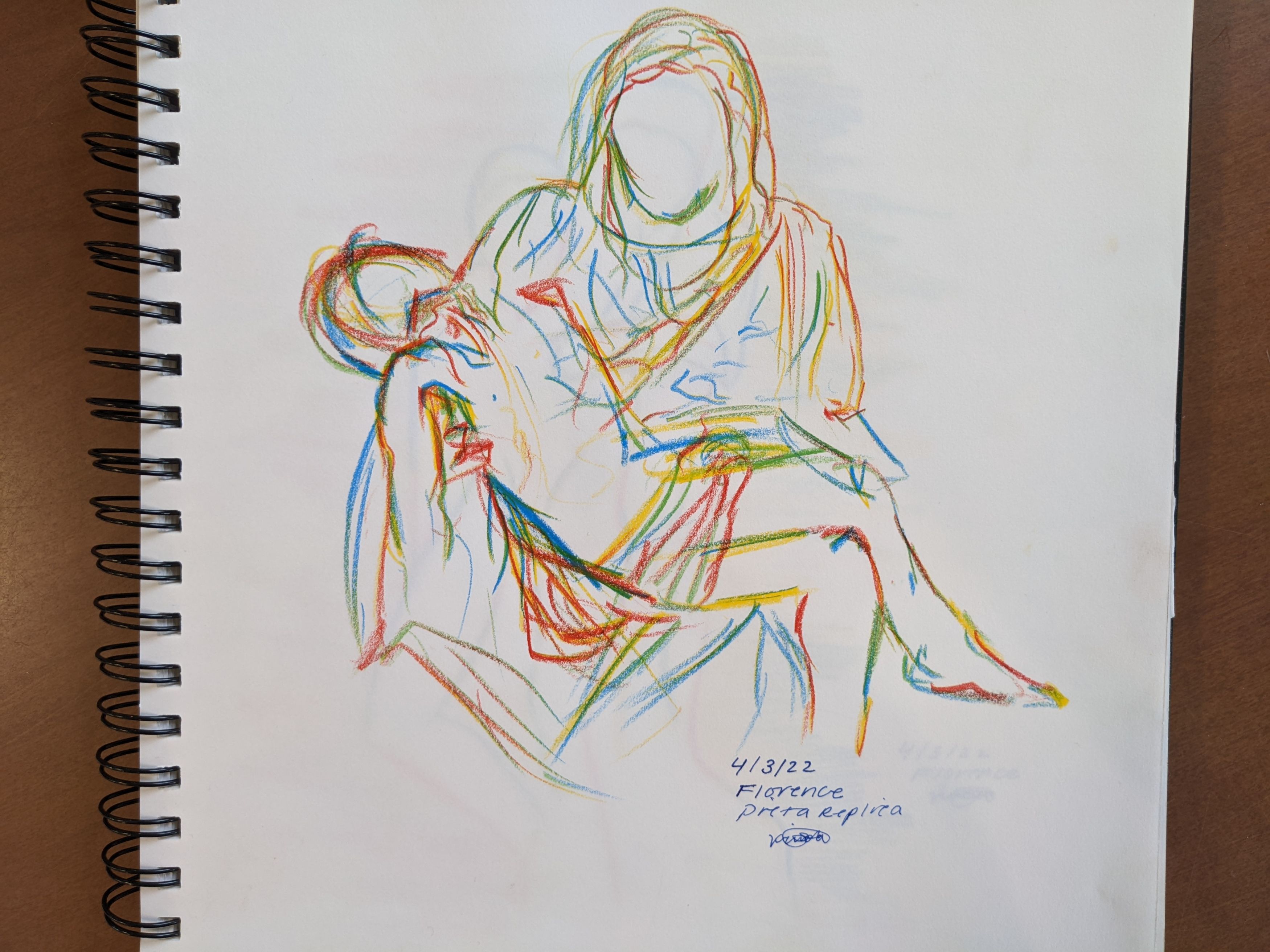
The Beautiful Art of Eurythmy
Becoming a Eurythmist

I am Colombian by birth and moved to Michigan with my family at the age of seven. It may surprise you to read that I am a proud alumna of Rudolf Steiner School of Ann Arbor (class of 2004). It is without a doubt the greatest gift of my life that I had the privilege of receiving a Waldorf Education in Ann Arbor. I attended RSSAA starting in the fourth grade. For nearly a decade after graduating from our high school I worked as a freelance musician composing, recording, organizing tours and performing internationally. During my travels across North and South America as well as Europe, I always made a point of visiting as many Waldorf schools as I could.
In my late twenties, I decided to become a Waldorf teacher and found my way to specializing in eurythmy. Since I had studied German as part of RSSAA's rich and broad curriculum, it was no problem for me to complete my four-year eurythmy training in a beautiful school in NW Switzerland, after which I received a master’s degree in Pedagogical Eurythmy from a university in Stuttgart, Germany. Destiny then brought me and my talented Israeli husband (Yoni Paz, full-time humanities teacher at our high school) right back here to Ann Arbor where it is a joy to continue discovering and deepening my love of Waldorf Education. I couldn’t have imagined a more dynamic and rewarding career than this—becoming a eurythmy teacher!
What is Eurythmy?
I ask myself this question all the time. The word “eurythmy” comes from Greek and literally means “beautiful or harmonious movement”. Whether you have had the opportunity to see a live eurythmy performance, taken part in a class, or have never even heard the word before, you may be surprised to learn that this very special movement art form is just in its infancy! Rudolf Steiner and a young German woman by the name of Lory Maier-Smits (a lively 18-year-old who loved gymnastics and dance) started developing eurythmy together in 1911. Thus, we are just entering the second century of eurythmy’s existence. It is slowly blossoming in many forms across the globe.
Today, there are several different applications of eurythmy that have been developed. This was Rudolf Steiner’s hope! He told the early eurythmists that as they helped develop eurythmy they were all planting seeds that wished to sprout and take many forms for serving and inspiring humanity in the future. The main branches of eurythmy alive and in practice currently are:
- Artistic Eurythmy: performed by professional troupes internationally such as New York’s Eurythmy Spring Valley Ensemble: http://www.eurythmy.org/photo-gallery/
- Therapeutic Eurythmy: an unique and effective therapy modality that is practiced in hospitals, clinics, special education centers, schools and private medical offices in many different countries as a form of treatment for a wide variety of conditions including cancer, depression, digestive issues, teeth and vision corrections, and much more. Here is a link to a helpful article: Spoken and Unspoken Gems of Eurythmy Therapy Dale Robinson, Eurythmy Therapist
- Eurythmy in the Workplace and as a Social Art: an application of eurythmy created to enhance productivity, efficiency, awareness, focus, creativity, resilience, communication strategies, team-building and many other skills for individuals and organizations in professional work environments. https://www.leonorerussell.com/eurythmy/
- Pedagogical Eurythmy: eurythmy specialized in supporting the healthy development and learning processes of children and adolescents at Waldorf Schools all around the world.
Pedagogical Eurythmy
I will give a brief picture of pedagogical eurythmy from my perspective. Eurythmy lessons at school are a jewel of the Waldorf curriculum. Ideally, all Waldorf students - from preschool through 12th grade - would have eurythmy every week, all year long (though this is hard to achieve as the number of Waldorf schools far exceeds the number of trained eurythmists!). These lessons are a time when each student gets to be engaged directly and holistically through graceful, meaningful movement to music, poetry, stories, and geometry.
Eurythmy is often defined as “visible speech and visible music”. There are specific arm, leg, head, and full body gestures that express the different sounds of language, aspects of grammar, and parts of music (tones, chords, intervals, rests, etc.). Waldorf students get to learn many of these gestures along with ways of expressing language and music through group choreographies and exercises.
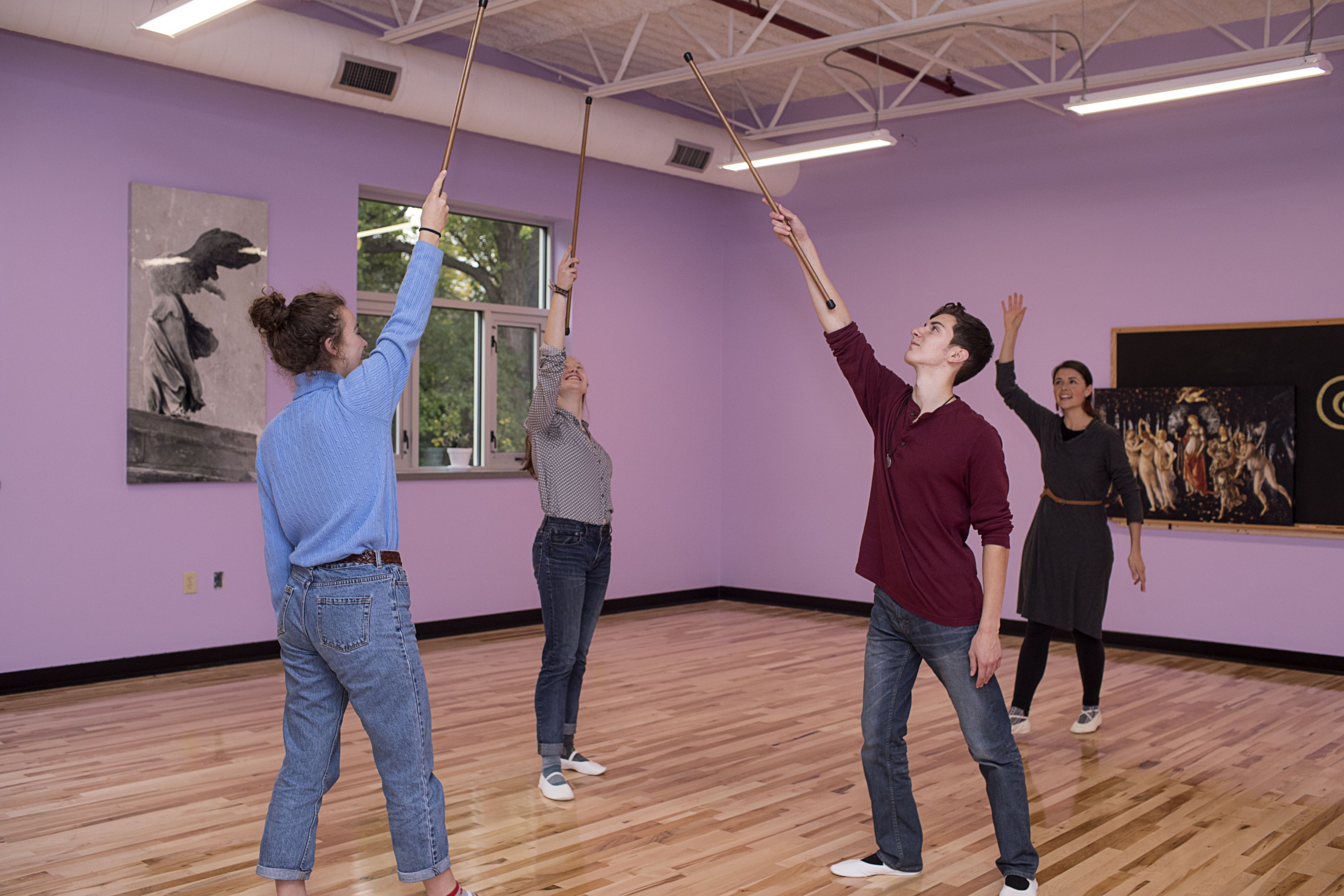
Eurythmy teachers strive to weave the different aspects of their lessons together in artistic and developmentally appropriate ways. The goal is always to support each child’s physical, soul, and spiritual growth in ways that are healthy and inspiring. On the physical level, they learn new gross and fine motor skills, to strengthen their sense of balance, coordination, and agility. Their souls are touched and expanded by the social and creative nature of the eurythmical activities. As they deepen and refine their awareness of and relationships to music and language, the students are provided with opportunities to experience some of the most beautiful forms of human expression we are capable of—ones that define our very human essence, that raise us to our divine spark.
A strong, basic pedagogical eurythmy curriculum for each of the grades has been developed across many countries, in many languages, and is constantly being expanded. It is often referred to as “the heart” of a Waldorf school, as it has a unique and potent ability to harmonize classes on many levels (socially as well as academically). Having eurythmy throughout the years provides students with an orientation in space and time that they create in themselves. This is empowering—it brings a sense of confidence and security in the world.
Eurythmy lessons are meant to be fun, but they are also hard work! For some students it is among the favorite subjects during the week. Other students may complain about eurythmy or claim they dislike it in varying phases of their time at school. This is especially common during adolescence when many are going through great physical changes that can cause them to experience movement as more physically cumbersome than before, while their sense of being watched or feeling exposed is also heightened.

I think both the enjoyment and the struggles students of all ages experience while doing eurythmy arise because eurythmy is very demanding. It can be extremely challenging to refine one’s physical coordination, spatial awareness, musicality, and connection to language SIMULTANEOUSLY! Not to mention, it requires students to work on all of these skills individually as well as collaboratively and cooperatively as part of a group. All of this is precisely what we eurythmy teachers require our students to do and it is a tall order. It is always my hope that each student and each class as a group will be pushed to their growing edge through their eurythmy lessons with me, which I expect to come with its awkward moments as well as well-earned experiences of satisfaction and joy.
In some Waldorf schools in Europe, high school students are required to dedicate a whole semester’s eurythmy lesson time to choreographing, costuming, and performing a eurythmy solo (using all the skills they learned in the years leading up to this) in order to graduate! There are also wonderful traditions in many countries of having older classes create colorful, musical eurythmy performances of fairy or folk tales for the children in younger grades and for school families. I look forward to creating eurythmy traditions of these kinds at our school with time.
Eurythmy at Rudolf Steiner School of Ann Arbor
A unique aspect of our eurythmy program at RSSAA is a growing number of collaborations between me and the high school main lesson teachers. We have designed eurythmy lessons as an enhancement of the science and humanities main lesson curriculum for our 9th-12th graders. These eurythmy-main lesson collaborations have taken place in blocks such as Biochemistry, Cell Biology, Astronomy, Embryology, Zoology and Evolution, Botany and Insects, Art History, Parzival, Dante’s Divine Comedy, and Projective Geometry. My goal has been to provide our high school students with ways of artistically and physically moving key elements of their academic subjects. In other words, I strive to translate some of the quintessential aspects of the academic material they study into eurythmy forms and exercises to provide visual, kinesthetic, and collaborative modes of diving into their course material. This has proven itself to be a fun and successful new development of our high school and I am very excited to continue expanding it with my talented colleagues. My master’s thesis describes some of these collaborations and I am hopeful that a book version of it will be published sometime in 2022.
I welcome your questions (apaz@steinerschool.org) and look forward to gradually growing a robust and unique eurythmy program at Rudolf Steiner School of Ann Arbor over the years to come!
Social & Emotional Heath

Social and emotional skills are vital for a child’s future, and in young children those skills are undergoing great expansion. The child lives in the present moment and in a world of wonder which can make social and behavioral obstacles challenging. Wonderful opportunities present themselves during the child’s time in the classroom and at home, and adults can help support learning while meeting the child at the developmental stage that he or she is in. This topic is at the heart of Waldorf education.
Parents often ask us about strategies and helpful approaches to navigating discipline and conflict. One of the most important aspects that we consider is how the child views him or herself and others.
It is easy to categorize things into good and bad, right and wrong; but human interactions and social relationships are much more complex than that.
Every human being has experienced times in which they have been unkind, insensitive or hurtful. It is in remembering these times and seeing the other person as a striving human being, that we can work through conflict and develop empathy for others. The last thing that we want is a child to begin to feel as though they are a bad person and unworthy of our love and care. One of the things we aim to foster is an environment of inclusivity and seeing others as equally important and valuable.
Each child enters a class with his or her own wonderful gifts and challenges and grows tremendously from what each classmate brings to the group. The world of play offers a child a stage to try on many hats which may manifest in various emotions, behaviors and roles. Children will often work out some social questions and conflicts that they are trying to comprehend through their play. Through observing children's play, adults are given a window into things the child is trying to figure out, which are often questions of morality. 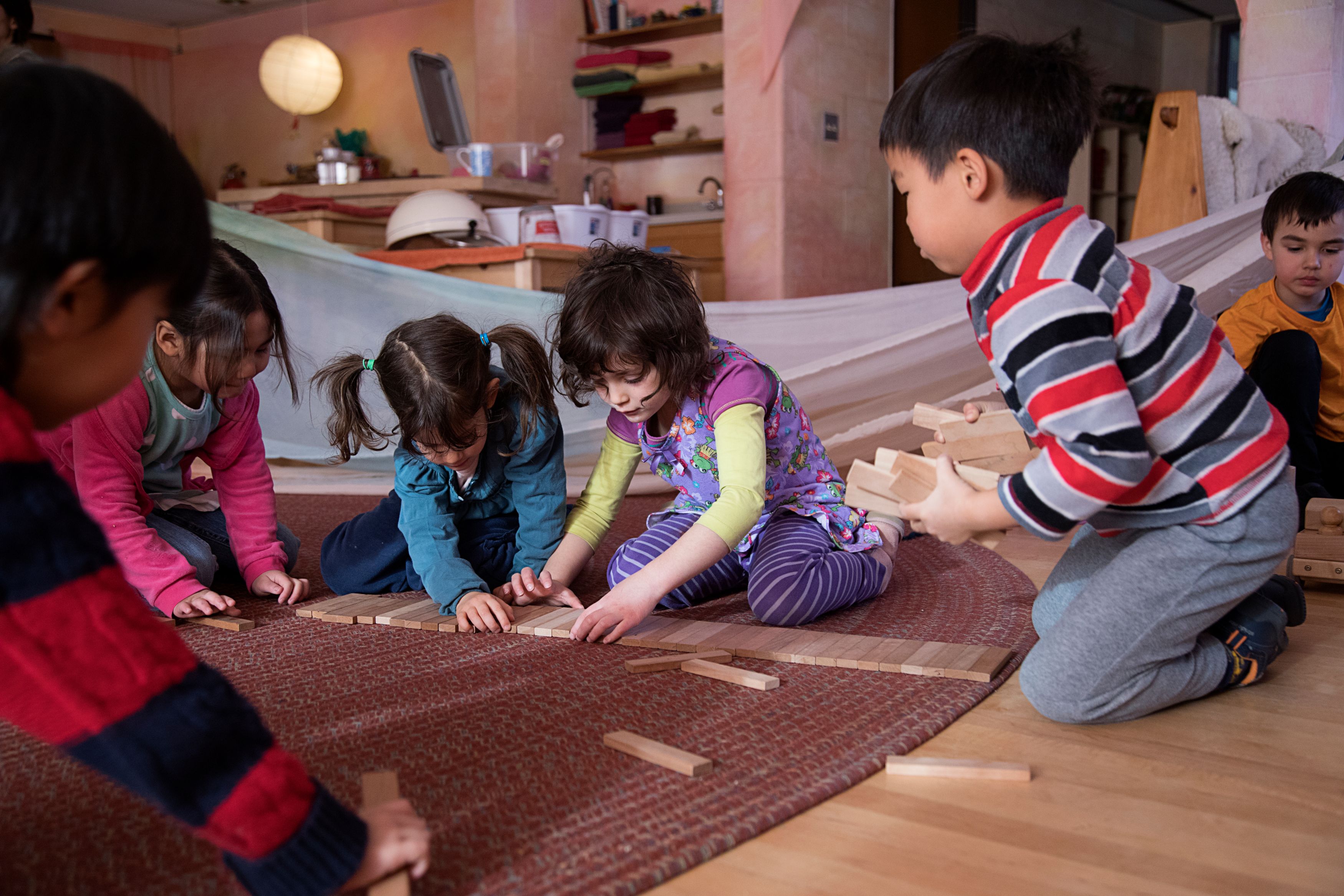
At RSSAA, children are encouraged to work challenges out first on their own to help them develop the foundation of lifelong communication and social skills. This is all done in the safety of a well-prepared and cared for classroom environment. The teacher works hard to maintain this environment while supporting the children in the class and the joys and struggles that they will experience together. At home, it is the same. The environment of family and the values that are set for how to treat one another allow the child a safe place to grow. Sibling interactions can sometimes be extremely difficult, but also tremendously rewarding. The same holds true for the interactions in the classroom.
The adult’s tone is important and should be relaxed and practical, stating observations or asking a needed question.
Approaching conflict without judgement can be one of the most difficult things for adults to do, especially when they clearly see a child do something unkind or hurtful. However, we have found that this is key to creating a space for growth to happen. By observing or sportscasting what you saw, without tones of judgement, a child can feel less defensive and better able to reveal the reasons behind their struggle. This can help take them out of the feelings of fight or flight and into a realm of learning and reflection. By speaking without judgement and describing another’s perspective of what happened, the children start to be able to see another person’s perspective, which in turn develops empathy.
Possible active observer statements:
I saw that Sally had it and Jim grabbed it
I have not heard you ask him for it
I see that Julie has many rocks and Jerry does not have any
Possible prompts:
You may ask him for a turn when he is done
You may talk to her first about that
When we have our coats on, we can go outside to play
When we are sitting and everyone is ready, we will pass the snack
Redirecting and engagement are great tools.
When situations are emotional, sometimes some breathing space and a shift of focus can make a world of difference. Redirecting the focus to a different activity with a child can shift the focus to practical work and engagement. Once the child is ready, the adult can invite other children to join. Often good work can bring two children together with a purposeful task and hard feelings start to dissolve. This could be all that was needed at the time to move past what happened, while other times the child may need this time to come to peace before bringing the conflict up in a way that they can talk about it. As the evening winds down it is easy to recap the day, acknowledging the areas you connected and the struggle that was had.
Acknowledging someone’s feelings can be powerful.
Whether a child is sad, angry or upset, stating that out loud gives the message to the child that you see that something is bothering them and can help them learn about identifying and coping with their emotions. Sometimes it is helpful to recognize the c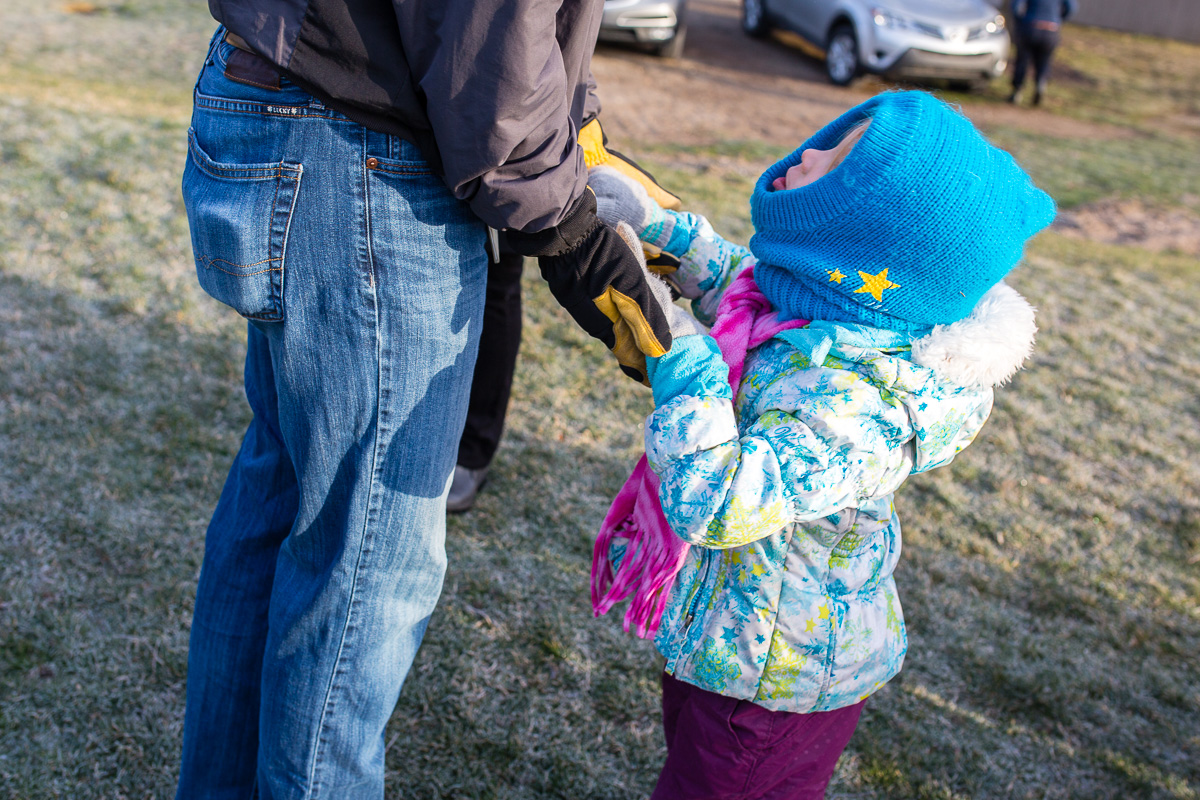 hild’s feelings simply before moving into practical ways to resolve the situation. An adult saying an acknowledging phrase helps the child feel connected to the adult or group. Here are some example phrases:
hild’s feelings simply before moving into practical ways to resolve the situation. An adult saying an acknowledging phrase helps the child feel connected to the adult or group. Here are some example phrases:
It looks like you are upset.
I’m sorry that happened.
That must have felt....
Reconnecting is key.
Showing that you care about a child in the moment of struggle lets them know that you still have a positive view of them and they are valuable. Reconnecting could be as simple as saying: “I know that you are such a kind and loving person. I remember how you found that beautiful rock the other day and brought it home for your brother. It’s okay to get mad, but we need to make sure no one gets hurt.”
Adults make mistakes too: let them see how you handle it!
It is important that the children can see that adults can make mistakes too, and that we are always trying to do our best. We work to be a model worthy of imitation, and that extends to our social interactions with the children and other adults. It is powerful for a child to see an adult make a mistake and then work to fix it, whether it be apologizing or having honest communication with someone.
It is ideal for the child to initiate resolution.
When children have a social conflict, it is ideal for the child to initiate resolution first. Ideally, they will grow the capacities and skills to navigate all the social and emotional struggles that will happen throughout their childhood and adult life. However, sometimes an adult is needed to help facilitate. This is one of the hardest things to get right. Once a teacher starts to see a pattern emerging then he/she moves towards more direct forms of interventions. Otherwise, simple redirection or a listening ear can be just the right tool. Not every moment needs to be talked about with an adult, and sometimes the children can come up with a compromise that is unfair in adult eyes but perfectly fair in theirs. Give them a minute (or a few) to try to figure things out, if it feels safe to do so.
Being accountable is an important thing to learn.
Taking accountability when someone does something wrong can be hard: no one wants to do something mean or wrong to those they love. Accountability without blame can be accomplished if we can help children to feel comfortable in a somewhat uncomfortable situation. Reminding in a firm but loving way that unkind words and actions can and do hurt. This can be truly recognized when the children can be brought together in a safe and productive way through meaningful activities.
Sometimes children need a break from one another in play.
S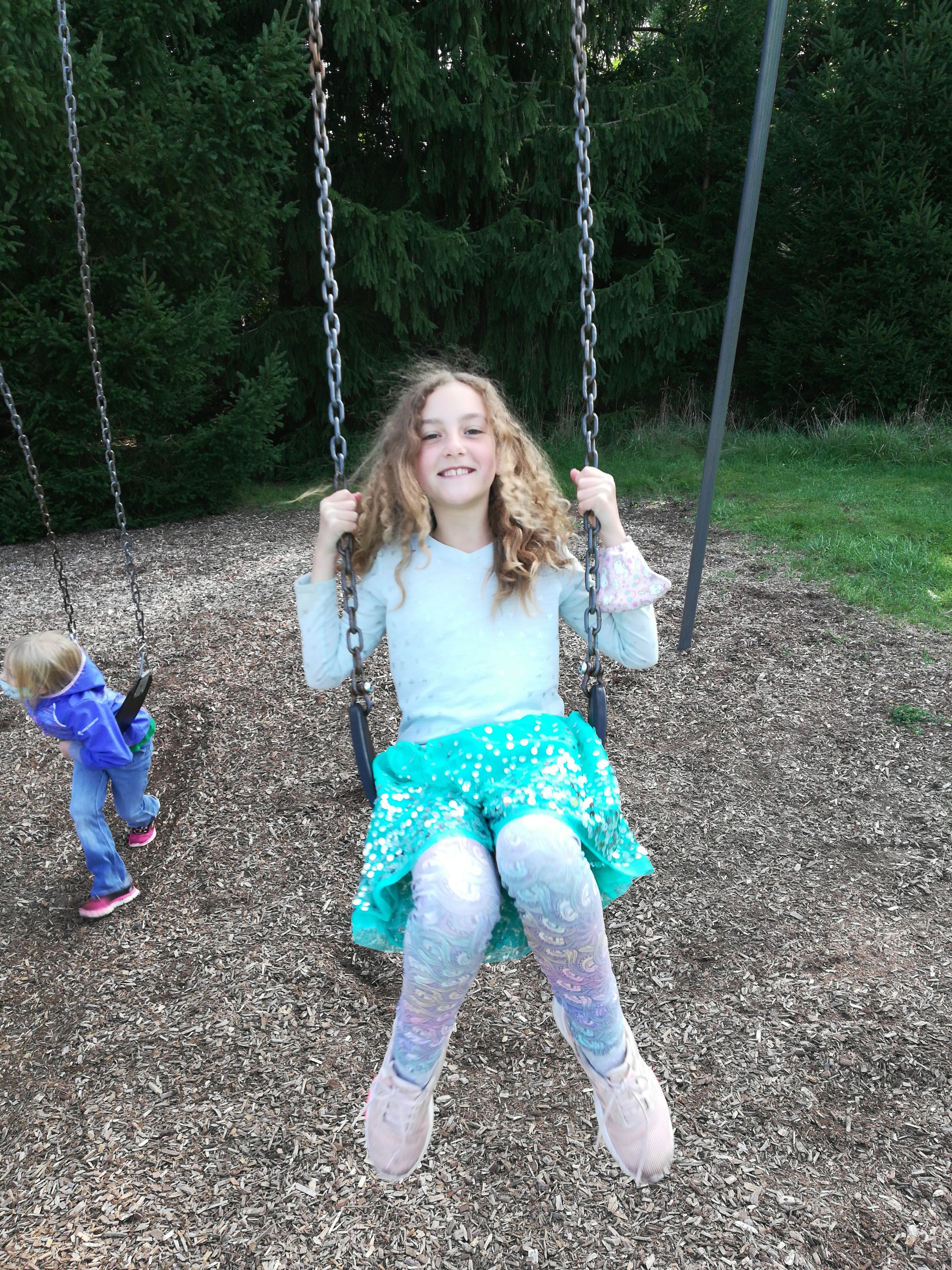 ometimes children can just be in a bad mood and that is okay. We can help their friends find other play options while giving the upset child room to have the quiet space they need to work things through. There are times that children can be purposefully exclusionary and in those situations we can say “We play with everyone”. Sometimes there are children at the stage where they can only play with one or two children at a time, and it's important that we help protect that space for them.
ometimes children can just be in a bad mood and that is okay. We can help their friends find other play options while giving the upset child room to have the quiet space they need to work things through. There are times that children can be purposefully exclusionary and in those situations we can say “We play with everyone”. Sometimes there are children at the stage where they can only play with one or two children at a time, and it's important that we help protect that space for them.
Therapeutic stories work wonders while bringing imagery to situations.
If a problem seems to be reoccurring or to have an underlying impulse, the teacher may decide to bring a therapeutic story to help the child move through the problem in an imaginative way without the child feeling the weight of his/her actions attached. Sometimes a story is told in the moment, where other times it is told to the group many days in a row or sent home with a child to be read before bedtime. This can be easily done at home. They can be stories of animals, little boys and girls or even stories of you as a child. Author Susan Perrow has an amazing collection of already written tales for various behaviors such as: grief, hitting, grumpy moods, or being shy.
An apology should not be forced.
Instead of forcing an apology that is not heartfelt, modeling caring behavior and inviting a child to participate in it can help facilitate healing between children. A child can help fetch a bandage or ice pack, or possibly rub the other child’s back or offer a hug. Depending on the situation, a teacher might give verbal prompts such as “Sometimes if I hurt someone by accident, I say ‘I am sorry, I didn’t mean to do hurt you. It was an accident.’” A child may choose to try a verbal apology or not, but either way the hurt child is helped by this.
Nourishing the physical body.
If a child gets a bump or bruise, a deep breath, a drink of water or bite of food can do wonders. Also, braiding or combing hair, applying lotion or a little massage can bring a child back into their body and help them feel well cared for. Possible tools we can use for comfort are: ice pack, essential oils, rescue remedy, cream, and a bandage.
Adult Reflection
It is important for the adult to later process and reflect on challenging situations in order to get a bigger sense of what happened and what is happening. Tracing the steps backwards to what lead to the issue can help the adult find the catalyst and that can help them avoid the situations in the future.



If you are looking for the best game slots online in Southeast Asia, Rajawali888 or Rajawali888 it will be more interesting
For those curious about the Metaverse, don’t miss visiting our website
If you are looking for Zoho CRM Setup and Customization ,check out our website